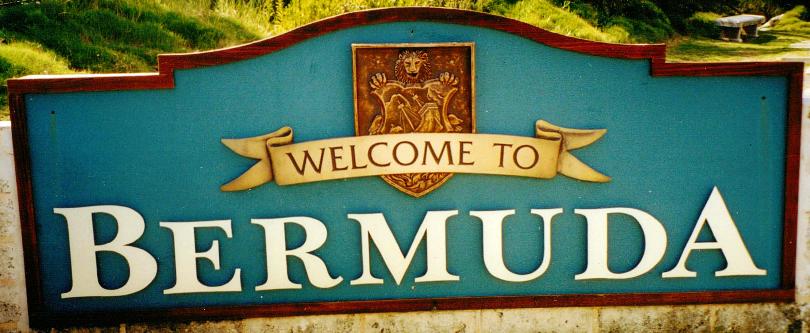
Click on graphic above to navigate the 165+ web files on this website, a regularly updated Gazetteer, an in-depth description of our island's internally self-governing British Overseas Territory 900 miles north of the Caribbean, 600 miles east of North Carolina, USA. With accommodation options, airlines, airport, actors, actresses, aviation, banks, beaches, Bermuda Dollar, Bermuda Government, Bermuda-incorporated businesses and companies including insurers and reinsurers, Bermudians, books and publications, bridges and causeway, charities, churches, citizenship by Status, City of Hamilton, commerce, communities, credit cards, cruise ships, cuisine, currency, disability accessibility, Devonshire Parish, districts, Dockyard, economy, education, employers, employment, environment, executorships, fauna, ferries, flora, former military bases, forts, gardens, geography, getting around, golf, guest houses, highways, history, historic properties, Hamilton, House of Assembly, housing, hotels, immigration, import duties, internet access, islands, laws, legal system and legislators, main roads, marriages, media, members of parliament, money, motor vehicles, municipalities, music and musicians, newcomers, newspaper, media, organizations, parks, parishes, Paget, Pembroke, performing artists, residents, pensions, political parties, postage stamps, public holidays, public transportation, railway trail, real estate, registries of aircraft and ships, religions, Royal Naval Dockyard, Sandys, senior citizens, Smith's, Somerset Village, Southampton, St. David's Island, St George's, Spanish Point, Spittal Pond, sports, taxes, telecommunications, time zone, traditions, tourism, Town of St. George, Tucker's Town, utilities, water sports, Warwick, weather, wildlife, work permits.
![]()
By Keith Archibald Forbes (see About Us).
|
See end of this file for all of our many History files |
1900. Not until this year did the USA and Britain become allies, which is why so many land based forts were built in Bermuda in the 19th century, primarily to defend against not European but American aggression. They and their powerful, long range, hill-top coastline cannons discouraged an enemy from seizing Bermuda. All the forts in the Western Parishes were designed to help protect the Dockyard. It was Britain's Atlantic naval base headquarters from Canada's Great Lakes to the Caribbean and remote islands of the South Atlantic. It was the Citadel of the Western Atlantic and Gibraltar of the West. At the Dockyard three 4.7 inch quick firing modern breech loading guns - mostly to guard against torpedo boats -and four new six inch breech loading guns were mounted on the bastions. Each was supplied by an underground magazine. Under this further improved system, a six inch gun could fire a 100 pound exploding shell for 12,000 yards.
1900. The Causeway is reopened.
1900. The oil docks in Ferry Reach, St. George's Parish, were created in 1900 by the West India Oil Company, a subsidiary of the Standard Oil Company of New York owned by the Rockefeller family.
1900. Birth in Cambridge, Massachusetts, of Alice Margaret Kennedy who, at the age of 18, entered a Roman Catholic convent, became Sister Jean deChantal Kennedy of the Sisters of Charity and later taught at Bermuda's Roman Catholic Mount St. Agnes Academy where she became a Bermuda schoolteacher, choir director, artist, historian (as a member of the Bermuda Historical Society), librarian, environmentalist (as a member of the Bermuda National Trust), wrote her own plays and was the author of Bermuda books that included Bermuda and the French Revolution (which won for her first prize at the 350th Anniversary celebration in 1959); Biography of a Colonial Town; Bermuda's Sailors of Fortune; Frith of Bermuda, Gentlemen Privateer; Isle of Devils; Bermuda Hodge-Podge and Bermuda Book of Pirates. On retirement from the teaching profession, it is believed Sister Jean went to live at the Sisters of Charity retirement home at 125 Oakland St, Wellesley, MA, where she narrowed her activities to writing and keeping abreast of modern Biblical research.
1900. West Indian workers were brought to Bermuda to work on the construction of the dry dock at the Royal Naval Dockyard.
1900. Bermuda's Parliamentary Election Act 1900 restricted voter rights specifically to male property owners only.
1900. December 23, Reginald Fessenden transmitted intelligible speech by electronic waves from Cobb Island in the Potomac River. The next day, he did so from Brant Rock, MA to ships in the Atlantic and Caribbean. With his Bermudian connections, he was a father of radio.
1901. January 1. A Bermuda Parliamentary Election Amendment Act confirmed that the right to vote in general elections and the eligibility to run as candidates for the House of Assembly were limited to property-owning males. On the surface, this appeared to be a conservative male reaction to the earlier unsuccessful attempts in 1895 and 1896 to give females the same voting rights as men. However, when the Women's Property Act 1901 was enacted shortly thereafter, it gave qualifying male property owners the exclusive right to use their wives' property to qualify for the vote.
1901. February. HMS Hotspur, after being retired from distinguished Royal Navy active service became a coast defence and port guard ship at the Royal Navy Dockyard, Bermuda. She was a Victorian ironclad ram - a warship armed with guns but whose primary weapon was a ram. She was built at Govan, Scotland by Napier, launched 19th March 1870 and completed 17th November 1871. She was commissioned at Devonport in 1871, and remained in reserve until 1876. She was similar in layout to Monitor HMS Glatton. She was an armored gun house with four gun ports. This was built instead of a turret as it was believed that the turret would not withstand a ramming. She served with HMS Rupert in the Sea of Marmara during the Russo-Turkish war of 1878. She then returned to Devonport, where she remained until her major reconstruction between 1881 and 1883. Her only active service thereafter was with the Particular Service Squadron of 1885. She was guard ship at Holyhead until 1893, was again in reserve until 1897, and was posted thereafter to serve as guard ship at Bermuda, where she stayed until sold for scrap in 1904. Her armament (after reconstruction in 1883) consisted of a 10ft armored ram, 2 x 12 inch guns, 2 x 6 inch guns, 8 x 3 in quick-firers. 8 x machine guns. Displacement: 4331 tons, Speed: 12.6 knots. Compliment: 209.

HMS Hotspur at Bermuda 1901
1901. Rev. Charles V. Monk bought the Bermuda weekly newspaper New Era and Home Journal published from 1881 to 1884 by Mr. Spedon and ran it until 1905.1901. At Dockyard, the Royal Navy incorporated tiny Sober (Cross) Island into the land-based South Western Breakwater. By doing so, it created a natural defence against the sea, to plug what had earlier been an obvious breach of defences there. In the process, the Royal Navy approved the change of name from Cross to Sober Island to stem the outbreaks of drunkenness among the crews working on the project.
1901. Port's Island Hospital was built for Boer War prisoners-of-war. More than 4,500 South African prisoners of war (men and boys) arrived on HM ships and were transported to exile on various islands in Bermuda from 1901 to 1902. Bermuda was one of the places selected as a prisoner-of-war-camp for the Boers because of its distance from South Africa. The Boer War Cemetery in Bermuda was built by Boer prisoners. Unfortunately for the local civilian population, HM ships and the British Army garrison, the POWs brought with them an outbreak of enteric fever.
1901. June 28. SS Armenian arrived in Bermuda with 963 Boer prisoners of War, who were distributed to Darrell's and Burt's Islands.
1901. 19 July. The SS Ranee arrived in Bermuda with 518 Boer prisoners of war, who were distributed to Darrell's and Burt's Islands.
1901. July 24. The New York Times reported that the Boer prisoners of war confined on Darrell's Island make almost nightly attempts to avoid the patrolling gunboats Medina and Medway and to gain the mainland by swimming. The water between Darrell's Island and the beach is calm, and all night long the gunboats sweep it with their searchlights."
1901. August 1. The SS Manila arrived at Bermuda with 607 Boer prisoners of war, distributed to Tucker's Island.
1901. August. Watford Bridge was begun, mostly for Royal Navy personnel to access the Royal Navy Dockyard on Watford, Boaz and Ireland Islands. Until 1900, a “horse ferry” - a small flat-bottomed boat that could accommodate a horse and carriage - traversed the channel. The bridge eventually spanned the 450 feet of the channel. Great cast-iron cylinders were sunk into bedrock and filled with concrete. Some 3,000 tons of local stone, 200 tons of cement and 55 tons of granite were required for the works, along with 433 tons of steel for the bridgework and central swinging span.
1901-1910. The South Yard was built in Dockyard to accommodate the larger naval ships that were becoming more commonplace across the world.
1901. At Dockyard, the Royal Navy incorporated tiny Sober (Cross) Island into the land-based South Western Breakwater. By doing so, it created a natural defence against the sea, to plug what had earlier been an obvious breach of defences there. In the process, with a guardhouse established there partly to stem the outbreaks of drunkenness among the crews working on the project, the Royal Navy approved the change of name from Cross to Sober Island.
1901. September 13. The SS Montrose arrived at Bermuda with 932 Boer prisoners of war, distributed to Tucker's and Morgan's Islands.
1901. December 13. Bermudians and residents stared in amazement as the first motor car ever seen in Bermuda trundled along Front Street, Hamilton. Known as a Locomobile, it had been imported from the USA by Mr J C Allen of the Bermuda Bicycle Company. It was a steam driven vehicle, of the buggy pattern, could accommodate two persons. It was made by the Locomobile Company of America, which made automobiles under that brand name from 1899 to 1929. Its biggest success was in steam-powered traction and portable engines for agricultural and haulage vehicles.
1901. December 20. The SS Harlech Castle arrived at Bermuda with 340 Boer prisoners of war, distributed to Hawkin's Island.
1901. On the death of his mother Queen Victoria, King Edward VII (see right) was enthroned.
1901. The Women's Property Act 1901 gave Bermudian men the exclusive right to use their wives' property to qualify for the vote.
1902. January 17. The SS Montrose arrived at Bermuda with 1234 Boer prisoners of war, distributed primarily to Hawkin's Island. The vessel also brought 85 men of the British Army's Royal Artillery. There were 5 deaths of prisoners during the voyage and a Dr. Trevor died of dysentery.
1902. March 11. Governor Lt. Gen. Sir Henry LeGuay Geary, KCB at went to Prospect Camp, Bermuda, to award three officers with the Distinguished Order (DSO).
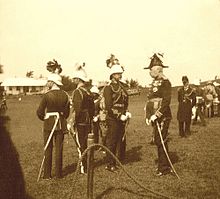
1902. Primarily as the result of the economic boom created by the massive Walker Works project of expanding and modernizing the Royal Naval Dockyard, hundreds of West Indians from many Caribbean islands arrived in Bermuda by sea. The scope of that massive construction included Watford Island, Boaz and Ireland Islands, the building of a Watford (Swing) Bridge and construction of a railway to carry tons of fill for the reclamation of land from the sea.
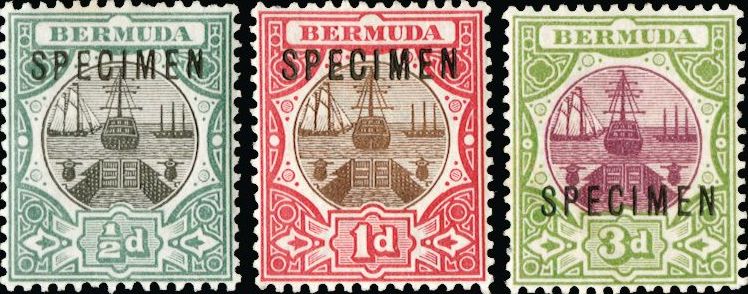
Bermuda stamps 1902 set
1902. In Bermuda, headquarters of the Royal Navy's America and West Indies Station, with Vice Admiral Douglas in command of the Station, the following Royal Navy vessels were based at the RN Dockyard: Cruisers: Ariadne; Calypso; Charybdis; Indefatigable; Pallas; Retribution; and Tribune. Torpedo-boat Destroyers: Quail; Rocket. Sloops and gunboats: Alert; Columbine; Fantome. Gigs: 4.
1902. July A new (replacement) floating dockyard arrived in Bermuda for the Royal Navy at HM Dockyard. She was to stay in Bermuda until 1946.
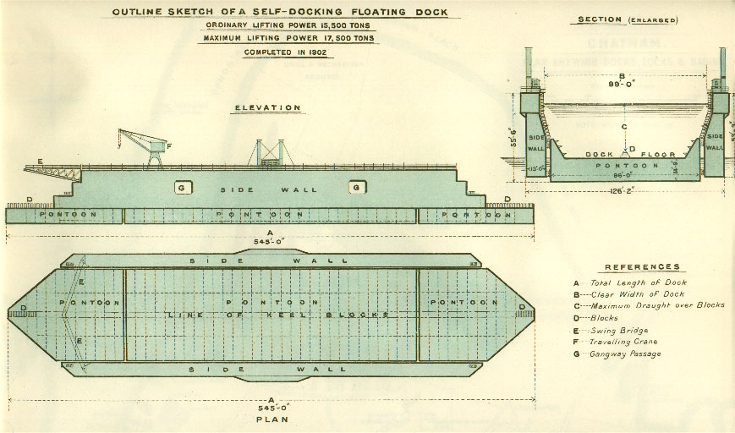
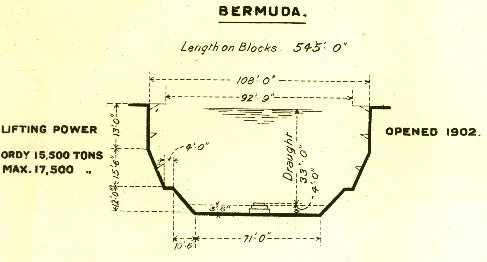
Bermuda Floating Dock 1902
Placed in the same position as the original Bermuda Floating Dock of 1869. Source: Royal Navy
The dock was referred to officially as Admiralty Floating Dock No. 1 (AFD1) sometimes now as the “Bermuda Dock”. AFD1 is a “floating graving” type floating dock designed by Clark & Standfield for the British Admiralty and built by C.S. Swan and Hunter Ltd, Wallsend. In the “floating graving” type dock, there are three separate pontoons each bolted to the continuous sidewalls on either side. Self docking was accomplished by unbolting the centre pontoon and sinking the dock allowing the centre pontoon to rise up. The pontoon was then reattached at the higher level and then raising the dock, thus lifting the centre pontoon clear of the water. A similar process could be applied to the other two pontoons, one at each end. Access to the underside of the sidewalls for repair was by careening. The dock was launched in February 1902 and completed June 1902. She cost £226,000. She was stationed in Bermuda from 1902 to 1946 when she was sold and taken to Montevideo. Note that this dock should not be confused with the first Bermuda dock, which was designed by Campbell in 1869.
1902. The Cup Match cricket tournament between St. George's and Somerset was played for the first time, at Somerset. A Cup Match Trophy award was created, as below:
Cup Match Trophy since 1902
1902. The first bridge to and from Watford Island, begun in August 1901, was completed.1902. Bermuda Biological Station was founded.
1902. May. With the end of the Boer War and victory of the British, all surviving (as a number had died in Bermuda) Boer prisoners of war except one were released and sent back to South Africa, after taking an oath of allegiance to the British Crown. The exception was POW Dowelling, of German birth, who because he refused to take the oath was not allowed to leave Bermuda. (His attitude was such that he again became an interned POW in 1914).
1903. February 10. The SS Madiana, a Quebec Steamship Line vessel that had been calling regularly at Bermuda, landed on a Bermuda reef and was damaged beyond repair. She had been built as an iron-hulled passenger and light cargo ship 344.8 feet in length and named the Balmoral Castle in 1877 by R. Napier & Sons of Glasgow. She had been renamed the San Augustin before reverting to its original name and was then sold to the Quebec Steamship Line in the early 1890s. On the night of February 10, 1903, the Madiana was en route from New York to the West Indies with passengers and general cargo. According to reports from passengers, the ship was threading her way through a narrow channel leading to Bermuda´s Hamilton Harbour when she struck a reef northeast of North Rock. It later transpired the ship's officer-of-the-watch had mistaken Gibbs Hill Light for that of St. David’s Lighthouse. The crew and passengers were all saved. Their luggage was retrieved the next day. For some years, the Madiana was above water, which enabled her to be stripped of anything of value. In 2013, one can still see her boilers and propeller shaft in visiting the wreck.
1903. March 31. Famed American painter Winslow Homer wrote to his New York dealers to inform them he was sending "three Bermuda drawings that should attract attention as it was about the time all Bermuda hotels close for the season and the people return to New York."
1903. April. Professor Edward Laurens Mark, with Charles Bristol of New York University, two of the founding fathers of the Bermuda Biological Station for Research (BBSR), arrived in Bermuda to look for a site for the BBSR. A temporary site was found, the Hotel Frascati in Flatts. June 22. The first group of students arrived.
1903. A group of Bermudians formed Bermuda Fire and Marine Insurance Company for the sole purpose of insuring fire and marine risks within Bermuda.
1903. June. Riots broke out at Ireland Island when workers mostly brought in to undertake construction work at the Royal Dockyard believed they had been exploited. AME Minister Charles Monk made a point of defending them.
1903. June 17. En route by towing from Bermuda to Boston, MA after being retired from Royal Navy coast and harbour defence work, HMS Scorpion sank. When ordered from the Laird shipyard in England in 1862, she was rumored, falsely, to have been built as an Egyptian ironclad turret warship. In fact, she was intended for the Confederate Navy in the US Civil War and was to have been named the North Carolina. She and her sister-ship were seized by the British Government in October 1863 before they were fully completed and assigned to the Royal Navy. In late 1869 she relocated to Bermuda and remained there for over 30 years.
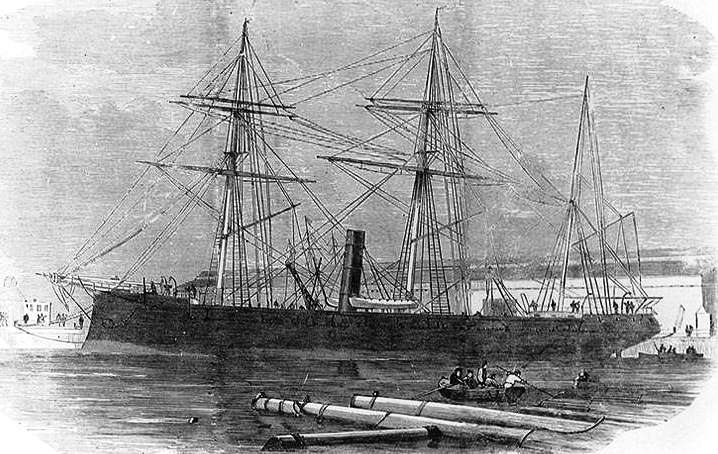
HMS Scorpion
1903. September 24. The formal opening of the first Watford Island Bridge, completed in 1902, in heavy rain. Many Bermudian families of today in Somerset first came to Bermuda to be employed on the construction of the South Yard and the bridge. The structure had been started in August 1901 and eventually spanned the 450 feet of the channel. Great cast-iron cylinders were sunk into bedrock and filled with concrete. Some 3,000 tons of local stone, 200 tons of cement and 55 tons of granite were required for the works, along with 433 tons of steel for the bridgework and central swinging span. Before that, a horse ferry, a flat-bottomed boat that could accommodate a horse and carriage had been the only way to cross the channel. “The bright smart-looking khaki of the soldiers quickly assumed the appearance of brown paper; many pretty dresses became limp and bedraggled, and clung affectionately to their fair owners.” But the weather cleared for the opening of what was considered the crowning structure in the work of providing continuous overland communication throughout Bermuda following the completion of the Causeway at St. George’s Parish in 1871. The people of Somerset had constructed a triumphal arch at their end of bridge and a great crowd gathered. The Governor, Sir Henry LeGuay Geary, KCB, pressed an electric bell and the swing span opened to allow a procession of boats, including as passengers all the schoolchildren of Somerset, to enter Mangrove Bay. This particular Watford Island Bridge lasted for 54 years.
1903. December 16. The Rev. Charles Monk, an AME minister and publisher of the "People's Journal" defended Jamaican and other West Indian workers at the Royal Naval Dockyard who claimed they had been exploited. He was sued in a criminal libel trial brought by the British civilian contractors. Mr Monk was imprisoned after he exposed poor conditions endured by people brought to the island to work on the Royal Naval Dockyard. It was an act of courage in drawing attention to the unacceptable working conditions to which the Jamaican nationals in Bermuda were being subjected. Work crews were brought to Bermuda from the West Indies — particularly Jamaica — in 1902 to complete work on the Dockyard extension. Riots against working and living conditions had broke out on Ireland Island in June of that year. Several Jamaican people were arrested and eight claimed to be the ringleaders were jailed for up to six months. An editorial by Mr Monk in The New Era newspaper demanded better working conditions and the pastor blamed the deaths of two workers on the building contractor, which filed a charge of false and defamatory libel against him. A second piece on the subject led to a criminal libel charge brought by Reginald Gray, then the Attorney-General. Instead of accepting the truth of the obvious state of the workforce, the rampant disease and dangerous working conditions at the site, the principals of the company saw to it that Monk was arrested and charged with criminal libel. A review of the case indicates that the whole affair was laced with shocking bias. The pastor was unrepresented in court after his counsel died the day before the trial date — amid speculation he was poisoned. Sir Brownlow Gray, the trial judge, was the father of the Attorney-General, who prosecuted the case, and the pair were also related to the assistant justice. The Crown called just two witnesses compared to more than 100 called to defend Mr Monk’s reports. Despite the many witnesses who corroborated Monk’s claims about conditions on the work site, he was found guilty on this date, fined heavily and jailed for four months. An account of the trial was given in the book Freedom Fighters: From Monk to Mazumbo, written by Mr Ira Philip.
1903. The Frascati Hotel at Flatt's in Hamilton Parish became a temporary base for the Bermuda Biological Station established in that year. Scientists used a small building on the property as a lab, and for their expeditions went aboard the steam launch the Flora to get to the reefs or North Rock or beyond.
1903. Nathaniel A. Butterfield of Bermuda closed his dry goods operation and invited a selection of his principal clients to join him as minority partners in the formation of a first Bermudian bank.
1904. October 22. Harry Durham Butterfield, on behalf of his family the booming Bermudian N. T Butterfield & Son business poised to become a bank, and thirty two other Bermudians, received permission from the Bermuda Government to form a bank. The N. T. Butterfield & Son Bank Act of 1904 became law by proclamation from the Governor.
1904. Through the vision of George Marshall Allen of New Jersey and several prominent Bermudians, the Bermuda Electric Light, Power & Traction Company (B.E.L.P.&T.) was incorporated but was not yet activated.
1904. Quote from a British 1904 Defence Report on Bermuda. "The Bermudas command no trade route, but they afford for His Majesty's Navy in time of war a secure harbour, refitting station, and convenient base for operations in the neighboring seas, being about equidistant from Canada and the British West Indian possessions, with both of which direct cable communications exists. The adequate protection of this naval base, is therefore, of great importance, and the place has, for these reasons, been constituted one of the four Imperial fortresses." It is believed the Royal Navy in Bermuda surveyed and/or undertook improvement of local shipping channels at that time in the preparation of that report.
1904. 2 August. HMS Hotspur, which had arrived in Bermuda in 1901, was sold for scrap by Royal Navy authorities in Bermuda.
1905. Carl Gibbons and Edgar Hollis, two teenage boys searching thoroughly for a lost cricket ball hit very hard and far and expensive to replace, accidentally discovered a deep hole. They explored it in hope of finding the ball. What they discovered was a scintillating natural wonder that was to have major repercussions on Bermuda's tourism industry, the Crystal Cave in Hamilton Parish. It was opened to the public three years later. When the Wilkinson family, owners of the property since 1884, were told of this discovery, they wasted no time in setting off to explore the entrance and to find out how deep it went. Bernard Wilkinson, the fourteen-year-old son of Mr. Julian Wilkinson, was lowered into the hole by his father using a strong rope tied to a tree. Bernard descended 140 feet with a lamp from a bicycle to light his way. What he found was beyond his or the Wilkinson family's wildest dreams. It was an underground world of delicate splendor with magnificent crystal formations of every size and shape surrounding a clear lake 55 feet deep. One of the very first visitors to see the profusion of pristine white stalactites, soda straws and helectite formations above the cave was the great American humorist Mark Twain.
1905. Lizards were brought to Bermuda from Jamaica.
1905. The SS Bermudian made her first appearance at Bermuda and, with the Trinidad, continued service until WWI. She was the first ship specifically designed for the New York-Bermuda voyage and for 10 years, until the Great War of 1914-1918, knew no other ports. After war service she returned to the New York-Bermuda run but underwent a refit and a change of name to Fort Hamilton.

SS Bermudian
1906. First Newport (Rhode Island) to Bermuda yacht race. Eight vessels participated. It began with the then-radical idea of racing normal boats in the ocean. It was the brainchild of Thomas Fleming Day, editor of the USA's most influential boating magazine, The Rudder. St. David's Head, Bermuda, saw the landfall of perhaps the first-ever ocean race by yachts, in what became the Newport-Bermuda Race, now one of the longest-running such competitions in existence. The race was sponsored in the United States by the Brooklyn Yacht Club and started in lower New York Bay. The Royal Bermuda Yacht Club agreed to host the event and festivities following the Race. The finish line was agreed off St. David’s Lighthouse. The winner of the first Bermuda Race was Tamerlane, with Thomas Fleming Day, its sailing master. Sir Thomas Lipton, a challenger in the America’s Cup competitions, donated the prize, the Lipton Trophy, for the occasion, at Day’s behest. The base of the trophy carries a silver plaque with a view of the City of Hamilton from Fort Hamilton.1906. The floating dock "Bermuda" - built in 1866 in North Woolwich, England - which first arrived on Bermuda’s shores in 1869, in the process of being towed away from its post at Dockyard after having been replaced and partially dismantled, was caught in a gale and drifted over to Stovell's Bay at Spanish Point, where it got lodged on the rocks and became unmovable It has been there ever since as a rusted relic. It was first built in 1863 as a patented invention of Messrs Campbell Johnstone and Co. It weighed 8,200 tonnes and could lift any vessel afloat at the time except for the Great Eastern, which was a large iron sailing steam ship. It was the largest floating dock ever constructed and only lost that distinction to its successor in 1901, Admiralty Floating Dock #1, also made for the Bermuda Dockyard. In her prime, the ‘Bermuda’ was used to accommodate large warships. The Bermuda was more than 47,000 sq ft and 381ft long and 123ft at its maximum width, and a depth of 74ft. It could easily accommodate ships up to 370ft long and 25ft wide. (In 1950, the Bermuda Government tried to clear the bay of the remnants of the dock using dynamite, to no avail. The now rusted and ruined floating dock is located at the entrance to Stoves Bay, also known as Pontoons in Spanish Point).
1906. September 29. The Bermuda Electric Light, Power & Traction Company (B.E.L.P.&T.), incorporated in 1904, but not yet activated, held its first meeting of shareholders. The first Chairman of the Board to be elected was Dr. E. C. Wilkinson, who served until 1926.
1906. John J. Bushell, of "Palm Vale", South Shore Road, Devonshire, established the first tourist bureau in Bermuda.
1906. October 13. The 1855-Bermuda-built famous barque Koh-I-Noor, then 51 years old, sank on a coral reef on the east side of Boca St. Nicholas, in Aruba, Dutch Antilles after severe gales that had also buffeted other Dutch Caribbean islands and had affected other ships. She had sailed all over the world. Her last voyage was from Bermuda. Fowey-registered (then the equivalent of Lloyd's shipping) she was then carrying a cargo of phosphate from Aruba to London. The crew, except for the boatswain, were saved. Survivors included Captain William Charles Smith.
1906. Christmas Eve. Canadian Reginald Fessenden (1866-1932), see below - later to become famous for his Bermuda connections, made the first radio broadcast in history. Radio operators on ships in the Atlantic were shocked to hear a human voice emitting from the equipment they used to receive Morse code. Many operators called their Captains to the radio room, where they heard Fessenden make a short speech, play a record, and give a rendition of "O Holy Night" on his violin.
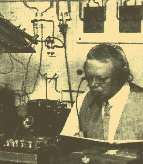
Fessenden, making his historic 1906 broadcast
1907. Crystal Cave was opened to the public, three years after it was discovered.
1907. January. Mark Twain and his friend the Rev. Joseph Twichell again arrived in Bermuda by sea, for a 24-hour visit after 4 days at sea. Twain, widowed in 1904, was also accompanied on this trip by his secretary Isabel Lyon, who later wrote her own journal. It appears that shortly after they returned to the USA from Bermuda, Twain planned another Bermuda visit three months later.
1907. March 17. Woodrow Wilson and Mary Peck enjoyed a vacation in Bermuda, during which time they became well acquainted with Mark Twain.
1907. March 17. According to an article from the Chicago Daily Tribune of that day entitled "Mark Twain Seeks Place to Wear White", Mark Twain headed to Bermuda, on the same vessel as Woodrow Wilson and Mary Peck, for a longer visit and "summery climes" and was quoted as saying he was "in search of rest, British humor, and an opportunity to appear logical in March in a white suit." Once again he was in the company of the Rev. Joseph Twichell. A young schoolgirl, believed to have been Paddy Madden whom Twain had met on a previous voyage, accompanied them.
1907. Operating from a converted saw mill on East Broadway in Hamilton, the Bermuda Electric Light Power and Traction Company (later, BELCo) installed its first generating unit, a 50 kilowatt (kW) suction gas engine. At that time, Demand for electricity was almost nonexistent. During that first year of business, B.E.L.P.&T.'s electricity was used only by the Company itself to light an advertising sign on the premises. Later, It couldn't meet increasing demand so additional generators were soon imported via steamship.
1908. New Year's Day. At Agar's Island, Pembroke Parish, Governor Joscelene H. Woodhouse declared open the newly established Aquarium, created from the island's many tunnels and storerooms once built by Britain's Royal Navy and British Army. Large fish tanks were carefully crafted to fit into such areas, led by local stonemason James DeSilva. The aquarium was the idea of the Hon. Goodwin Gosling and Louis S Mowbray, both members of the Bermuda Natural History Society. From that time onwards, until the aquarium relocated, the island became known as Aquarium Island. It was a huge success. Visitors were ferried to the island in small boats. However, the need for the island to be used by the military during the Great War of 1914-18 resulted in the removal of the Aquarium to Flatts.
1908. March, electricity was introduced to an initially small group in Bermuda by the Bermuda Electric Light Power and Traction Company Ltd. It is believed Mark Twain was one of them, at his Pembroke house.
1908. April 7. In the Royal Gazette newspaper of Bermuda, prominent American marine and landscape artist Mr. Prosper L.Senat and his wife, both then in Bermuda, advertised he will be making a final exhibition of his winter's work, at the Hotel Hamilton tomorrow, Wednesday, 8th inst., from 10am until 6:30pm. In addition to the watercolors remaining unsold there will be shown most of those already disposed of, which it is his custom to take to the States for delivery, together with a large and interesting collection of Black and White compositions which it is Mr. Senat's custom to make a preliminary to his more important works, and seldom seen out of his studios." It was later determined Senat worked in Bermuda many more times after this supposed final exhibition. He is known to have executed works up until the early 1920's and it is probable that these too were exhibited.
1908. May. The Bermuda Legislature banned of all motor vehicles, including cars, under a 1908 Act. Not even the Governor could have one. It was believed they would shatter the Island's tranquility and be of little benefit. But he use of horses brought constant criticism over the state of the city's streets.
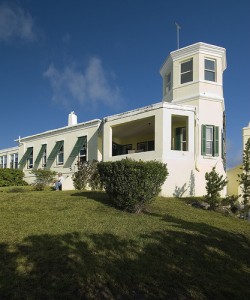 1908.
June 8. Denslow's Island, Great Sound, Warwick Parish, was sold in New
York, by realtor Carl E. Randrup, with its large stone residence, cottage and
other outbuildings.Since 1903 it had been referred to as Denslow's as
Philadelphia-born American cartoonist and illustrator William Wallace Denslow
(1856-1915) who illustrated The Wonderful Wizard of Oz written by L. Frank Baum - built a
turreted castle-like house there, renamed the island after himself and announced
himself thereafter as King Denslow I. He also bought himself a Bermuda
sailboat which he named "Wizard" and created a dock for it from the
house. From 1903 he did much of his work from his studio at this house.
1908.
June 8. Denslow's Island, Great Sound, Warwick Parish, was sold in New
York, by realtor Carl E. Randrup, with its large stone residence, cottage and
other outbuildings.Since 1903 it had been referred to as Denslow's as
Philadelphia-born American cartoonist and illustrator William Wallace Denslow
(1856-1915) who illustrated The Wonderful Wizard of Oz written by L. Frank Baum - built a
turreted castle-like house there, renamed the island after himself and announced
himself thereafter as King Denslow I. He also bought himself a Bermuda
sailboat which he named "Wizard" and created a dock for it from the
house. From 1903 he did much of his work from his studio at this house.
He bought the island from the profits he made from illustrating L. Frank Baum’s classic “The Wonderful Wizard Of Oz” (later shorted to "The Wizard of Oz" book, published in 1900, which became an instant cultural world-wide hit and created first the play and then the movie. The children’s book sold tens of thousands of copies and quickly spawned sequels, a theatrical adaptation and cartoon strips. Later, he quarreled bitterly with his former collaborator Baum. Denslow and Baum.
Both claimed “The Wonderful Wizard of Oz” as their own. They almost simultaneously launched competing syndicated newspaper stories that ran in the Sunday comic sections around America and Canada. Denslow designed from his studio in the turret of his Bermuda house his own illustrated cartoons, Denslow’s "Scarecrow and Tinman" which began in December 1904, one of which was known as "Denslow's Scarecrow and Tinman in Bermuda. " The series was short-lived, ended in March 2005. Denslow's sojourn in Bermuda also inspired the setting of a book and play. He worked on them from here. Set in both Bermuda and Vermont and an enchanted underwater fairyland was his “The Pearl and the Pumpkin” - a 1904 Halloween-themed children’s book co-written by Paul Clarendon West and illustrated by the artist. Denslow hoped to replicate the popular success of “Wonderful Wizard Of Oz” with a 1905 stage adaptation of the well-received book. One scene had a Bermuda lily field with chorus members dressed as lilies and a scene off North Rock. It received lavish praise from the New York Times. But the play did not find a receptive audience and closed shortly after its Broadway premiere.
After the failure of his considerable investment in the musical version of “The Pearl and the Pumpkin”, by 1908 the self-crowned King Denslow I decided to abdicate and abandon his mid-Atlantic realm. The buyer was a New Yorker, who wanted to make the place his Winter residence. The price was $30,000. Denslow — married and divorced three times — began drinking heavily and had difficulty landing secure employment after leaving Bermuda. He moved to Buffalo, New York and found work with the Niagara Lithograph Company designing promotional pamphlets. He eventually drifted to New York City around 1913, finding work at another advertising agency where the one-time lord and monarch of his private island earned just a fraction of his former income.
1908. Creation of Zuill's Folly landmark in Smith's Parish. A concrete observation tower erected by a local landowner on the island's highest elevation. It was the intent of the owner to lure visitors to the top of the tower to view the island from one end to the other. While never a commercial success as a tourist attraction the site today has a 60 foot tower atop the structure which contains numerous commercial stations including a 4 channel .X25 UHF wireless packet data network.
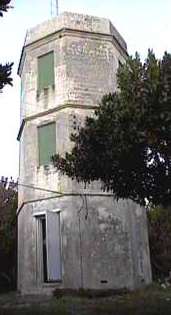
Zuill's Folly
1908. October 31. Appointment of Lieutenant General Frederick Walter Kitchener as Governor of Bermuda. He was the younger brother of Earl Kitchener.1908. The first bus on the island was a 12-seater. It frightened a horse, causing a doctor to be tossed to the ground. That incident is believed to have been one of the catalysts - Mark Twain in Bermuda was another - that led to the passing of a law in May 1908 that would ban all motor vehicles from Bermuda's roads for nearly 30 years.
1908. Bermuda had an opera house in the city of Hamilton. It the brainchild of William Augustus “Syke” Smith, who was a black master builder. It was one of the most beautiful buildings in Hamilton. During the time of racial segregation, it was a venue for live performances by black and white drama societies. (In 1978 it was destroyed in a fire).
1909. The Tercentennial Celebration of Bermuda was held in the city of Hamilton and town of St. George. It included a memorial monument and tribute to Admiral Sir George Somers inlaid at the Bermuda Cathedral in Hamilton. Previously Governor's Park, the site where the entrails of Sir George Somers were believed to have been buried was renamed the Somers Garden.
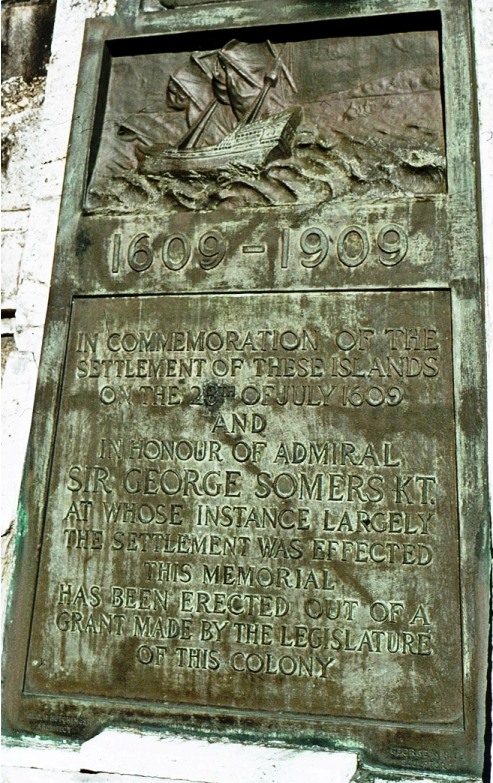
1909. In July, a group of local dignitaries went by boat to see the largest pinnacle at North Rock. They returned with a plan to encircle it with reinforced concrete and put a 50-foot metal frame on top, with a gas-powered beacon that would be visible at sea for more than 8 miles
1909. The three-masted passenger Quebec-built 19th century barque Edinburgh, one of the world's last classic sailing ships, foundered off the shores of Bermuda and was washed up on a beach after more than 25 years of transatlantic service. She had an exquisitely carved, life-sized figurehead (see below). In early 2007, an unidentified European collector captured this "masterpiece" of Canadian folk art after it was sold at auction in New York and paid more than more than Canadian $300,000. The 180-kilogram oak carving of a buxom female figure was created in 1883 by renowned New Brunswick artist John Rogerson. The carving was recovered from the Edinburgh by an American diplomat in Bermuda. It was later held by several US museums, and its likeness was used in the 1970s on a special issue by the US Postal Service celebrating the country's bicentennial. The figurehead is believed to have been modeled on the Duchess of Edinburgh, the Russian-born daughter of Czar Alexander II and daughter-in-law of Queen Victoria.
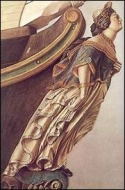
Edinburgh ship's figurehead wreck 1909
1909. The Westerfield Cup, so-named for it's sponsors, was made specifically for this, the third Newport-Bermuda Yacht Race, by Reed and Barton, decorated with a floral pattern in relief and had three handles. In one pane were the crossed flags of the Atlantic Yacht Club and the Royal Bermuda Yacht Club in enamel. It was inscribed Bermuda Race 1909. George Runk, in the schooner Margaret, won.1909. Ernest Trimingham, a black Bermudian actor/writer resident in the United Kingdom, became the first black performer to appear regularly in British cinema and theatre. His play “Lily of Bermuda”, produced in Manchester, was the first black-themed musical-comedy ever staged in Britain. (Mr. Trimingham lived long enough to cross paths with a young Earl Cameron when that aspiring Bermudian actor first began treading the boards in London’s West End theatre district at the outset of his distinguished career in the early 1940s).
1909. June. A friendly cross-country race began between Bermudian soldiers and those in the British Army then based in Bermuda. It later became known as the Marathon Derby. Earlier, running had become a Bermudianized sport, especially in Somerset. but had not been competed for before then by non-locals. British soldiers witnessed the racing and wanted to join in but they were too late (see 1910).
1909. Bermuda too, including British Army soldiers and Royal Navy sailors based in Bermuda, were all affected when the Temperance Movement in the United Kingdom helped to persuade then-Chancellor David Lloyd-George to impose punitive tax rises on all alcoholic drinks, which tipped the alcohol industry into a near 30 year decline.
1910. On the death of his father King Edward VII, King George V was enthroned.1910. October 4. Bermuda was granted its own new Coat of Arms. It was noted at the time it featured a sinking ship thought to be the Sea Venture. It replaced the less popular original which featured three sailing ships. The coat of arms (without the banner holding the motto) was added to the Red ensign to create the distinguishing colonial flag (the national flag is the Union Jack, which appears in its upper, left corner), and on the Governor's. The coat of arms features on the cover of the 1624 edition of The Generall Historie of Virginia, New-England, and the Summer Isles (the Somers Isles is another name for Bermuda, commemorating Admiral Somers), by Captain John Smith. The coat of arms replaced a badge which had been in use before 1910. The badge was based on a sketch, made in 1869, of the 1817 seal, which depicted a wet dock of the time showing with some ships in the background. It is assumed that the scene alludes to the fact that the islands were a stopover base for the sailing ships when the badge was approved by the Admiralty. The heraldic blazon is: Argent, on a mount vert a lion sejant affronté gules supporting between the fore-paws an antique shield azure thereon a representation of the wreck of the ship Sea Venture proper. Oddly, the-then prominent British Wills cigarette tobacco company, which had featured Coats of Arms of countries in the British Empire, showed - see below, right - a wild hog and one ship, not three, as its company's Bermuda coat of arms. The Latin words Quo Fata Ferunt, translated as Whither the Fates Lead Us, come from Virgil’s Aeneid (Book V: 707-710) because it is so similar to what happened in Bermuda when voyagers discovered it by accident. In Virgil's Aeneid book, Aeneas was sent on a mission from Troy to found a second home that was to become Rome, but became wrecked on Sicily. Aeneas and his fellow Trojans deliberated whether to stay or continue the journey to their destination. Aeneas had a vision in which his father said to him: “ ... Quo fata trahunt (or ferunt) retrahuntque sequamur; Quidquid erit, superanda omnis fortuna ferendo est.” This may be translated as: “ ... let us follow where the Fates take us or take us back; Whatever will be, every fortune/misfortune can be overcome through perseverance.” These words conveyed something positive and powerful: whatever obstacles may be confronted, they will be overcome through endurance and determination. Thus the motto indicates precisely the reverse of the interpretation that suggests that Bermudians have inherited one implying a certain lackadaisical, wherever-the-winds-may-blow-us approach to life and the world around us. Also, the shield bearing the shipwreck is held upright by a griffin is significant. This mythical creature, possessing the body of a lion (king of beasts) and the head and wings of an eagle (king of birds), represented the guarding of treasured and priceless possessions.
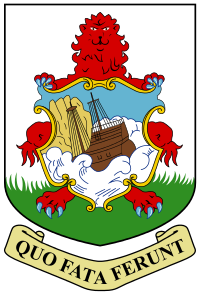
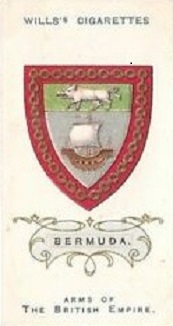
1910. January. The friendly cross-country race that orioginally began in June 1909 from the Princess Hotel in Hamilton to Somerset, between Bermudian soldiers and those in the British Army then based in Bermuda, by then renamed the Marathon Derby, became an official annual event. It was hosted by the Somerset Athletic Club, a newly formed black community organization. British soldiers issued another challenge, which was accepted, with the locals stating they wanted it run from Somerset to Hamilton. Private Jordan, of the Duke of Cornwall's Light Infantry then stationed in Bermuda, was the first to cross the line, followed by Bermudian local and Somerset favorite John C. Bean. The race became a May 24th fixture around 1928.
1910. A Canadian corporation attempted to bring regularly scheduled, motorized public transportation to Bermuda and went so far as to form the Bermuda Trolley Company Limited. Unfortunately, nothing came from it as there was a bitter altercation between some of its principals and various people in Bermuda that reached its climax in 1924 when an entirely separate entity, the Bermuda Railway Company, was formed. Had the Canadian owned Bermuda Trolley Company not been interfered with, it would have brought public motorized transportation to Bermuda far earlier than when such train services finally began in Bermuda in the 1930s.
1910. The booklet "Bermudas: Orphan Islands of the Atlantic, with a subtitle of ‘Bermuda, Land of Sunshine and Flowers" was written and published by a New York Judge. He was a notable visitor to Bermuda, along with Samuel Clemens (Mark Twain) and a president-to-be and others. He was Judge Warren W. Foster. So taken with the island, he wrote about it and its charms and advantages, versus the long haul to more foreign places. Described as a confirmed bachelor on the New York social scene, he had earlier earned some notoriety in New York when, sitting in the Court of General Sessions, he sentenced Frank Kenny to three months' imprisonment upon a conviction of the defendant by a jury for petit larceny of taking and using a horse and wagon. The judge, like Mark Twain, was against the use of motor cars.
1910. Birth of Alma (Champ) Hunt, who became one of Bermuda's most famous cricketers and also played in Scotland, at the Aberdeenshire Cricket Club.
1910. The Royal Engineers and Royal Artillery ended their task of re-fortifying Bermuda. They had started as the new century began. Their final mission was the completion of gun emplacements and fortifications at the newly-built St. David's Battery at St. David's Head. As a result, the eastern 9.2-inch gun at Fort Victoria was moved to the St. David's Battery, where it was used as a practice piece for the newly-formed Bermuda Militia Artillery (BMA). With another similar gun installed, the new battery had two of the largest guns ever mounted on British colonial fortifications, plus two smaller ones which guarded the entrance to the Narrows Channel and the inspection anchorage of Five Fathom Hole. All these heavy defensive weapons directed against invasion-minded enemy foreign warships were manned by the BMA.
1910. Royal Navy in Bermuda measures were also taken to beef up defenses. Bermuda became the home of the Fourth and Eight Cruiser Squadrons on the North America and the West Indies Station, with Bermuda as the Royal Navy's central base on that Station, supported by Halifax to the north and Jamaica and other British possessions in the Caribbean arena 900 miles to the south of Bermuda. In overall command of the station was Rear Admiral Arthur M. Farquhar, CVO, appointed in 1909, whose Bermuda home was at Admiralty House in Pembroke.
1910. April 1. HMS Brilliant was one of the vessels based in Bermuda at that time, attached to the 4th Cruiser Squadron. She was an Apollo class cruiser, begun in March 1890, completed for service in 1893. One of her crew died on this day and was buried in Bermuda at the Royal Naval Cemetery. He was Joseph William Eagle, Chief Yeoman of Signals, 39. At his funeral later that same day he was buried with full military and Masonic honors, watched by members of the Dockyard community including members of the Lodge of Loyalty No. 358 (which had started in the Dockyard), as Chief Yeoman Eagle had become a Mason of that Lodge on June 25, 1909.
1911. The Bermuda Cathedral was consecrated
1911. St. George's native Samuel Seward Toddings established The Mid Ocean newspaper (later, Mid Ocean News). An afternoon newspaper for many years, it was bought by The Royal Gazette in 1962. (In October 2009 it announced it was to cease publication indefinitely). It was his second newspaper. In 1869 he had founded and became the publisher and editor of the Colonist newspaper. It lasted until 1911, when he founded and edited the Mid Ocean News. It was later discovered he had both a mother and grandmother who were once enslaved.
1911. The liner Oceana was bought by the Bermuda North Atlantic Co and operated between New York and Bermuda until purchased by Spain and renamed Alphonso XIII. She was built by William Denny & Bros., Dumbarton in 1890, 6,844 gross tons when launched; length 477 ft; with clipper stem, 2 funnels, 2 masts, twin screws and speed of 16 knots. Passenger accommodations: 208 first class, 100 2nd, 100 3rd class. Launched 30 Dec 1890 as the "Scot" for the Union Line's UK to South Africa service. Maiden voyage 25 Jul 1891, leaving Southampton for Madeira and Cape Town. In 1895, she was rebuilt to 7,859 tons with 531 ft length and passenger accommodations for 400 1st class, and 25 2nd class. In 1899 was used as a troop ship during the Boer War. Sold 1905 to Hamburg America Line, renamed "Oceana" and initially cruised between Naples and Alexandria. 8 Jun 1906 started 1st Hamburg-NY voyage and by 25 Dec 1910 made 7.5 round trips on this service. Scrapped in Italy 1927.
Oceana
1911. February 15. The Memorial Monument to Sir George Somers was unveiled in St. George's, with the 1st Battalion of the Bedfordshire Regiment in attendance.1911. April. At the Agricultural Exhibition, an officer of the Royal Army Medical Corps (RAMC) unit then in Bermuda presented a prize for the quality of his chickens to Bermuda's Governor, Lieut General F. W. Kitchener. He was Captain Percy H. Falkner, who knew Governor Kitchener from Africa days. Falkner was in the Boer Wars, including in 1899-1902, which resulted in the accommodation of some 5,000 Boer prisoners at Bermuda. He was involved in the relief of Ladysmith, including actions at Colenso and Spion Kop, and thereafter in operations at Vaal Kranz, Tugela Heights and Pieter's Hill, followed by work in Natal and in the Transvaal, ending in the summer of 1901.In Bermuda and later elsewhere, he was an expert on the raising, rearing and welfare of chickens, so much so he was mentioned at length in Lewis Wright's major written tome the "Illustrated Book of Poultry". That weighty tome of upwards of 800 pages and running through many editions with lavish pictures of strutting roosters and following hens is said to be one of the most famous books on the subject of the lowly chicken. His presentation of a Bermuda plaque in 1911 on chickens came from his lifelong passion for the chicken in its many forms and breeds. Later, as an army surgeon, he travelled the British Empire. As Lieut-Colonel Hope-Falkner, he retired from the Indian Medical Service, RAMC, and died in Malta in 1950.
1911. The Bermuda Advertisements Regulation Act of that year prohibited unsightly advertisements in Bermuda.
1911. The Historic Buildings Act 1911 was one of Bermuda's earliest heritage laws, intended to protect the historic forts on Castle and Southampton Islands in Castle Harbour.
1911. The Imperial Hotel, Church Street Hamilton, east of the Hamilton Hotel, was much enlarged. It may have been the longest surviving hostelry in the City. (It is no longer an hotel).

Imperial Hotel, Hamilton, Bermuda
1911. The House of Assembly finally approved the plan for North Rock referred to in 1909 and work began. It was finally completed in 1912, after some mishaps.1911. The silent black and white movie, a short drama "Her Mother's Fiancée" was made in Bermuda.
1912. April 25. Death in New York of Prussian-born, American-naturalized Bermudian prominent businessman William E. Meyer. While hosting a visit from his long-term American friend Judge Bliss, Meyer was stricken by tropical dysentery. He had been taken to New York for treatment but in vain. News of his death was eclipsed in the newspapers by the horror over the loss two weeks earlier of the liner Titanic. Meyer’s body was returned to Bermuda and brought ashore by the crew of his flagship, the Gladisfen, one of his many vessels. A huge funeral was to follow at his home called Caledonia. At Meyer’s request, eight working men from Meyer’s Wharf willingly carried their captain’s coffin. The Royal Gazette remarked that it was “doubtful there has ever been a previous display of floral offerings similar in beauty and quality in Bermuda.” Veterans of the Grand Army of the Republic sent a bouquet of American beauty roses. British troops marched behind the casket as it was carried uphill out of St. George’s to the town cemetery. The entire Masonic Lodge marched in a similar procession.
1912. Prince George, grandson of Queen Victoria, Marquess of Milford Haven, visited Bermuda briefly, as a lieutenant on HMS New Zealand.
1912. Death in Bermuda while still in office and burial of Governor Lieutenant General Sir Frederick Walter Kitchener. He had served since 1908. He was interred in the military cemetery, Prospect Garrison, with full military honours. He was the brother of British Army hero General Sir Herbert Kitchener, who as Commander in Chief of the Anglo Egyptian army, smashed the Mahdi Rebellion in the Anglo Egyptian Sudan at the Battle of Omdurman and was later created Lord Kitchener of Khartoum by Queen Victoria.
1912. The Quebec Steamship Company (later, absorbed into Furness Withy and its Furness Bermuda Line), released a 1912 poster of Bermuda and the West Indies.
1913. The Mid Ocean story in Bermuda began when the Furness Withy Steamship Company took an interest in developing Bermuda and invited Charles Blair Macdonald, a leading golf architect who was regarded as the father of American golf to examine the possibility of building a course as an inducement to tourism. Sir Frederic Lewis, then chairman of Furness Withy, diverted one of his ships, the Moorish Prince, to the Island. Also in the official party was noted architect Charles Wetmore as consideration was also being given to the building of a hotel. Macdonald and Wetmore scoured the Island and identified 500 acres at Tucker's Town as being ideal for the project. It was estimated that the land could be purchased for between $150,000 and $200,000. However, it proved to be far from a simple process. As Macdonald wrote later: "Practically every one of the owners who had given an option on his property went back on his contract.....but finally it resulted in securing about 600 acres at a cost of about $600,000." Design and construction was not easy for only in the valleys was the coral rock covered with a six inch layer of soil. The area had been used for growing onions, potatoes and Easter lilies. Another difficulty was to avoid steep climbs and in the completed course only the 16th hole has a gradient to negotiate.
1913. There were four steamers serving the Halifax-Bermuda run. They were the Cobequid, Caraquet, Chignecto and Chaleur.
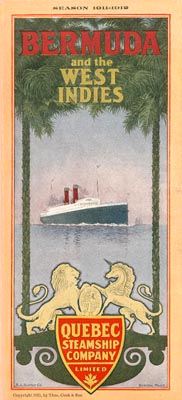
1913. Prince Albert Frederick Arthur George, then a naval cadet, visited Bermuda on HMS Cumberland. He became King George VI in 1937.
1913. December 24, Christmas Eve. In Hamilton, Robert Montgomery Armstrong was hanged for murder, the first to be executed in this century. Like the vast majority of murders committed in Bermuda this century, it arose out of a domestic dispute that had occurred earlier in the year. Robert Montgomery Armstrong was seen to be paying too much attention to the wife of one Chesterfield Paul. Following a fight (which Paul won), Armstrong went home, picked up a knife, returned to Paul's residence and stabbed him. He died almost immediately. At the Inquest the Foreman of the Jury raised concerns about the testimony of the Doctor who attended the deceased. No autopsy had been performed and at the request of the jury, the Coroner ordered the body to be exhumed. Following the postmortem examination, the dead man's heart was laid out on a piece of blotting paper and shown to the jury to prove to them how he met his end.
1913. December. Herbert Brenon's "Neptune's Daughter" was filmed in Bermuda, for release in 1914. The film, shot in various locations around Bermuda including Crystal Caves, starred Annette Kellerman - an Australian swimmer turned actress. Neptune's Daughter, though well-financed, had inspired very little faith in its backers and was almost never made. It had only reluctantly been approved by Universal head Carl Laemmle who, according to Kellerman, "begrudged every bit of the $35,000 that went in to it." Director Herbert Brenon required a foreign setting for the film - a fantasy romance based loosely on ancient myth about a mermaid seeking vengeance on the land-dwelling king who accidentally kills her sister in a fishing net only to lose her heart to him. Bermuda must have seemed perfect. It was then still a forgotten colony, undiscovered by North American visitors, sparse and lonely, awash with cedar forests. It seemed, according to Kellerman's biographer, "a rather exotic place, strange and beautiful enough to imagine its tropical seas might be peopled by mermaids." A cargo ship arrived here carrying Kellerman and a crew of 20. The star was already well known in Bermuda. She had been famously unsuccessful at three attempts to cross the English Channel and in 1908 earned notoriety for championing a one-piece bathing suit for women. Her arrival on the island caused something of a stir and The Royal Gazette even issued a casting call: "Miss Kellerman in one of her scenes will require the service of at least 50 pretty Bermudian belles to represent mermaids; and it is certain that many Bermudian maidens will avail themselves of this opportunity!" Among the first scenes filmed was shot on the lawn of the Princess Hotel - where Kellerman herself stayed - in which the fictional King William surveyed his army and navy. His "fleet" was actually an assembly of 20 local fishing boats and his men a hundred soldiers from the 2nd Queen's Regiment then stationed at Fort Prospect and loaned as extras by Governor Bullock. Yet the scene which most impressed locals was shot within Crystal Caves. The area proved the perfect setting for the "witch's cave" demanded by the script. The caves were then still unlit, so Brenon wired New York for the studio's chief electrician. With the help of Percy Wilkinson and a Mr. Spurling from the Bermuda Electric Light Company, the scene was filmed a hundred feet below ground - a first in motion picture history. The result, according to The Royal Gazette, was "magnificent beyond description." Yet an accident on set in January nearly forced Neptune's Daughter to be abandoned altogether. While filming an under-water fight scene in a glass tank on Agar's Island calamity struck. "While we were doing the fight, suddenly the front wall of the tank burst with a report like a cannon," Kellerman said of the accident some years later. "The out-rush carried me 20 feet beyond the tank, where I lay, bruised and bleeding, with a great piece of flesh cut from my right foot." The incident was covered in The New York Times ("Miss Kellerman Hurt: Glass Tank Bursts in the Course of a Performance in Bermuda" read the breathless headline) and kept both Kellerman and director Brenon off the set for some time. The picture was released in April 1914 and was an immediate sensation, grossing nearly one million dollars. Though the scene in Crystal Caves caused wonder in Bermuda - censors and clergy members in the United States took a rather dimmer view. Kellerman, in the era of silent films, wore her "unconventional" swimwear - a body stocking that made her appear nude in many scenes. It proved for some the corruption of the "moving pictures." Still, this curious mermaid fantasy evidently struck a cord. The allure of either Kellerman or exotic Bermuda kept the film in circulation for seven months. Its record of 19 successive weeks as top-grossing film stood until 1955. Today, the film survives in fragments stored in archives in Russia and Australia.
1914. Suffragette Miss Gladys Misick, from Bermuda, with others, had their first public meeting in St. George's to publicize the plight of Bermudian women who could not vote. Miss Misick had arrived back home from England where the suffragette movement had become very prominent. She was one of the first Bermudians to have earned an Honors degree from the University of London. As a suffragette in London she had led a 100-mile suffrage which at one point had been pelted with tomatoes and eggs.
1914. Two years after he first visited Bermuda in 1912 and was captivated, exposing thousands of negatives during his stay, Karl Struss, the American photographer, cinematographer and inventor who worked with some of the greatest stars of the 20th century, including Cecil B DeMille and Charlie Chaplin, was employed by the Bermuda Trade Development Board to take photographs for a tourists guidebook, Bermuda: Natures Fairyland. Struss was present for, and tied to forever, the dawn of 20th century tourism in Bermuda. He was a formative figure in the development of pictorialism, a movement that favored enhancing the dramatic or expressive elements of a photograph. He became a master of the platinum print and achieved great contrast in the depths of shadow and light. His photographs were some of the first to be recognized as fine art rather than straight photography or documentary. He inspired and worked alongside famous photographers such as Alfred Steiglitz and Clarence White and he believed that being an independent artist and a commercial photographer were not mutually exclusive. Later, Struss's interests turned from still to moving pictures. He won the first Oscar for cinematography, alongside Charles Rosher, moving on to a career spanning decades.
1914. The 2nd Battalion, Lincolnshire Regiment (2 Lincolns) of the British Army, under Lieutenant-Colonel George Bunbury McAndrew, was posted to Bermuda and stationed at Prospect Camp, in Devonshire Parish, on the outskirts of the City of Hamilton (the colonial capital). When war was declared on the 4th of August, the battalion was under orders to return to Britain as soon as possible to form new divisions for the British Expeditionary Force in France and Belgium. A Canadian battalion was to replace it in Bermuda. The Governor of Bermuda, Lieutenant-General Sir George Bullock, was temporarily abroad and Lieutenant-Colonel McAndrew filled his place, overseeing the placement of the colony onto a war footing. This included the embodiment of the BVRC (the BMA had already been embodied for annual training). 2 Lincolns returned to England, via Nova Scotia, in September, and arrived in France on the 6th of November (1 Lincolns having arrived there on the 14th of August). When it deployed to the Western Front, C Company, 2 Lincolns included a former Bermudian policeman, Corporal George C. Wailes (who had originally enlisted in the Royal Fusiliers. His father, also named George C. Wailes, had been a Private soldier, posted to Bermuda in 1883 with the 2nd Battalion, 84th Foot (York and Lancashire Regiment), who had purchased his discharge in 1885 and married and raised a family in Bermuda). Wailes was wounded at Ypres on the 17th of November, 1914, and sent to a hospital in England to convalesce. He returned to the Western Front the following year, but was medically discharged after receiving another seven wounds in March, 1915. He returned to Bermuda in April. 2 Lincolns appears to have gained at least two other soldiers from Bermuda: Lance-Corporal Louis William Morris (another former Bermuda Police constable), killed on the 7th of December, 1914, and a Private Farrier. An English soldier of 2 Lincoln, Lance Corporal W. Clifford (who had been assigned to Government House while in Bermuda), wrote frequent letters from the Front to friends in the colony, extracts of which were printed in Bermuda's daily newspaper, the Royal Gazette.

Lincolns in Bermuda, with Bermuda Volunteer Rifle Corps. See above story.
1914. Bermuda too, including British Army soldiers and Royal Navy sailors based in Bermuda, were all again affected when, as a direct result of the 1909 Temperance Movement in the United Kingdom having helped to persuade then-Chancellor David Lloyd-George to impose punitive tax rises on all alcoholic drinks, which tipped the alcohol industry into a near 30 year decline, the Temperance Movement there also backed British Government Great War moves to cut public house (pub) hours and strengths of all alcoholic drinks.
1914. August 4. When WW1 was declared on this day, the British War Department started to buy up the Daniel's Head peninsula in Somerset, first acquiring the land that is now Westover Farm. This was followed by the purchase of the properties to the northwest, owned by Walter Barker and C. A. V. Frith. The purpose of those acquisitions was to add "ears" to Daniel's Head, for the new and revolutionary age of "wireless" transmission of information, via radio and Morse Code, had matured into the activities of war. Great masts for the reception of Allied data and the interception of enemy transmissions were erected.
1914. August 4. Suffragette Miss Gladys Misick, from Bermuda, with others, who had earlier protested in public that women in Bermuda could not vote, and was one of the first Bermudians to have earned an Honors degree from the University of London, returned to London as soon as war broke out and later served with the French Red Cross at bloody Verdun.
1914. August 4. Bermudian Charles Gilbert (later, OBE and MC) who was at Oxford University in 1914 on a Rhodes scholarship, joined and served in the Machine Gun Corps of the British Army in World War 1.
1914. August 4. The BVRC, formed officially in 1894, had continued to train and develop over the next two decades. When war was declared, it was embodied to fulfill its role within the Garrison. As the economy would have suffered from taking so many young men from their jobs, some soldiers continued to perform their civil jobs, before taking their turns standing sentry at the many places around Bermuda that the BVRC guarded. The primary task the BVRC was given was guarding the coastline but it filled other roles, the most important of which was as a staging point for trans-Atlantic convoys, overseen from the Royal Navy's dockyard on Ireland Island.
1914. August 4. World War 1 - the Great War - began in Europe. Bermudians enlisted for service overseas in some numbers, given the small size of the population. Units from the Bermuda Militia Artillery (BMA) and Bermuda Volunteer Rifle Corps (BVRC) left the island for service in Europe. Many were later killed in action. (See under November 11 in Public Holidays and Bermuda's War Veterans. Bermudians enlisted for service overseas in considerable numbers. The local forces at that time were divided largely on the basis of colour, with black Bermudians serving in the Bermuda Militia Artillery (BMA) attached to the Royal Garrison Artillery, while white Bermudians were to be found in the Bermuda Volunteer Rifle Corps (BVRC), mostly associated with the Lincolnshire Regiment. Individuals, including some from the local forces, signed up separated with other units overseas, such as the Royal Navy, the Royal Flying Corps and various army regiments.

Bermuda Volunteer Rifle Corps sent to France 1914. British Army photo.
1914. August 4. At the start of the First World War, Cecil Montgomery-Moore was an enlisted man in the Bermuda Volunteer Rifle Corps. He was given leave to travel to Canada to join the Royal Flying Corps (RFC), air wing of the British Army, one of twenty or so Bermudians who did so during that war. He was one of two Bermudian airmen to earn the Distinguished Flying Cross during the war (the other being Rowe Spurling).
1914. August 4. With WW1 declared, there were three German nationals living in Bermuda. They were arrested and interned for four years on Ports Island, along with 58 German merchant seamen who were working on various ships on the island. There were German officers and crew members on vessels including the Bermudian, Caribbean, Cayo Soto, Chaleur, David Biird, Leda and Vestland. Ports Island, 17 acres, was the logical choice for their confinement with its hospital buildings constructed in 1901 for incoming Boer War prisoners and used as such until 1902. The prisoners, all civilian, no military, after complaints about a shortage of rations, were permitted to and grew vegetables to supplement their diet and spent most of their time making souvenirs which were sold locally. They included a cedar chest and a model ship in a light bulb. Some were boxes but most were curios associated with the sea. All the pieces were marked GPOW Bermuda with the silhouette of a palm tree. Captain Charles P Pitt, Assistant Provost Marshall of Bermuda, of the Bermuda Volunteer Rifle Corps (BVRC), was Commandant of the POW camp. 20 men of the BVRC, led by Colour Sergeant A Haskell, guarded the prisoners. An NCO from the Royal Army Medical Corps provided first aid and treated minor ailments of prisoners. Any with serious illnesses were sent to the British Army's military hospital at Prospect. On Ports Island, most of the Germans were housed in a compound consisting of officers quarters, mess and kitchen, with similar but more basic accommodations for other ranks. Some elected to live in bell tents.
1914. August 14. After Great Britain declared war on Germany on August 4, British Army troops were maintaining a garrison in Bermuda made up of an infantry battalion and detachments of the Royal Engineers and the Royal Garrison Artillery. The outbreak of hostilities in Europe required Britain to repatriate its infantry. It could not leave Bermuda, a base of such strategic importance, without a garrison. On this day Britain, by telegraph, formally asked Canada to provide replacement troops. A day later, the Adjutant General, Canadian Militia, directly contacted the Officer Commanding the Royal Canadian Regiment to ask if his unit would agree to volunteer for service in Bermuda. Two days later, on 22 August, the Officer Commanding the Regiment, Lieutenant-Colonel Alfred Octave Fages, agreed but stated he hoped it would lead the force to to further advancement towards the battle field, the desire of aIl ranks.
1914. The Port's Island Hospital for Boer War prisoners-of-war was used to house 3 German nationals interned and 58 German merchant seamen in the 1914-18 Great War. They grew vegetables to supplement their diet and spent most of their time making souvenirs, marked GPOW Bermuda.
1914. War Baby, a dinghy designed by the late Sir Eldon Trimingham, was built in St David’s. (It came into Warren Brown’s possession at the beginning of the Second World War, was sailed by him thereafter to many places where it won prizes and when last heard of was being restored to its original glory in Ireland).
1914. September 10. The Royal Canadian Regiment embarked in S.S. Canada for Bermuda and sailed the following day at noon under escort of HMCS Niobe.
1914. September 14. The vessel S. S. Canada, carrying members of the Royal Canadian Regiment ((RCR) posted to Bermuda sighted the islands Bermuda and the same evening the ship entered the passage of St. George. The battalion disembarked on Monday 14th, relieving 2nd Battalion Lincolnshire Regiment which embarked that night in the Canada and sailed for Halifax the next morning. A, B, & C Companies went to Boaz Island near the Dockyard. D, E, & F Companies. to St. George's, while G, H & K and Numbers 1, 2, 3, & 4 Provisional Companies, with Headquarters and M.G. Section went to Prospect. It was reported in one officer's diary that: "The Regiment was the highest paid Corps which had ever been stationed in the Island and the shopkeepers promptly took advantage of it as "soldier prices" quite equaled those for the American tourist." Officers of the RCR included the Commanding Officer, Lieut.-Col. Fages, to Lieutenants Hodson and Cock. Initially, 32 officers and 874 NCOs and soldiers arrived. There were subsequent reinforcement drafts that would bring the totals who served in Bermuda to over 1000. Officers brought their wives and families and obtained private accommodation nearby. Twenty-six non-commissioned officers and soldiers of the Regiment also had their wives living in Bermuda. They ranged in rank from Private soldiers to Quartermaster-Sergeants, Colour-Sergeants and one Sergeant-Major. Of the non-commissioned members of the Regiment who moved their wives to Bermuda, a majority (13) were identified as having prior service with the British Army, and this may have helped them to be so ready to move their wives to a new station, even one of unknown length of occupation. All of those who brought their wives to Bermuda had pre-War regimental numbers and dates of enlistment that range from 1887 to 1913. They included both the Band Sergeant and the Sergeant Drummer, as well as four more bandsmen.
1914. September 22. The first Bermudian to die in the Great War was William Edmund Smith, a black man who had joined the Royal Navy in Bermuda. He was listed by the Royal Navy as "SMITH, William Edmund, L/1874, 1st class cook." He was the son of William Felix Smith and his wife Emma Jane, nee Douglas, of Herman’s Hill, Somerset. Their homestead overlooked the Great Sound on one side and Sound View Road on the other. Mr Smith’s name is on a War Memorial at a churchyard in Kent; St James Parish Church, Somerset and in the Somerset Methodist Church on Long Bay Lane. He was baptized 1893, June 4, at St James Church, Sandys. Smith had joined the Royal Navy in 1912 aboard HMS Sirius which formed part of the Royal Navy’s North America and West Indies Squadron, based in Bermuda. At the end of that tour, he joined HMS Aboukir when the Great War began. Mrs Smith received a letter signed by Mr Winston Churchill, conveying the sympathy of the King and Queen. He was drowned when his ship, HMS Aboukir, an obsolete Cressy Class armored cruiser launched in 1900, was torpedoed in the North Sea off the Hook of Holland. During the early months of World War 1 the Royal Navy maintained a patrol of old Cressy class Armoured cruisers, known as Cruiser Force C, in the area of the North Sea known as the Broad Fourteens. There was opposition to this patrol from many senior officers, including Admiral Jellicoe and Commodores Keyes and Tyrwhitt, on the grounds that the ships were very vulnerable to a raid by modern German surface ships and the patrol was nick named the "live bait squadron". But the Admiralty maintained the patrol on the grounds that destroyers were not able to maintain the patrol in the frequent bad weather and that there were insufficient modern light cruisers available. HMS Aboukir, HMS Cressy, and HMS Hogue of the Seventh Cruiser Squadron were on patrol in the early morning of that day when U-9, a German submarine commanded by Lt Otto Weddigen fired a torpedo at Aboukir, which sank in 20 minutes with the loss of 527 men, including Smith. His name, with 18,000 other service personnel, is on an obelisk at the Royal Naval Memorial in Chatham, south east England and in Bermuda. When two other cruisers, HMS Hogue and HMS Cressy, went to the scene to rescue survivors they too were torpedoed by the same U-boat with a loss of over 1,459 lives. This incident established the U-boat as a major weapon in the conduct of naval warfare. The horrendous loss of life from this early form of submarine warfare had further bleak repercussions. A court of inquiry was set up and found that some blame was attributable to all of the senior officers involved - Captain Drummond for not zigzagging and for not calling for destroyers, Rear Admiral Christian was criticized for not making it clear to Drummond that he could summon the destroyers and Rear Admiral Campbell for not being present and for a very poor performance at the inquiry at which he stated that he did not know what the purpose of his command was. The bulk of the blame was directed at the Admiralty for persisting with a patrol that was dangerous and of limited value against the advice of senior sea going officers.
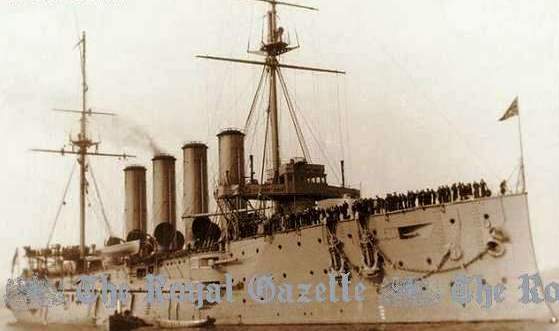
HMS Aboukir
1914. November. 6838 Private Allen Arthur Cuthbertson, one of the members of the Royal Canadian Regiment sent to Bermuda to relieve the Lincolnshire Regiment, died in Bermuda on 16 November and was buried at the British Army's Prospect Military Cemetery, Grave Ref 848.
1914. December 2. The first Bermuda £1 banknote was printed by the American Bank Note Company in Ottawa, showing King George V.
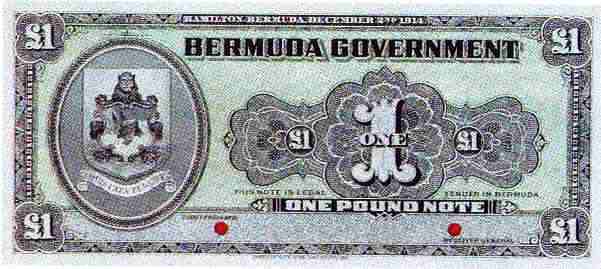
Above. 1914. Proof of first Bermuda Government £1 note.
1914. First arrival in Bermuda of Frances Hodgson Burnett. Born in England on November 24, 1849 and died on October 29, 1924 in the USA, this American naturalized author won international renown in 1886 for her book "Little Lord Fauntleroy" before she emigrated to the USA. In 1911, her "The Secret Garden" was published and also became a global best seller. It has often been claimed, wrongly, that she wrote this book based on a garden she kept in Bailey's Bay, Hamilton Parish, Bermuda. Actually, it was a garden in England - to be specific, the walled garden at Great Maytham Hall at Rolvenden, Cranbrook, Kent - where she wrote it, with its 18 acres of parkland nearby with bluebells, daffodils and flowering trees. Three years after her book was published she visited Bermuda for the first time - and stayed. After a brief sojourn at the Princess Hotel, she rented the house "Clifton Heights" owned by the Outerbridge family, in Bailey's Bay, on the North Shore Road. Burnett settled in Bermuda to get away from the chronic claustrophobia of an adoring public in the USA and the winter weather of her Long Island New York home. At "Clifton," she indulged in her passion for growing roses, especially after her earlier English times. She once wrote to her friends about her 762 roses: "They will bloom when New York is 70 degrees below zero and London is black with fog and slopped with mud and rain." They did. She loved Bermuda so much she continued to reside here, especially in the winter months, until her death in New York in 1924 at the age of 75. She was buried at Roslyn Cemetery, Roslyn, New York, USA.
1914. December. The Bermuda Volunteer Rifle Corps (BVRC) formed a detachment to send overseas to the Western Front. This contingent was composed of volunteers who were already serving, as well as those who enlisted specifically for the Front. The Contingent trained at Warwick Camp through the winter and spring. It consisted of Captain Richard Tucker and 88 other ranks. As there was a shortage of officers, the Governor and Commander-in-Chief, Lieutenant-General Sir George Bullock, filled the role of Adjutant, a position normally filled by a Captain. As a consequence, the contingent was popularly known as Bullock's Boys. Within six months they were to see action.
1915. February 7. Death of Bermudian Bermuda Militia Artillery (BMA) sergeant William James Fowler, at the age of 46. He was the son of Julia Caroline Fowler, of Queen Street, St. George's, and William James Fowler. He was buried at St. George's Military Cemetery, memorial reference 421.
1915. February. The Royal
Canadian Regiment then in Bermuda was reorganized to the four-company system,
and dispositions were as follows:
Headquarters (Prospect); M. G. Section (Prospect); "A" Co.
(Boaz Island); "B"
Co. (Prospect); "C" Co. (St. David's Island) (2 Platoons at
Prospect) and "D"
Co. (St. George's Island.
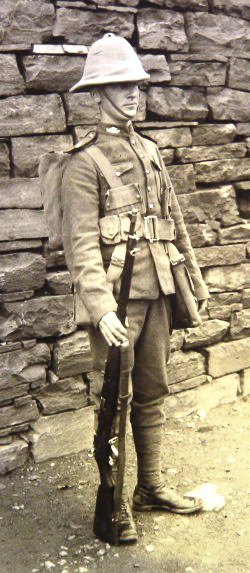
1915. February. The Governor of Bermuda received word from Downing Street in London of the possibility of "several thousand" German military prisoners-of-war arriving in Bermuda. He warned London that they would have to be inoculated before they arrived because of the damage Boer War prisoners in Bermuda who contracted enteric fever had caused in 1901 to the local population, HM ships and British Army garrison when 4,500 Boer War POWs arrived. As it happed, those expected to come never arrived.
1915. April. 7665 Private Louis Roy, one of the members of the Royal Canadian Army sent to Bermuda to relieve the Lincolnshire Regiment, died in Bermuda on 2 April and was buried at the Calvary Roman Catholic civilian cemetery near Hamilton, Grave Ref 85.
1915 April. 7665 Private Joseph R. Marshall, one of the members of the Royal Canadian Army sent to Bermuda to relieve the Lincolnshire Regiment, died in Bermuda on 24 April and was buried at the British Army's Prospect Military Cemetery, Grave Ref 520.
1915. April 25. In Gallipoli, Turkey, the Gallipoli Campaign began, involving British, French and British Commonwealth, mostly Australian and New Zealand (ANZAC) troops on the one side and Turkish troops on the other, the latter fighting for the Germans. Britain, France, supported by their alley Russia, launched a naval attack, followed by an amphibious landing on the Turkish peninsula, with the aim of capturing the Ottoman capital of Constantinople (now Istanbul). But the naval attack was repelled, there were 140,000 British and Allied casualties, with more 160,000 Turkish and related casualties in the eight months campaign. On April 25, during the landing at V Beach, Gallipoli, Seaman George Samson RNR, originally in the Merchant Navy, born January 7, 1889, from Carnoustie, Scotland, UK, was later awarded the Victoria Cross for heroic actions. He was later badly wounded by Turkish Maxim gunfire but survived the war, later rejoining the Merchant Navy and reaching the rank of Petty Officer. After the war he became a resident of Bermuda and died there from pneumonia on 24th February 1923).
1915. May and June. According to the Haig Report (written by Field Marshal Earl Haig, British Army Commander-in-Chief), the Bermuda contingent of the Royal Garrison Artillery, men of the Bermuda Militia Artillery served with the Canadian Corps during the operations subsequent to the capture of Vimy Ridge. "They were employed on heavy ammunition dumps, and great satisfaction was expressed with their work. Though called upon to perform labor of the most arduous and exacting nature at all times of the day and night, they were not only willing and efficient but also conspicuous for their cheeriness under all conditions. On more than one occasion the dumps at which they were employed were ignited by hostile shellfire and much of their work was done under shellfire. Their behavior on all these occasions was excellent, and commanded the admiration of those with whom they were serving."
1915. June. The first 89-strong BVRC contingent, known as “Bullock’s Boys” after then Governor Lieutenant General Sir George Bullock, arrived in Europe after first traveling to Canada. They crossed the Atlantic on a British troopship in company with a much larger Canadian draft. It was hoped that the Contingent could be attached to the Second Battalion of The Lincolnshire Regiment (2 Lincolns), which had been on Garrison in Bermuda when the War began. When the Contingent arrived at the Lincolns depot in Grimsby, the 2nd Battalion was already in France and it was attached to 3 Lincolns instead (at least one Bermudian, though not from the BVRC, Corporal G.C. Wailes, did serve with the 2nd Lincolns). Although commanders at the Regimental Depot had wanted to break the Contingent apart, re-enlist its members as Lincolns, and distribute them as replacements, a letter from the War Office ensured that they remained together as a unit, under their own badge. Arriving in France in July 1015 from Grimsby, they were the first colonial volunteer unit to reach the Front. They went on to fight at the Somme but numbered less than 20 after they suffered heavy losses during the capture of Gueudecourt three months into the Somme. (By the war’s end, the first and second BVRC contingents had lost over 75 per cent of their combined strength. Forty soldiers had died on active service, many at the Somme).
1915. June. The Bermuda Rifle Volunteer Corps (BVRC) sent a contingent of 2 officers and 125 men, who served with 1st Lincolns from June 1915 onwards. They suffered 75% casualties by the end of the war.
1915. 6 August. The Bermuda Volunteer Rifle Corps (BVRC) took over the Guard at Port's Island Prisoner of War Camp and that at Blue Hole on 11th Aug.
1915. August 12. The 38th Bn. Canadian Expeditionary Force (C.E.F) arrived in Bermuda via S.S. Caledonia to relieve the Royal Canadian Regiment.
1915. September 7. A hurricane caused a loaded ammunition ship, to be wrecked on the reefs of the South Shore. The master lost his life. The vessel was the SS Pollockshields, German-built in 1890 as Herodot, sold in 1903 to the Hamburg American Line and named Graecia. Requisitioned as a supply ship for the Great War, the Graecia was captured off Gibraltar by the British and converted for an ammunition vessel for their anti-German war efforts as SS Pollockshields. On August 22 she had sailed from Cardiff, headed for Bermuda, but nearby met hurricane and fog conditions. Captain Ernest Boothe found himself in shallow water on a lee shore: attempts to reverse against the storm winds failed and the ship ran firmly aground on a reef several hundred yards from safety. Thereafter began one of the most daring and successful sea rescues in Bermuda’s history, spearheaded by the whaler, Antonio Marshall Sr, (1880-1952, originally from the Portuguese island of Faial, by then Bermudian). Marshall had a small whaling boat he had imported from New Bedford and with a team of volunteers he transported by horse and cart the little vessel from its anchorage at Jews Bay to Elbow Beach, reaching the shore around 3am on September 8. The rescue operations began at daylight, with storm winds still blowing, and after four trips through the surf, almost all the crew was taken off the Pollockshields without loss of life. Captain Boothe was the exception. Determined to be the last man aboard, he was swept overboard. His floating, bloated body was found several days later at Christian Bay, Southampton. Marshall was later recognized for his heroic act in saving some of the crew.
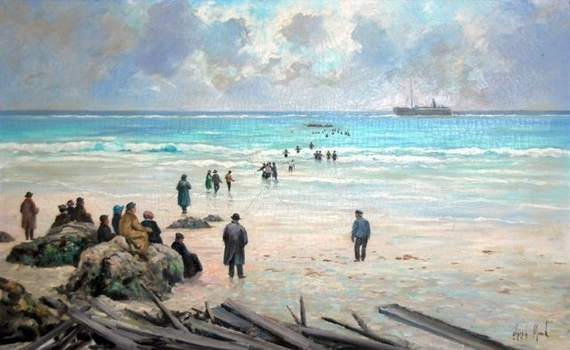
Rescue of the Pollockshield's crew
1915. The War Office in Britain had to make an exceptional payout of £8,000 to an American visitor George Montgomery, who lost his leg when local sailor Alfred Lottimore while out in nearby inshore waters with his vessel hosting on a scenic cruise for Mr Montgomery. The latter was accidentally shot by sentries guarding German prisoners of war on Port’s Island.
1915. A Royal Navy radio mast broke and toppled to the ground at Daniel’s Head. Four members of the Bermuda Militia Artillery who were nearby were killed in the collapse.
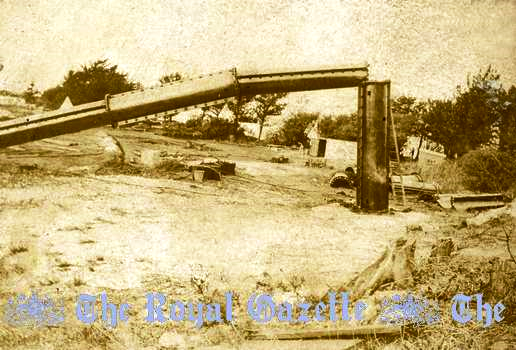
See above item
1916. September 23, a hurricane hit Bermuda.
1916. In Hamilton, the single room at the old Customs House (later, the Colonial Secretariat, later yet the Cabinet Building) was far too small for the Public Library (later, the Bermuda National Library). It was transferred to Par-la-Ville, in premises owned by the Corporation of Hamilton, where it is today (mostly in an extension built and opened in 1957, no longer the original Par-la-Ville).
1916. Cavendish Hall School was founded, to provide a sound education for the girls and boys of Devonshire Parish, a function it accomplished effectively for over a half century in the landmark building still standing at its centre.
1916. May 28. 206 Members of the Bermuda Militia Artillery recruited from Bermuda's black community and four officers commanded by Major Tom Dill (later Bermuda’s Attorney General and father of founder of the law firm that has his name) left Bermuda in convoy for Britain, arriving there on June 9, disembarking at Devonport. Orders were waiting to proceed immediately to France, where they landed June 24, going directly to the warfront. They were all under fire a few days later when involved in the attack on the Somme on July 1. They passed ammunition to batteries at the front from the dumps “so perilously under shell fire they were compelled to work in constant danger which they did efficiently, evincing exemplary courage and tenacity that won them praise from the beginning.” Soldiers from this unit were involved in many of the major battles of the war from the time of their arrival, including the Somme, Vimy Ridge, Messines Ridge and Passchendaele. The Bermudians acquitted themselves so well the Secretary of State for the Colonies, Andrew Bonar Law, in a letter from Downing Street, wrote Governor Sir George M. Bullock in 1916 requesting more troops.
1916. May 31. In the infamous and savage Battle of Jutland fought between Britain's Royal Navy and the German Navy, two Bermuda-linked Petty Officers, Walter Ernest Newton, and George Temple, born in Somerset and later of Portsmouth, England, were killed, in HMS Fortune and HMS Invincible respectively.
1916. June-December. The Bermuda Militia Artillery (BMA) served at the Somme.
1916. July. The Halifax & Bermudas Cable Company and its sister-company The Direct West India Cable Company organized and carried out the re-laying of their cables into Hamilton to divert to the Ducking Stool and from there overland to their offices at 6 Front Street, Hamilton. Once completed, the cable through Hamilton Harbour was abandoned.
1916. Sgt W. (Billy) Richardson, Bermuda Militia Artillery, wrote in his diary about his Great War experiences in Europe. "Our first job was digging trenches. I had a Bible my Auntie gave me and I took it to the trenches. I told those guys: “Tell my Auntie if I don’t come back, I took the Bible with me.”
1916. A Bermuda Volunteer Rifle Corps contingent was attached until the end of the Great War to the 1st Battalion, Lincolnshire Regiment. An official British Army report states: "Originally they joined as a complete machine gun unit, and were found invaluable when there was a scarcity of this weapon in Flanders. After the formation of regular Machine Gun Companies, the Bermuda Volunteers were transformed into Lewis Gun Sections, in which sphere they have done good work. Physically and intellectually they are as fine men as any to be found to their Brigade, and their conduct has always been exemplary. It is hoped that many more soldiers of this stamp can be sent from the Island of Bermuda."
1916. August 18. Second Lieutenant Walter Neville Conyers of Bermuda died in battle. He had enlisted directly into the Royal Berkshire Regiment on March 9 1915 and went to the Western Front on January 13, 1916. He was killed in action at the Battle of the Somme near Bazentin-Le-Petit at the age of 26.
1916. September 15. Arthur John Motyer, born September 2. 1886, 1905 Rhodes Scholar, was killed in action.
1916.September 25. Bermudian soldiers were involved in the capture by the Allies of Gueudecourt. The Bermuda Volunteer Rifle Corps (BVRC) First Contingent had been whittled down to about forty by then, and they lost more than half, either killed or wounded at Gueudecourt. The survivors could not form a company any longer and were merged with the newly arrived Second Contingent and retrained as Lewis gunners.
1916. November 5. Harry Francis Bridges was killed at Vermelles, France. He was a Lance Corporal, Bermuda Volunteer Rifle Corps attached to 1st Battalion, Lincolnshire Regiment. Service No. 25334. He is buried in the British Cemetery in Vermelles. The original wooden cross from his grave hangs on the wall in St. Marks Church, Cherry Orchard, Worcester, England near where he was brought up.
1916. The silent and black-and-white movie "Innocent Lie (The)" - see http://www.imdb.com/title/tt0006860/ was filmed in Bermuda.
1917. January 1. Opening of New Town Cut Channel St. George's, Bermuda, by Royal Navy dredgers. With a speech by Governor Sir George Bullock in Market Square. The Norwegian cargo ship SS Admiralen, under local pilot James Griffiths, was the first to sail through Town Cut. Until then, the main shipping channel had been between Paget and Smith's Islands.
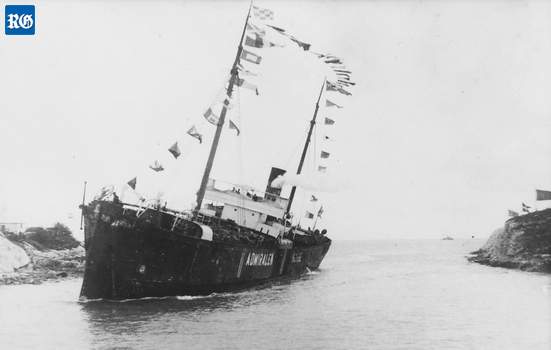
See story above
1917. March 22. Bermudian A. W. ("Bill) Forbes was a junior wireless officer aboard the New Zealand Shipping Service's Rotorua, 11,140 tons, one of the larger ships in the British-flagged Merchant Navy when it was torpedoed and sunk by a German U-boat in the English Channel, 24 miles from where she had begun her voyage to Wellington, New Zealand, at location 50.17 North, 03.07W, with London general cargo. He survived as did all but one of the crew. The U-boat was UC 17, commanded by Ralph Wenninger. Forbes survived, went on to join Cable and Wireless and in 1937 pioneered the radio direction finding of flying boats enroute to and from Bermuda.
1917. April 9-12. The Bermuda Militia Artillery (BMA) in France was engaged in the thickest battles, acquitting themselves heroically during the attack on Vimy Ridge, see https://en.wikipedia.org/wiki/Battle_of_Vimy_Ridge). (The BMA was a corps of some 240 black Bermuda volunteers who set sail to fight on the Western Front in France as the Bermuda Contingent of the Royal Garrison Artillery). The island troops hd earlier served at the Somme from June to December 1916. They were then moved away from the Front, serving on docks until April, 1917, when they were attached to the Canadian Corps, serving in the Battle of Vimy Ridge. The Bermuda contingent served primarily in ammunition supply, at dumps, and in delivering ammunition to batteries in the field. The BMA played a key role in supporting artillery, which cut through German barbed wire, bombarded enemy trenches and allowed Canadian troops to capture the strategic ridge. which won them commendation from Army Headquarters. Field Marshal Sir Douglas Haig was the British Army's commander-in-chief in France, later said in his report made public after the war issued just after the war, that “This contingent [BMA] served with the Canadian Corps during the operation in May and June, subsequent to the capture of Vimy Ridge. “They were employed on heavy ammunition dumps, and great satisfaction was expressed with their work. Though called upon to perform labour of the most arduous and exacting nature at all times of the day and night, they were not only willing and efficient but conspicuous for their cheeriness under all conditions. Their officers rendered valuable services in the management of the dumps. The unit also worked on ammunition dumps from end of June to the beginning of September in another corps. On more than one occasion the dumps at which they were employed were ignited by hostile shell fire, and much of their work was done under shell fire. Their behavior on all these occasions was excellent, and commanded the admiration of those with whom they were serving. In fact, the manner in which they carried out their work under all conditions was strikingly good." There were severe casualties among the Bermudians, which increased when they moved on May 23 to Army Area, and were attached to the Fifty-second Heavy Artillery Brigade. The Battle of Vimy Ridge, which saw the deaths of 3,598 Canadian soldiers over three days, is regarded in Canada as one of the events that forged the nation and is commemorated at home and at the Vimy Ridge Memorial, part of a park permanently ceded to Canada by France to honour their courage in liberating the country. (100 years later, on April 9, 2017, the centenary was marked on the site of the battlefield with thousands of Canadians gathering to reflect on its legacy. Prime Minister Justin Trudeau paid tribute to those who fought and he attended a commemorative ceremony with French President François Hollande, the Prince of Wales, the Duke of Cambridge and Prince Harry. The Queen also sent a message to Canadians in French and English commending their soldiers for the sacrifice they made).
1917. April 28. A reduction in rations given to German prisoners-of-war in Bermuda invoked a protest. It was explained it was because British POWs in German camps had their rations reduced.
1917. King Edward VII Memorial Hospital's main entrance patio was erected, with roman numerals on the front facade showing this year's date. Plans for the original King Edward VII Memorial Hospital appeared around 1910, but construction of the project was delayed due to World War One. The building was opened to the public by Albert Edward, Prince of Wales, in 1920, and remained in operation until the opening of the existing KEMH acute care building in 1965.
1917. June 7. The Bermuda Militia Artillery (BMA) were in the thick of the attack on Wytschaete when several of the men were gassed. Casualties mounted as the Bermudians were moved from one front to another and were exposed to daily shell fire and lethal night bombings. (By the end of June 1917 the contingent was reinforced by a second contingent of 40 men and two officers, who arrived from Bermuda and went straight to the front for their baptism of fire).
1917. June 1. Arrival in Bermuda of Albert Nicholl, then as the chief Examination Officer of the Royal Navy in Bermuda during World War 1. He was based as such in St. George's. After the war ended and independently well-off, known as Nicky, he stayed in Bermuda became a philanthropist who later left most of his estate to promote education in Bermuda. Today, his largesse is given out to worthy recipients as the A E. Nicholl Scholarships.
1917. July 26. Robert Lightbourn of Bermuda killed in action in France while an Acting Captain, Gloucester Regiment. Born November 2, 1884. 1915 Bermuda Rhodes Scholar.
1917. August 8. Bermudian actor Earl Cameron was born in Pembroke. He later had a career spanning appearances in over 60 films and TV programmes and recently also celebrated the 40th Anniversary of his appearance in the cult TV programme “The Prisoner”. When a youngster, he joined the British Merchant Navy, and sailed mostly between New York and South America. When war broke out he found himself stranded in London, arriving on 29th October 1939. As he himself put it in an interview for The Royal Gazette Newspaper “I arrived in London on 29 October, 1939. I got involved with a young lady and you know the rest. The ship left without me, and the girl walked out too.” His first acting role came in 1942 when he got a part in a West End production of Chu Chin Chow. He was good enough to act in a number of plays in London, including The Petrified Forest. He understudied with Amanda Ira Aldridge, an opera singer, singer, teacher and composer, daughter of the famed black American actor Ira Aldridge. His breakthrough acting role was in The Pool of London, a 1951 film set in postwar London involving racial prejudice, romance, and a diamond robbery. He then appeared in the 1955 film Simba, a drama about the Mau Mau uprising in Kenya in which Cameron played the role of Peter Karanja, a doctor trying to reconcile his admiration for Western civilization with his Kikuyu heritage. From the 1950s he had major parts in many films including: The Heart Within (1957) in which he played Victor Conway in a crime movie yet again set in the London docklands; Sapphire (1959) in which played Dr Robbins, the brother of a murdered girl; and The Message (1976) - the story of the Prophet Muhammad; Tarzan the Magnificent (1960) in which he played Tate; Flame in the Streets (1961) in which he played Gabriel Gomez; Tarzan's Three Challenges (1963) in which he played Mang; Guns at Batasi (1964) in which he played Captain Abraham; Battle Beneath the Earth (1967) in which he played Sergeant Seth Hawkins; Sandwich Man (1966) in which he played a bus conductor; and the James Bond movie Thunderball (1965) in which he played the role of James Bond's Caribbean assistant Pinder Romania. More recently, he was in The Interpreter (2005) in which he played the fictitious dictator Edmond Zuwanie. In 2006, not looking at all 89 years old at the time, he had a brief speaking part early in the film The Queen, playing the affable artist painting the Queen (Helen Mirren). He has appeared in a wide range of TV shows, one of the earliest of which was in the BBC 1960 TV drama The Dark Man in which he played a West Indian cab driver in the UK. The show examined the reactions and prejudices he faced in his work. In 1956 he had a smaller part in another BBC drama exploring racism in the workplace entitled Man From The Sun in which he appeared as a community leader called Joseph Brent. He was in five episodes of the TV series Dangerman alongside series star Patrick McGoohan. He worked with McGoohan again in 1967 when he appeared in the TV series The Prisoner as the Haitian Supervisor in the episode "The Schizoid Man". His other work on popular TV shows includes: Emergency Ward 10; The Zoo Gang; Crown Court; Jackanory in 1971; Dixon of Dock Green; Doctor Who; Neverwhere; Waking the Dead; Kavanagh QC, Babyfather; Eastenders (as Mr Lambert), Dalziel and Pascoe, and Lovejoy. He has also appeared in a number of other one off TV dramas including: Television Playhouse (1957); ITV Play of the Week (two stories - The Gentle Assassin (1962) and I Can Walk Where Like Can't I? (1964); the BBC's Wind Versus Polygamy (1968); ITV's A Fear of Strangers (1964); ITV Play of the Week - The Death of Bessie Smith (1965); The Great Kandinsky (1995); and two episodes of Thirty-Minute Theatre (1969 and 1971). Cameron is a member of the Baha'i Faith. He currently lives in Warwickshire in England. He is married to Barbara Cameron. His first wife, Audrey Cameron, died in 1994. He has five children. In Bermuda in 2007, accompanied by his wife, he was given the Prospero Award for lifetime achievement in his field by the Bermuda International Film Festival. In the Queen's New Year Honors List 2008/2009 he was awarded a CBE for services to drama after a movie, television and theatre career spanning seven decades.
1917. August 31. Death from drowning of British Army soldier Thomas Thompson, gunner, 95th Company Royal Garrison Artillery, at the age of 44. He was buried at the St. George's Military Cemetery. He was 44 years old, born at Bolton UK and son of Thomas and Ann Thompson and husband of M. A. Thompson of 3 Dukinfield Place, Hillgate, Stockport, Cheshire, UK.
1917. Death and burial, at the St. George's Military Cemetery, Bermuda, of Private Arthur LeGrice, of the New Zealand Expeditionary Force. He was the only ANZAC soldier from the First World War buried on the Island.
1917. The Moniz family, Portuguese Bermudians and farmers, began the first tomato cannery in Bermuda, at Magnolia Farm, off the southern side of South Road, Smith's Parish. They were Jerry Moniz; Joseph Moniz and Manuel Moniz. Other members of their family were included on the payroll.
1917. September 17. Four Bermudians, all members of the Bermuda Militia Artillery and Royal Garrison Artillery, were killed on duty in an accident involving a mast at Daniel's Head when a section of the structure gave way. They were Sergeant William James Fowler and Gunners Richard Thomas Ambrose Alick, Joseph William Wilson Butterfield and Clarence Wentworth Dill. All four men were buried with full military honours, with Union flags covering their coffins and the band of the Bermuda Militia Artillery preceding them. At least twenty carriages followed, containing relatives and friends of the deceased. Fowler was buried in St. George's, but the other three were laid to rest in "the new military cemetery on Somerset Island, which lies close to the seashore". Their deaths were considered to have been in the execution of their duties just as much as if they had died at the Front. His Excellency the Governor was in attendance, along with contingents of the army and navy, and hundreds of spectators lined the road to the cemetery." The BMA/RGA men are memorialized in a stained glass window of the Cathedral in Hamilton, along with other Bermudians killed in action.
1917. November 9. The USS Margaret and several other US Navy ships arrived in Hamilton, Bermuda after having set out on November 4 from Newport, Rhode Island, on the first leg of what would prove an eventful voyage across the Atlantic. On this stage of the trip Margaret's companions included the tender Hannibal and five other yachts converted to patrol vessels: Helenita (SP-210), May (SP-164), Rambler (SP-211), Utowana (SP-951) and Wenonah (SP-165). Each of the six former yachts towed an American-built French submarine chaser, a 110-foot craft with insufficient range for long trips. Though Helenita, Margaret, May and Utowana broke down along the way, the little flotilla reached Hamilton safely. Following rest and repairs, the group set out again on 18 November, bound for the Azores. Helenita and Utowana remained at Bermuda.
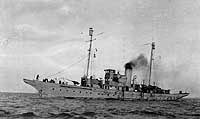
USS Margaret off Bermuda 1917
1917. December 12. The death while at sea, in action against the German Navy, of Bermuda-based Lieutenant Commander Ernest Grant Ede RN, while on convoy duty in the North Sea on HMS Pellew. His wife, Winifred, was a Bermudian restaurant owner. Their infant son Herman had been born earlier that year (in 1940, as a Flying Officer, the first Bermudian to die in World War 2.
1918. New Year's Day. A gunshot reverberated on the waters of St George’s Harbour and an innocent sailor died on the deck of a military tugboat, the US Army tug USACT Fred E. Richards as she was en route to Europe to serve in World War 1 . It happened after several American vessels were passing through Bermuda on their way to the killing fields of Europe. It is said that several Russians of Red and White persuasions were aboard and they had a fight on board involving guns, possibly caused by tension between those who believed in a king as capitalists and those who were communists. One hapless seaman stuck his head out of a porthole, was shot and died, buried the next day at sea. He was Thomas A. Crealy, Seaman of the Fred E. Richards, aged 33. Among those who attended the burial a day later was 16-year-old Leonard Tucker, later known as ‘Dickie. His father, the Rev. Arthur Tucker, conducted the service. It was this incident that later caused him to create his Guild of Holy Compassion to seamen who died in Bermuda. As he stood by the grave, one of Mr Crealy’s shipmates asked the teenager to tend his friend’s tombstone. Mr Crealy’s tombstone at St Peter’s Church reads: “In memory of Thomas A. Crealy, Seaman of USACT Fred E Richards. Died at Bermuda, January 1st, 1918, aged 33. Erected by the Officers and crews of USACT Fred E Richards & Kingfisher.”
1918. The first United States military base in Bermuda was established in the Great Sound at Morgan and Tucker's Islands, for the US Navy. It was a temporary base that lasted until not long after the end of World War 1 (The Great War). It was at that same location that in 1941 another, far more permanent (until 1995) US Navy Base was built from scratch.
1918. February. The Swiss Consul in New York visited Bermuda to examine Bermuda's POW camp for German internees and issued a report praising Captain Pitt's administration of the camp. He and the guards were praised for their spirit of goodwill and fair play to the prisoners, some of whom voiced similar sentiments.
1918. February 25. Arthur Percy Bridges, brother of Harry Francis Bridges who was killed in France fighting for Bermuda and the UK, died of wounds in Bermuda. He had been invalided from the UK, having served in the same unit as his brother.
1918. April 15. Captain W. G. Cutter, US Navy, arrived in Bermuda on the SS Arethusa to assume command of the new US Naval Base 24. Together with a US Naval detachment, operation a supply station on Agar's Island, this station operated for the remainder of the war, serving one hundred and twenty-six transiting submarine hunters, which travelled in convoys of between one and two dozen vessels (one vessel sank in Two Rock Passage, the main channel into Hamilton Harbour. It was refloated, but sank again off Agar's Island).
1918. April 20. U. S. subchaser No. 126, displacement 77 tons; grounded and partially sank near Two Rocks Passage, Bermuda Harbor; finally sank about 100 yards south of Agar's Island; salvaged; no casualties.
1918. En route to the USA from Britain with a cargo of Dover chalk, the three-masted, steel-hulled, 236 foot vessel Taifun, built in Greenock, Scotland in 1894, was badly damaged at sea in a bad storm. She was stranded there for 3 years and in February 1921 was further damaged by a steamer in the harbour. She was left to decay.
1918. Spanish influenza epidemic in Bermuda, imported from the USA.
1918. After years of declining sales, caused since 1875 by increased competition from larger arrowroot enterprises in USA and the Caribbean, the Camden Arrowroot operation in Paget ceased. Arrowroot had been a staple of the Bermudian economy.
1918. June 1.
21-year-old
Bermudian Leonard DeGraff Godet died in the First (Great) World War.
He was a brilliant student who gave his life while
serving with the Royal Flying Corps, then the Royal Air Force. Mr. Godet
was born in Paget in 1896. He was a Rhodes
Scholar, earlier at Oxford University until he answered the call of duty. He received his pilot wings on August 14, 1917 and went to France on
active service four days later. He
died when his plane was brought down in flames across German lines in France,
after completing 16 long-distance raids. 2nd Lieutenant Godet was flying with
2nd Lieutenant Arthur Haley, born 1895, in a DH4 that was shot down by German anti-aircraft
fire while over Antilly, near Metz. Haley had earlier been in the Royal
Engineers, Signals Division in 1914. He had served in France, been wounded in
1917, was repatriated and in 1918 given a temporary commission in the Essex
Regiment, then attached to the Royal Flying Corps, later Royal Air Force. Godet was the pilot and Haley the observer.
The two were initially buried together with great honour by French villagers in
a grave especially created for them in Antilly, but it is believed they were later
moved by the Commonwealth War Graves Commission as they are now reburied in adjacent graves
numbered 374 and 375 in the French National Cemetery at Chambieres, Metz.
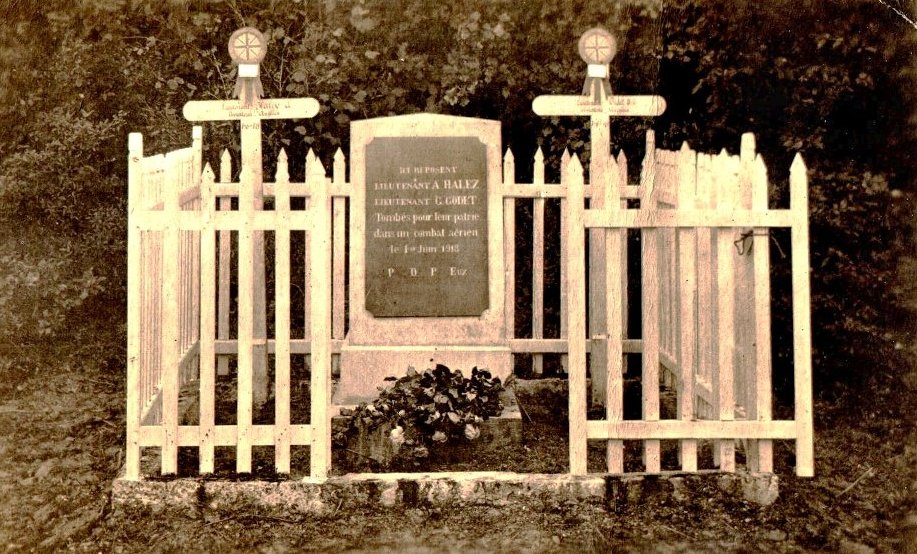
Initial burial place in Antilly, provided by kind-heated locals, of 2nd Lieutenants Leonard Godet and Arthur Haley (spelt wrongly by the locals). They were later reburied, again together.
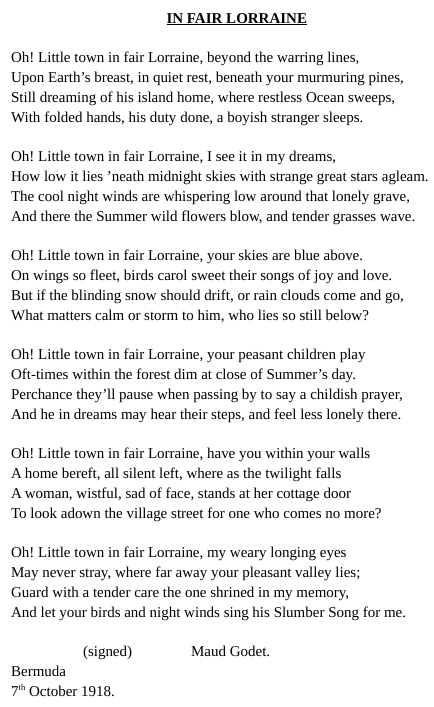
Poem above was discovered by Mrs Janet Bowen (nee Haley), among her father's papers, below, of the poem written by grieving mother Maud Godet of Bermuda about the resting place in Lorraine, France, of her beloved dead son Leonard, buried alongside Arthur Haley. Mr Haley was the great uncle of Janet Bowen, her grandfather's brother. Photos above and additional information and copy of poem above kindly sent in June 2015 to Bermuda Online by Roger Bowen and his wife Janet Bowen, of the UK.
1918. June. Private George Wellington Linford, who served with the East Yorkshire Regiment, died in a bid to rescue seven-year-old Thomas Stone from the sea off North Shore. Both were drowned. Private Linford’s grave is at Prospect .
1918. August. H. St George Butterfield founded the business of Butterfield & Vallis, wholesale importers.
1918. September. Bermudian Lieutenant Montgomery-Moore, who had served with distinction throughout the Great War, along with the rest of the Royal Flying Corps and the Royal Naval Air Service (RNAS), became part of the new Royal Air Force.
1918. German submarine U-139 was placed under the command of Kapitanleutnant Lothar Von Arnauld de la Perriere, Germany’s leading U-boat ace. Arnauld sank six Allied ships totaling over 72,000 tons during his one brief patrol with U-139 this year.
 1918.
September 28. The world faced a deadly pandemic, Spanish flu, that killed at
least 50 million around the world. A front-page story on Spanish flu
headlined “Influenza spreads in and near Hamilton” was carried in The
Royal Gazette. It said: “Only the most rigid precautions will prevent
further increase of the cases. Above all, avoid going to any public place or
church where others gather, lest the germs of the disease be spread about. The
epidemic of Spanish influenza is spreading in the town of Hamilton and in the
adjoining country districts.”
1918.
September 28. The world faced a deadly pandemic, Spanish flu, that killed at
least 50 million around the world. A front-page story on Spanish flu
headlined “Influenza spreads in and near Hamilton” was carried in The
Royal Gazette. It said: “Only the most rigid precautions will prevent
further increase of the cases. Above all, avoid going to any public place or
church where others gather, lest the germs of the disease be spread about. The
epidemic of Spanish influenza is spreading in the town of Hamilton and in the
adjoining country districts.”
It outlined the progress of the disease elsewhere and advised “‘Cover up each cough and sneeze; if you don’t, you’ll spread disease’ is suggested as the best slogan for everybody while influenza is raging.”
But it said experts had said that there was “nothing alarming” about the new strain of flu if it was “properly treated and the patient takes care to avoid possible complications”. The tone, however, became more urgent only a month later as the killer flu virus tightened its grip on Bermuda. And — like Covid-19, although a very different virus — the island’s docks, the airports of their day and movement of people around the world, were major transmission routes for the disease.
A US Navy sailor, Rees Williams, who took ill as his ship steamed from Cuba to Bermuda and was transferred to the Royal Naval Hospital when the ship arrived at Dockyard on September 16, was the first recorded death from the virulent strain. He died of pneumonia brought on by the flu on September 23.
There was a second outbreak on his ship while it was in Bermuda and 72 cases were seen. A Dr Harvey, in a report on the epidemic, said that the first case diagnosed on the island was a private soldier in the East Yorkshire Regiment, which was based at Prospect. The soldier, who took ill on September 15, had earlier travelled on a steamer to Boaz Island and returned the same day with several workers from the then Royal Naval Dockyard.
A British Army sergeant, who had had no contact with the sick private, came down with Spanish flu on September 17. The third case was found to have been in contact with the private and was admitted to the Royal Naval Hospital on the same day
1918. October 1. Mr and Mrs Bowen referred to above also sent a Bermuda Royal Gazette Front Page of this date. See 1918-10-01 Bermuda Royal Gazette.pdf. It included (top right) an article entitled "Lt. Godet's Brave End." It credited Mr. F. L. Godet, father of Lt. Godet, for permission to publish an English translation of a statement sent in German by a German major about the death in air combat of Lt Godet. The statement was sent to Mr Godet Senior by a friend residing in Switzerland who was acquainted with the Right Honourable Count Conrad Zeppelin, a well-known and very senior German official and who was appealed to by the friend for assistance in tracing the missing aviator. A courteous reply was promptly given to Count Zeppenin and relayed back via the friend to Lt. Godet's father.
1918. October 18. The Bermuda Colonist newspaper published this account of the gallantry and heroism of Bermuda's military hero in the UK, Lieutenant Arthur Rowe Spurling, Bermuda Volunteer Rifle Corps, Lincolnshire Regiment, Royal Flying Corps, Royal Air Force. "A formation of British machines had been carrying out some important operations well over the German lines. On the return journey the weather suddenly became hazy, and one of the pilots lost touch with the formation in the clouds. The British pilot set his course due west, and flew on for some time. Having made what he thought was sufficient allowance for the distance to the British lines, he put down the nose of his machine and saw beneath him an aerodrome. The wind, however, freshened considerably, and so far as covering the ground was concerned he had been making only half the speed shown on airspeed indicator. As he circled over the aerodrome, preparing to land, a German Scout machine suddenly appeared from the clouds above him, and immediately to attack. Marveling at the unusual temerity of the German in daring to attack over an English aerodrome, the British pilot checked his descent and opened fire on his attacker. At this moment he became aware that no fewer than thirty German machines were actually climbing towards him from the aerodrome. Realizing now that he was over an enemy aerodrome, he dived towards the first group of German squadrons, both he and his observer firing on every machine upon which they could get their guns to bear. The enemy pilots appeared too bewildered by the outstanding audacity of the British airmen to attack them effectively at first, and their own tremendous numerical superiority seemed further to confuse them. One German plane burst into flames in the air, two more went down spinning and side slipping completely out of control. Four enemy scouts had by this time got into position to attack, clinging to the tail of the British machine. Two of these were sent blazing to earth. Shaking himself clear of the remainder, the British pilot opened his throttle and sped homewards leaving on that German aerodrome three blazing wrecks, and two other crashed machines as a highly satisfactory outcome of what might have proved a fatal mistake.
1918. November 2. A prestigious military decoration was awarded to a Bermudian First World War hero in London. He was Lieutenant Arthur Rowe Spurling, from Hamilton. Earlier, he'd been awarded another medal, the Star Trio. He was presented with the Distinguished Flying Cross for flying his bomber into the centre of a formation of some 30 German planes. He and his observer shot three down in flames and sent two others crashing to the ground. He had sent a postcard sent to his half-sister Ethel in Bermuda after he was injured twice on the front line. He and his wife had a daughter, Ilys Spurling Marsh, who was brought up at "Penarth", the family home in Rosemont Avenue. Her father rarely talked about his wartime experiences, including the heroics which led to his DFC. Her father, known as Rowe, was born in 1896 and joined the Bermuda Volunteer Rifle Corps in February 1915, sailing with the first war contingent for England in May and soon after being posted to the Lincolnshire Regiment. His 1916 postcard to Ethel describes how was "wounded in the hand" on July 3 and returned to the front to be "wounded in the foot and buried for a few hours" on July 13. He was commissioned in July 1917 and qualified for service in the Royal Flying Corps in September, before being posted to France and joining 49 Squadron in July 1918. His DFC was announced in the London Gazette on this day, in a report which described how he got separated from his formation and was attacked by a Fokker biplane at 2,000 feet. "Lt. Spurling then observed some 30 machines of the same type, heavily camouflaged; with great gallantry he dived through the centre of the formation, shooting down one machine in flames; two others were seen to be in a spin." Five of them then closed on his machine, but by skilful manoeuvring, Lt. Spurling enabled his observer to shoot down two of these in flames. The three remaining aircraft broke off the combat and disappeared in the mist. A fine performance, reflecting the greatest credit on this officer and his observer." He returned a hero to Bermuda after the First World War and obtained his commission again in World War II, serving in Canada with RAF Ferry Command, where he was credited with unearthing a Nazi spy. He married Ilys Darrell in 1948 and ran a taxi service on the Island, as well as importing mushrooms and starting the Rowe Spurling paint supply company. He and his wife moved to Guernsey in the early 1970s but eventually sold up there with a plan to return to Bermuda. Instead, Lt. Spurling developed Alzheimer's Disease and died in a nursing home in England, aged 88. His body was flown back to the Island for a funeral at the Anglican Cathedral and he is buried in Pembroke.
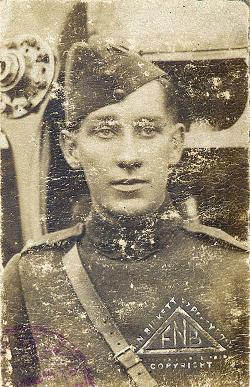
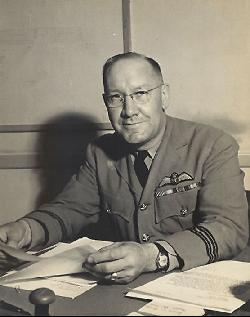
Lieutenant Arthur Rowe Spurling in WW1 (left) and as a Royal Air Force officer in WW2 (right)
1918. November 11. The Great War ended, to great rejoicing. Ninety people lost their lives fighting for Bermuda and the UK in this war. By the end of the war, the BVRC had earned the battle honours Ypres 1915, Neuve Chapelle, Loos, Somme 1916, Ypres 1917, Lys, Hindenburg Line, Messines 1917, Somme 1918.
1918. November 11. At the American Navy Club, under auspices of the YMCA, Hamilton, Bermuda, on behalf of the New York alumnae club, Mrs. Carl Loop, whose husband was consul in Bermuda, told of her war work, as organizer and president of the American Navy Club of Bermuda "which provided quarters and entertainment for sailors of the United States and our Allies."
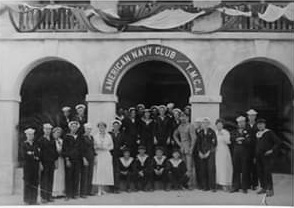
See above story
1918. Over 240 black Bermudians served with the Bermuda Militia in the Great War.
1918. Watched by members of the Bermuda Volunteer Rifle Corps, German prisoners-of-war interned in Bermuda since 1914 left Tobacco Bay in St. George's in lifeboats for a ship moored at Five Fathom Hole which took them to Germany.
1918. Return to Bermuda after Great War experience, of Arthur St. George Tucker. He was born on March 15, 1896 at Sackville, Nova Scotia; the third child of the Reverend (later Canon) Tucker and Elizabeth Christiana (Mathurs) Tucker, one of three sons, the other two being Edmund Richard Harvey Tucker and Leonard Nigel “Dickie” Tucker. The family had long relocated to Bermuda. At the age of 15 he became an apprentice on a ship plying trade between London and the West Indies. Upon the outbreak of World War I he attempted to join the London-Scottish Regiment, but was turned down due to age. Undaunted he jumped ship in Demerara and after hiding for three weeks in the jungle, worked his way to England and joining the Royal Navy as a gunner. He served first upon H.M.S. Victory and later upon H.M.S. Lurcher where he was seriously wounded at the Battle of Jutland. He was later transferred to the Canadian Navy and invalided out in 1918.
1918. Return to Bermuda, after her war experience, of Gladys Misick (later, Morrell), was born in Somerset, daughter of Terrence Misick and Thalia J. D. Misick (née Wells, who had been born in British Guiana to Bermudian parents). She attended Bermuda High School and North London Collegiate School, and went on to receive an honours bachelor's degree from Royal Holloway College, London University, in 1911, becoming one of the first Bermudians to earn a university degree. Her ambition to become a lawyer, however, was unfulfilled because law schools in England did not admit women until 1919. After graduating, she travelled to India to visit her brother John, and on her return to England, she took up working and organising in the women's suffrage movement, and was active in Millicent Fawcett's National Union of Women’s Suffrage Societies until the end of 1913. She returned to Bermuda the following year and began a woman suffrage campaign in Bermuda, holding the first meeting in St. George's in 1914. On the outbreak of World War 1, she travelled back to England with the aim of assisting the war effort. Supporting herself by working in an insurance firm in London, she then volunteered with the Red Cross, and subsequently worked close to the front lines in Verdun, France, serving food to soldiers and tending the wounded, until she fell ill herself and was sent back to England in 1918.
1918. Philanthropist James “Dick” Richards built the Canadian Hotel after purchasing property on Reid Street, Hamilton. The Canadian Hotel was built in stages, with the four-storey first section with a lion on top completed in 1921.
1919. January 28. The Sunshine League charity was founded by Agnes May Robinson and Etta Jones.
1919. January. The US base in Southampton was closed, following the ceasation of hostilities.
1919. February 1. The Bermuda Union of Teachers (BUT) was formed. It was Bermuda's first union, created by Edith Crawford, Matilda Crawford, Adele Tucker and Rufus Stovell.
1919. May 22. First aircraft seen in Bermuda.
 It
was a Burgess-Curtiss N-9H Jenny, with registration number A-2646, powered by a
Wright-Hispano 150 horsepower engine. It was a naval scout hydro-airplane that
normally traveled on the deck of her mother ship the USS Elinore. The aircraft
had a gross weight of 2765 pounds and a top speed of 80 miles per hour. The 8725
ton cargo vessel was launched in 1917 as the General de Castelnau and was
transferred from the US Shipping Board to the US Navy for war service. After the
war, she had dumped gas drums and mustard gas shells in deep waters off
Virginia. On this date, she was in the town of St. George in
Bermuda after a scientific research voyage south of Bermuda, sheltering from bad
weather. It was flown over the City
of Hamilton Harbor by United States Navy Ensigns G. L. Richard and W. H.
Cushing. By special invitation, given his interest in aviation and his position,
the sole passenger on the airplane was Governor General Sir James
Willcocks. He dropped from the open cockpit the first "Air Letter"
ever posted in Bermuda. A total of
560 N-9s were built during World War I, most of which were "H" models.
Only 100 were actually built by Curtiss. Most were built under license by the
Burgess Company of Marblehead, Massachusetts. Fifty others were assembled after
the war, from spare components and engines by the U.S. Navy at Naval Air Station
Pensacola in Florida.
It
was a Burgess-Curtiss N-9H Jenny, with registration number A-2646, powered by a
Wright-Hispano 150 horsepower engine. It was a naval scout hydro-airplane that
normally traveled on the deck of her mother ship the USS Elinore. The aircraft
had a gross weight of 2765 pounds and a top speed of 80 miles per hour. The 8725
ton cargo vessel was launched in 1917 as the General de Castelnau and was
transferred from the US Shipping Board to the US Navy for war service. After the
war, she had dumped gas drums and mustard gas shells in deep waters off
Virginia. On this date, she was in the town of St. George in
Bermuda after a scientific research voyage south of Bermuda, sheltering from bad
weather. It was flown over the City
of Hamilton Harbor by United States Navy Ensigns G. L. Richard and W. H.
Cushing. By special invitation, given his interest in aviation and his position,
the sole passenger on the airplane was Governor General Sir James
Willcocks. He dropped from the open cockpit the first "Air Letter"
ever posted in Bermuda. A total of
560 N-9s were built during World War I, most of which were "H" models.
Only 100 were actually built by Curtiss. Most were built under license by the
Burgess Company of Marblehead, Massachusetts. Fifty others were assembled after
the war, from spare components and engines by the U.S. Navy at Naval Air Station
Pensacola in Florida.
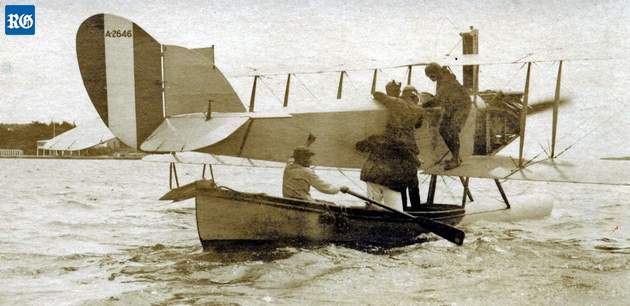
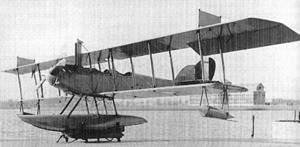
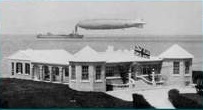

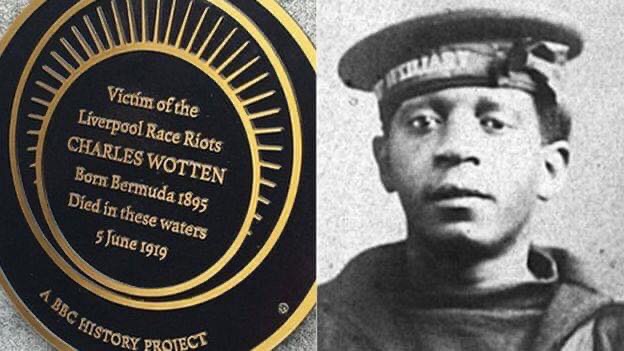 1919.
June 5. A 24 year old Bermudian
was the victim of an early British race riot in the pot of Liverpool. He was
Charles Wooten, a ship’s fireman. He was murdered at Liverpool docks. Racial violence broke out in Liverpool and other ports in the
economic downturn after the First World War. Wooten, whose surname is variously
spelt Wootton, Wotton, and Wootten, was drowned during a “racas between black
and Scandinavian sailors. A fight took place in Liverpool's Great Georges Square.
It involved rival groups of black and .Scandinavian. men. The police were called
and decided to arrest the black men. They went at the head of an angry white
crowd to Upper Pitt Street, where there were hostels and other houses occupied
by the black community. There was resistance to this incursion and two police
officers sustained gunshot wounds, seemingly from the same bullet. Charles
Wootton lived at 18 Upper Pitt Street. He fled from the house to escape. He was
chased about half a mile to the Queens Dock. A police officer took hold of him
there but the crowd snatched him away. He either jumped or was thrown into the
water. He was then hit on the head by a stone and drowned. The horror increased.
The police raid on Upper Pitt Street continued and eleven black men appeared in
court the next morning, several with bandaged heads. One was wearing his naval
uniform. All were charged with attempted murder on the flimsiest identification
evidence. As for the actual murder, no one was as much as questioned. Charles
Wootton's inquest opened and closed in a single day a week later. It was said
that the dead man was reasonably believed to have fired at the police and that
he was escaping lawful arrest. The stone that hit him was thrown .from the
middle of the crowd. while a police officer tried to .rescue. him. The jury
recorded these events without even calling the event an unlawful killing. The
atrocities continued in the following days. Crowds - at times several thousand
strong - attacked black-occupied homes and hostels. Whole buildings were vandalized,
emptied of their furniture and even set alight. There was a chilling experience
of being chased all over town by white mobs. Within a week over seven hundred
black residents were detained in police stations for their own protection, as
the police could not cope.
1919.
June 5. A 24 year old Bermudian
was the victim of an early British race riot in the pot of Liverpool. He was
Charles Wooten, a ship’s fireman. He was murdered at Liverpool docks. Racial violence broke out in Liverpool and other ports in the
economic downturn after the First World War. Wooten, whose surname is variously
spelt Wootton, Wotton, and Wootten, was drowned during a “racas between black
and Scandinavian sailors. A fight took place in Liverpool's Great Georges Square.
It involved rival groups of black and .Scandinavian. men. The police were called
and decided to arrest the black men. They went at the head of an angry white
crowd to Upper Pitt Street, where there were hostels and other houses occupied
by the black community. There was resistance to this incursion and two police
officers sustained gunshot wounds, seemingly from the same bullet. Charles
Wootton lived at 18 Upper Pitt Street. He fled from the house to escape. He was
chased about half a mile to the Queens Dock. A police officer took hold of him
there but the crowd snatched him away. He either jumped or was thrown into the
water. He was then hit on the head by a stone and drowned. The horror increased.
The police raid on Upper Pitt Street continued and eleven black men appeared in
court the next morning, several with bandaged heads. One was wearing his naval
uniform. All were charged with attempted murder on the flimsiest identification
evidence. As for the actual murder, no one was as much as questioned. Charles
Wootton's inquest opened and closed in a single day a week later. It was said
that the dead man was reasonably believed to have fired at the police and that
he was escaping lawful arrest. The stone that hit him was thrown .from the
middle of the crowd. while a police officer tried to .rescue. him. The jury
recorded these events without even calling the event an unlawful killing. The
atrocities continued in the following days. Crowds - at times several thousand
strong - attacked black-occupied homes and hostels. Whole buildings were vandalized,
emptied of their furniture and even set alight. There was a chilling experience
of being chased all over town by white mobs. Within a week over seven hundred
black residents were detained in police stations for their own protection, as
the police could not cope.
There had been a black community in Liverpool for centuries, largely by reason of the shipping trade. World War I brought many more people from all corners of the British Empire either to fight or to fill gaps in the labour force left by recruitment and conscription. These new arrivals were British subjects and there was no work permit system. With the end of the war, there was massive demobilization and unemployment. Black ex-servicemen were cast adrift and found homes in communities like Liverpool's South End. At the same time, white ex-soldiers and sailors demanded civilian employment that they considered had been promised to them. Thus the black community became a target. A city that in so many other respects was on the brink of revolution drew on its slave trade experience and turned on its black citizens.
Five days later, on 10 June 1919 a black delegation visited the Liverpool Echo. They were led by the secretary of the Ethiopian Hall (off Brownlow Hill) where some seventy men had taken refuge against attack. This is an extract from their leader's statement: issued on 13 May: "The majority of Negroes at present are discharged soldiers and sailors without employment; in fact some of them are practically starving, work having been refused them on account of their colour. Today, I visited the Lord Mayor with a view to the repatriation of some coloured men and to find if it was possible for a bounty to be given to these men through the Colonial Office, as the majority of them have pawned their clothes in order to obtain food. This was due to their being unable to obtain work as seafarers. Our goods and our houses have been broken and taken away from us. Some of us have been wounded and lost limbs and eyes fighting for the Empire in which we have the honour to belong. At present between 40 and 43 coloured men report themselves daily for repatriation. During the war, when the Mauritania was due to sail, the white crew failed to put in an appearance. She was manned by 'niggers'. We ask for British justice, to be treated as true and loyal sons of Great Britain. We must remind the public that in Africa there are white men and last week 180 Europeans came home on leave from the West Coast. The Liverpool public must reflect on these points."
1919. June 6. The last Bermudian to die from the effects of the Great War was black Bermudian Hayford Douglas Simmons. He died of the effects of the war when still in service.
1919. When Prohibition began in the USA, to last for 14 years, liquors of all kinds was smuggled from Bermuda into the United States, until Prohibition ceased in 1933. With peace in Europe after World War I, a bizarre chapter in the story of liquor in the USA began. It was to last 14 years, a period of unparalleled smuggling, piracy, murder, and lawlessness. The Temperance Movement in the USA was getting violent. Members swooped on bars and drinking dens with sledgehammers and wreck joints. By 1919 they had made some 36 US states go dry. (Oddly, there was one Scotch whisky that was exempted from Prohibition, but this was little-known. Laphroiag from Islay in Scotland could still be freely imported because US Customs Officers had ruled that because it tasted so strange people could only possibly drink it for medicinal purposes). The ban on all other liquor had huge repercussions. New words were added to the American vocabulary, such as "hijacking," "speakeasy," "home brew," "rum-running," and "rum row." America's experiment with Prohibition strained the country's moral fiber and consolidated the operations of organized crime. Although the Volstead Act was passed in October 1919 and the United States Coast Guard set up its defenses against smuggling by sea in 1920, Americans refused to take the prohibition against alcoholic beverages seriously. Breaking the law became the norm for many; speakeasies sprang up, and stable, conservative "pillars of the community' made dandelion wine and beer in the cellar and served "bathtub gin" to their guests. Smugglers of every variety brought imported liquor over the back roads of the Canadian border arid bottled goods in sacks into the coves and estuaries along both the Atlantic and the Pacific Coasts. By ship from Bermuda was one of the most lucrative routes. They called them rum-runners but in fact every kind of liquor in the many different kinds of scotch, gin, vodka, beer and liqueurs were eagerly sought. The rum-runners were a motley crew who met a fleet of tramp steamers, New England and Canadian fishing schooners, steam yachts, and even tugboats that sailed from islands off Newfoundland, from Bermuda, and from the West Indies. At first, the heavily laden vessels dropped anchor just outside the three-mile territorial limit and later, after the United States worked out international agreements, outside the 12-mile limit. When federal jurisdiction was limited to just three miles off the beaches, almost anything that floated was employed to transfer cargoes from the anchored fleet to hiding places ashore. Even rowboats were used at times. When the territorial boundaries were pushed out to 12 miles, more seaworthy craft were needed able to carry several hundred cases of contraband at high speeds and in all weather. The principal rum row, the lineup of larger vessels, was off the New York-New Jersey coast, nearest to the largest collection of thirsty drinkers, but others were established in New England waters, off the Virginia Capes, and in Florida. In Bermuda, this "export" of previously all-imported liquor was to prove very profitable to some Bermudians and the crews they employed and was one of the major reasons why, especially in the days of Prohibition, Bermuda, as the nearest offshore foreign place to New York and New England, became a favorite watering hole and vacation spot for New Yorkers and New Englanders. Furness Withy, see below, was quick to see the development implications of this, not just from the mercantile point of view but also because it realized there was a considerable secondary form of profit to be made - from selling alcoholic drinks on its ships and in its future Bermuda-based hotels to thirsty American tourists.
1919. For the third time, Bermuda too, including British Army soldiers and Royal Navy sailors based in Bermuda, were all affected when, as a direct result of the 1909 Temperance Movement in the United Kingdom having helped to persuade then-Chancellor David Lloyd-George to impose punitive tax rises on all alcoholic drinks, which tipped the alcohol industry into a near 30 year decline, the Temperance Movement there not only also backed British Government Great War moves to cut public house (pub) hours and strengths of all alcoholic drinks but persuaded the British Government and its overseas parliaments to impose further steep tax rises in the post-Great War years.
1919. Furness Bermuda Line was awarded the mail contract for the New York to Bermuda service.
1919. Willochra was sold to Furness Withy. She was refitted and renamed Fort Victoria. Initially, she was operated by the Quebec Steamship Co of Montreal.
1919. Alfred Birdsey moved to Bermuda when he was only 7 years old. Later, he became an entirely self-taught artist, mentored by two American artists – Donald Kirkpatrick and Joe Jones.
1919. July 1. Symons, Joseph Henry Fulton, Gunner, Bermuda Militia Artillery (who was reported to have been killed during the Great War), returned home.
1919. First company of Girl Guides was formed in Bermuda, for white girls only.
1919. Bermuda and West Atlantic Aviation Company formed.


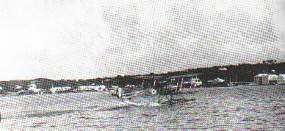
The achievement on June 15, 1919 of the first transatlantic flight in a Vickers Vimy bomber, by Captain John Alcock, Royal Air Force, and Lieutenant Arthur Whitten-Brown, Royal Flying Corps, who took off from St. John's, Newfoundland and landed at Clifton, Ireland in 16 hours and 12 minutes, gave fresh impetus to aviation in Bermuda. Major Henry "Hal" Kitchener of the Royal Flying Corps - a nephew of Field Marshal Earl Kitchener of Khartoum and son of a former Governor, returned to Bermuda as a war hero. He teamed up with Major Hemming of the AFC, also a Great War aviator. They brought to Bermuda several aircraft most islanders had never seen before. They were three Avro 504K sea planes, two 2-seat Standard planes, a three seat model and three four seat Supermarine Channel Mark 1 flying boats. The two men wanted to make Bermuda a base for aeronautic surveys of Newfoundland in Canada and in Central and South America. Among their exclusive rights was one to spot whales from the air, to create a revival of Bermuda's once-dominant whaling industry. They selected Hinson's Island, which Major Kitchener owned after 1920, as their base and built two wood framed hangers there. They also built a slipway to serve both hangers. The slipway had rails to move the aircraft to and from the water. But their plans were ahead of their time. Their aircraft (right) were distinctive sights above the skies of Bermuda. They were fuelled by the Esso Company's West India Oil Company's wagons that put their cargoes of fuel on boats to make the crossing across Hamilton Harbor to the aircraft's' terminal on Hinson's Island. The aviation company did not survive for long. However, in its heyday it was the way many Bermudians got their first flight in an airplane - and it provided the talk of the town for many weeks. Bermudians had to wait 17 more years before they could fly to another jurisdiction.
1919. Formation of The Bermuda War Veterans' Association, a year after the First World War or Great War ended, to support returning Bermuda servicemen, in much the same way as a returned servicemen association had been established in Australia and New Zealand. However, the BWVA was at that time intended only for returnees of the white Bermuda Volunteer Rifles Corps. A similar self-help group had not then been set up for the black returnees of the Bermuda Militia Artillery.
1919. American artist Clark Greenwood Voorhees (1871 to 1933) began to paint images of Bermuda. Voorhees and a small group of fellow Old Lyme artists began to spend their winters in Bermuda. Drawn by the mild climate and gorgeous colours, the artist eventually purchased a house on the island that he named ‘Tranquility.’ He was a first-rate American Impressionist, one who explored the many facets of a particular region, an artist who was keenly sensitive to the subtleties of climate and geography. This group of painters reflected the brilliant light and jewel-like colours peculiar to Bermuda.
1919. Frenchman Pierre Louis Dowle - known locally as Peter - arrived in Bermuda, later married a Bermudian, had twin daughters Josephine and Jeane. But his real claim to fame came when he set up a photographic studio in the 1920s and proceeded to take photographs from the air of both the US Navy submarines, submarine chasers and more, mentioned below.
1919. Autumn. First appearance in Bermuda of the US Navy's new type of naval vessels, submarine chasers. Long vessels, narrow in the beam, they were surface reactions to the new underwater threat of the submarine, the devastating effect of which the German Navy had demonstrated early in the First World War. A group of them passed through Bermuda on their way home to the United States.
1919. Bermudian Fred Dolan, who had earlier served Britain in the Boer War in South Africa as a driver in the Steam Road Transport and later joined the British Merchant Navy during the Great War as an Able Seaman and was then living at Dock Street E1, London, applied successfully for South Africa and War medals. He was awarded the Queen's South Africa Medal 1899-1902 and the1914-1918 War Medal accompanied by the Mercantile Marine Medal.
1919. December. Furness Withy took over the regular New York-Bermuda shipping service operated since January 1874 - 45 years - by the Quebec Steamship Co and before it by Samuel Cunard who had operated a service between Halifax and Bermuda from 1833 to 1886. The Quebec Steamship Co had provided the first regular connection with New York, and built the first new ships for the Bermuda trade in the 1880s. Quebec SS Co was acquired from Canada SS Lines by Furness, Withy & Co and operated as Furness-Bermuda Line. (The Trinidad Shipping & Trading Co was taken over in 1920, and in 1921 the two companies amalgamated to form the Bermuda & West Indies SS Co. In 1929 the Red Cross Line (C. T. Bowring & Co) was purchased. The Bermuda & West Indies SS Co ceased operation in 1959 but the passenger service to Bermuda continued under the management of Furness Withy until 1966).
1920. Founding of the St. George's Historical Society, at Mitchell House, Duke of Kent Street, St. George's. The rooms of this 18th century house hold a collection of artefacts of what daily life was like for a Bermudian family at that time. Exhibits are most interesting. There is a fee for visitors to the museum and an annual membership fee for members.
1920. Founding by Major Philip Lightbourne of the Royal Artillery Association, Bermuda Branch. The group began holding meetings at the St. David's Battery campsite because the Bermuda Militia Atillery, from which its members were drawn, were stationed there. It later moved to its present headquarters in St. George's adjacent to the northern end of Garrison Field.
1920. April. Three Supermarine Channel 3-passenger flying boats arrived in Bermuda
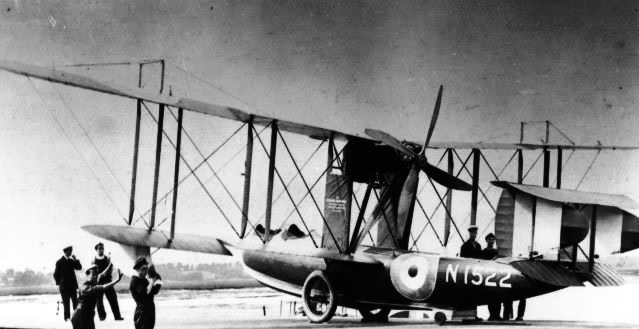
They were G-EAFF, G-EAEG and G-EAEJ, all still with their military colors. They arrived by ship and joined the Avro aircraft of Bermuda and West Atlantic Aviation for sightseeing tours of Bermuda. They were based at Hinson's Island. The "Short" flight was for 10 minutes to Gibb's Hill Lighthouse then back to Hinson's Island; the "Middle Tour" was for 20 minutes, over Spanish Point, North Shore. South Shore; the "Grand" Tour over most of Bermuda; and "Special Charter" included stops. One of the latter was for the actress Pearl White.
1920. May 28, an American “O” class submarine (O-2) arrived as the first of seven vessels of the Eighth Division, out of New London. This news was published the following day, the reporter noting that “a flock of R-boats will be here next week probably”. On Saturday, May 29, the O-7 and O-9 came in, the former “little war-boat” going aground on “Sugar-loaf Rock” in the harbour and interested groups gathered along Pitts Bay road and many watched the salving operations from Point Pleasant. The local newspaper noted that it had often been suggested that that reef should be removed: a few charges of TNT properly applied would shatter it. The following Thursday, June 3, four “R” class submarines of the Second Division steamed in, bound for Honolulu, and accompanied by the tenders, USS Beaver and “Eagle Boat” 14, bringing a total of 11 submarines at Bermuda. On Monday, June 7, all seven of the “O” class submarines left on the return run to New London, after a week of maneuvers in Bermuda waters.
1920. The Bermuda Electric Light Company built its pipeline from the oil docks at Ferry Reach. They were created in 1900 by the West India Oil Company, a subsidiary of the Standard Oil Company of New York owned by the Rockefeller family.
1920. July 24. An attempted mutiny in St. George's by members of the black Bermuda Militia Artillery (BMA) ended in a soldier’s death, after being shot. He was named as Hilton Simmons. The event also resulted in an unknown British soldier wounded, and at least one Bermudian soldier charged in court. An unnamed BMA man was arrested and confined for reasons unexplained which prompted a “spirit of unrest” among BMA soldiers. A number were arrested and taken to the guardroom, but one escaped and, according to the Royal Gazette newspaper, “got several of his comrades to join him in an attempt to release the prisoners: to effect which they attacked the guard with rifles and fixed bayonets. The guard resisted them, and they were repeatedly warned to go back or they would be fired upon.” After a British soldier was injured, the guard opened fire, killing Mr Simmons and wounding others. The guard was later cleared of charges.
1920. The first official Royal Visit to Bermuda was when in the 300th Anniversary of Bermuda's Parliament, His Royal Highness (HRH) Albert Edward, Prince of Wales (later, briefly, King Edward VIII) concluded his tour of the British Empire. HRH, the Governor, Legislative Council and members of the House of Assembly met in historic St. Peter's Church, St. George's, where the first parliament had been formed 300 years earlier. He was then a serving Royal Navy officer. It was the first of three visits to Bermuda by him, on the 1920 refitted Royal Navy battle cruiser Renown, on a tour of Bermuda, the Caribbean, the USA and Australia. HMS Renown, lead ship of a class of two 26,500-ton battle cruisers, was built at Glasgow, Scotland. Completed in September 1916, she served with the Grand Fleet in the North Sea during the remaining two years of World War I. On this first occasion, one of his official duties was the opening of the King Edward VII Memorial Hospital on its present Paget location, formerly the much smaller Cottage Hospital in Paget Parish. Another was to St. George's, where he was the principal guest at the 300th anniversary celebrations of the establishment at the State House of Bermuda's first form of self government and the completion of St. Peter's Church in 1620 and to formally open the Somers Gardens, the main feature of which is a monument - the Somers Memorial - to Admiral Sir George Somers whose body was shipped to England but whose heart was buried here. He also came to lay the foundation stone for a memorial to honor the scores of young Bermudians who fought and died in Europe during the Great War. The Government of the day had solicited designs for a small monument in the Cabinet grounds. It was never built.
1920. Manufacture and presentation of The Mace to the House of Assembly as the authority invested to the Speaker of the House by Her Majesty the Queen. The Mace was made in London by Garrand and Company of silver gilt to commemorate the tercentenary of the institution of Parliamentary Government in Bermuda. While the House is in Session the Mace always points to the Government of the Day.
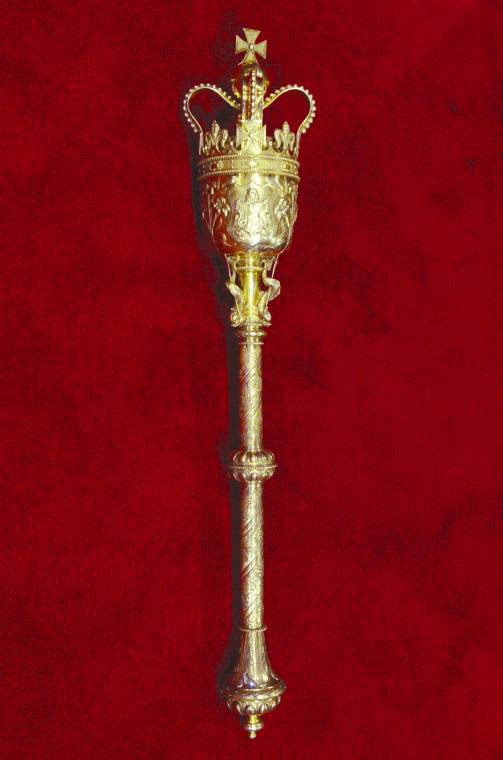
Bermuda Mace 1920
1920. At Elliott School in Devonshire, Mr. E. P. Skinner was imported from Barbados, with his Bermudian wife, to run the school. She taught music.
1920. The Bermuda Government issued a series of commemorative stamps to mark the tercentenary of Bermuda.

Tercentenary stamps
1920. The Furness Withy shipping group from the United Kingdom began to invest in Bermuda's tourism industry. It did so by taking over the old Quebec Steamship Company and calling its new service the Furness Bermuda Line.
1920. Legislation was enacted for creation of the Bermuda Development Company, thereby also making provision for the compulsory acquisition with compensation expropriation of certain then under-utilized but much-needed tourism development land at Tucker's Town to be used for the building by Furness Withy of the Mid-Ocean Golf Club and the development of Castle Harbour Hotel. Mostly black home and land owners were to be dispossessed by compulsory acquisition but legal provision was made for them to be fully compensated by standards prevailing at the time. Following expropriation of the land in Tucker's Town on which it sat, Marsden Church, built in 1861 for its mostly black community, announced its relocation to the South Road, Smith's Parish.
1920. At Admiralty House, Pembroke, Bermuda, residence and headquarters of the Royal Navy's Bermuda-based Admiral of the West Indies and North America Squadron, staff there included individuals in the following photograph:
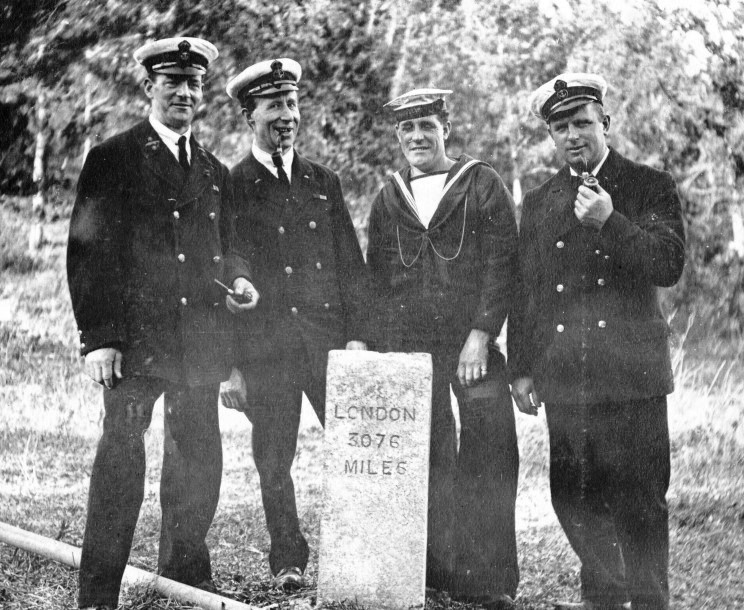
1920. The Governor instructed the Commissioner of Police to recruit white police officers from the United Kingdom, after a legislative consensus that the island's police should not be predominantly black.
1921. Newspaper the Colonist Daily amalgamated with The Royal Gazette. At the time, the Gazette was well-established, having first been published in 1828. However, it was still only published semi-weekly, becoming a daily paper in 1946.
1921. Acquisition of the 21-acre Montrose Estate doubled the size of the Public Gardens, later Bermuda Botanical Gardens.
1921. Members of the Colonial Parliament of Bermuda debated labor shortages and commented on what they perceived as the undesirability of West Indians.
1921. July. Bermuda legislators banned the export of liquor to the USA, after President Harding imposed prohibition nationwide and Bermudian ships carrying liquor to the USA were threatened with confiscation by the US Navy.
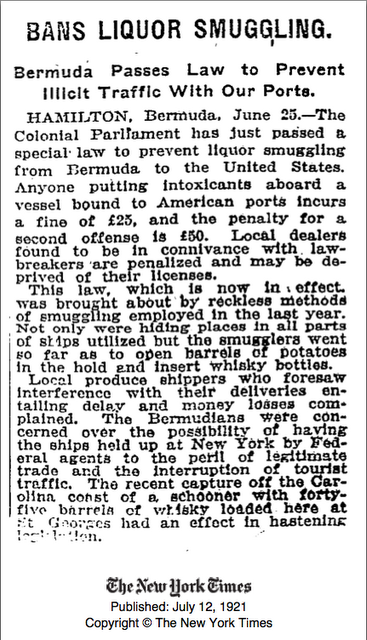
1921. December 15. The Mid Ocean Golf Club was completed, constructed mostly by Portuguese workers from the Azores. It was designed by Charles B. Macdonald of USA and opened as a Private Golf Club. Macdonald wrote this to Furness Withy: "To begin with, I doubt if there is an eighteen hole golf course which will equal, certainly not surpass from a golfer's standpoint, this links in any semi-tropical clime, not at any health resort in any zone, for the following reasons. The contours of the property are unsurpassed, delightful valleys winding through coral hills from twenty to seventy five feet in height, along the line of play; well wooded with cedars, oleanders, bougainvillea and hibiscus, lending the most fascinating color scheme to the whole. The contours are inviting to the golf architect to construct unique and scientific putting greens consistent with the length of hole demanded."
1922. Riddle's Bay golf course in Warwick Parish opened, claimed by that club to be Bermuda's oldest golf course. Winding along a peninsula which at its widest measures only some 600 yards, the 5800 yards of this par 70, 18-hole course offer scenic delights and plenty of challenges, including two ponds and three ocean holes. These scenic links provide the golfer with a magnificent challenge to both his or her game and camera. Originally designed by architect Devereux Emmet who shortly afterwards built the Congressional Golf Course near Washington, D.C. (site of the 1997 U.S Open).
1922. The St. George’s Historical Society purchased the property at the corner of Featherbed Alley and Duke of Kent Street. It became a museum.
1922. New Zealand-born British artist Owen Heathcote Grierson Merton, RBA (1897-1931) settled in Bermuda for several years, following the 1921 death of his wife and after a brief stay at Cape Cod, Massachusetts.
1922. Following the formal formation in England earlier this year of the Royal Marine Police (RMP) to help protect Admiralty Royal Naval Dockyards throughout the British Empire, a unit of the RMP was sent to and arrived at HM Dockyard, Bermuda.
1922. June. The Canadian Government Merchant Marine, a government financed operation, inaugurated a Montreal to Bermuda to West Indies service, with Halifax replacing Montreal in the winter months. The vessels Canadian Fisher and Canadian Forester were employed on the run.
1922. September - as told by the late Bermuda-based author and nun Sister Jean de Chantal Kennedy - the Royal Mail steam packet ship Chignecte sailed towards Hamilton with six Sisters and Mother Fidelis aboard, all of whom were intending to take up teaching duties at Bermuda's Roman Catholic school of Mount St. A. Agnes Academy in Hamilton. Two days into the trip two of the seamen came down with a rash and therefore could not proceed into the port of Hamilton but had had to run up the yellow flag and await the medical officer. He diagnosed the sailors’ ailment as small pox and although the ship’s doctor disagreed the passengers were ordered into quarantine. Parents and their children were brought to Coney Island for quarantine where the conveniences were far better, but twenty-one other passengers, including the Sisters, were required to endure hardships of many kinds at Nonsuch Island. Because Nonsuch Island had been abandoned seven years earlier the weary passengers arrived to see empty, deteriorating buildings, small and inadequate, the dreary graves of former victims of the disease and the keeper’s cottage on this desolate rock. There was not even a tree except by the morgue. Fortunately for them, Dorothy Tucker, a trained nurse, whose mother was on the ship, accompanied Doctor Percy Shelley to Nonsuch Island where she believed her mother to be. However, her mother actually was quarantined on Coney Island but Dorothy had to now stay at Nonsuch Island because of her exposure to the sick. Doctor Shelley visited the island daily and found no signs of smallpox among his patients but nevertheless, he assigned two of the Sisters to take the temperature of all the patients once a day. These infirmarians were Sister Lucia and Sister Theophane. Supplies came regularly from the mainland and Dorothy assisted by two of the Sisters prepared meals and washed the dishes. As if the crowded, cramped quarters, lack of sufficient fresh water and the monotonous daily existence were not enough, a hurricane struck but the shark oil’s turmoil caused preparations to be made and by the time the hurricane struck all had been secured. They sought what shelter they could get in the corners and closets and awaited the dawn.
With the lulling of the storm, a temporary canvas covering was put over the roof and held down by blocks of stone, and life resumed its even tenor – for a while. On the Sunday after the hurricane Mother Fidelis asked Sister Marie Louise and Sister Rita Vincent to play their mandolins for recreation. Before long the other passengers were making their way nearer to the sounds of music and Mother invited them to join the Sisters and soon all were together around the cottage balcony. Some asked for their favorite hymns and be- fore the recital was over most of the familiar hymns, both Catholic and Protestant, had been played. When the time of their exile was about to come to a close, a further three weeks were added to the quarantine because a young man coming to teach at a boys’ school was discovered with the rash. Mother Fidelis, an accomplished artist who had her water colors and art paper with her, decorated one of the plain paper napkins with which they were provided, painting wild roses around the border and printing in gold ink the names of the passengers to celebrate Dorothy Tucker’s birthday. Mother Fidelis also painted a greeting card with the following words: “A heartfelt wish for Dorothy, who, imitating her patron saint showered on the quarantine exiles the roses of kindness, thoughtfulness and self sacrifice. God bless you, Dorothy. God keep you. God love you and give you many happy returns of your birthday. The Nonsuch Exiles." Mother Fidelis evidently had her own ideas about the particular manner in which God was to bless Dorothy before the recurrence of her birthday. She thought she saw - and very much approved of-a budding romance between Dorothy and the Doctor. Dorothy had confided to Mother that she was engaged to marry a man in the army but Mother dismissed the military man without even a thought. She had picked Doctor Shelley and apparently Dorothy agreed for they were engaged by Christmas and married at Easter. Community annals tell us that Dorothy cherished the paper napkin and card given her on that memorable day. Finally the days of isolation drew to a close and the Quarantined sailed into Hamilton Harbor in early October 1922 and the Sisters prepared for the delayed opening of their school.
1922. September 21. A hurricane hit Bermuda.
1922. December 17. The New York Times ran this advertisement from the Bermuda Trade Development Board.

Note the hotels then in operation, many no longer extant.
1923. The Plant Protection Service was established in Bermuda.
1923. The New Testament Church of God (NTCOG) was introduced to the island by Ohio native J. H. Ingram.
1923. Furness Withy began the development of the Mid Ocean Club and Castle Harbour Hotel at Tucker's Town. It had earlier (1920) formed its subsidiary, the Bermuda Development Company, in response to growing American tourism expectations. This body aimed to create an exclusive and prestigious enclave in Bermuda for wealthy tourists. The plan was favored by many forward-looking Bermudians who were excited by the prospect of a post-war tourism revival of a pre-Great War (1914-1918) buoyant tourism industry. It had been impacted unfavorably following the end of the war and its economic aftermath and something drastic needed to be done. Furness Withy, a British shipping company, wanted Bermuda and Bermuda really needed Furness Withy. Mostly black home and land owners were dispossessed by compulsory acquisition but legal provision was made for them to be fully compensated by standards prevailing at the time. Cash, a semi-precious commodity for some at the time, was offered for their land. A number of those so dispossessed but compensated used their compensation to purchase homes elsewhere, such as at Devil's Hole, elsewhere in Smith's such as John Smith's Bay, as near the relocated Marsden Church and other parishes. Devil's Hole was deemed important to them, one reason being it was easiest to obtain kerosene fuel for their stoves from there. Another was that it was far less isolated. There were rumors of much more good news, after various meetings were held. The then-American owners promised employment to all able-bodied men on construction sites to help build the hotel and in subsequent hotel maintenance. Plus, all the females who could work were offered employment, not just part-time but regular work. The Tucker's Town development project was directly responsible for hundreds of Portuguese, mostly from the Azores, being brought to Bermuda. As many as 539 Azoreans worked under contract. Unlike the many hundreds who had come before them, when their contracts were completed they were not encouraged to remain on the island.
1923. Caraquet, an English vessel, was wrecked of Bermuda.
1923. March 1. The burial at Military Cemetery in St George’s, Bermuda, from pneumonia, of the Island’s only Victoria Cross recipient Petty Officer George Samson, who died on February 24. This Scottish military hero had, on April 25, 1915, earned his claim to fame in Gallipoli, Turkey, during the Gallipoli Campaign. It involved British, French and British Commonwealth, mostly Australian and New Zealand (ANZAC) troops on the one side and Turkish troops on the other, the latter fighting for the Germans. Britain, France, supported by their alley Russia, launched a naval attack, followed by an amphibious landing on the Turkish peninsula, with the aim of capturing the Ottoman capital of Constantinople (now Istanbul). But the naval attack was repelled, there were 140,000 British and Allied casualties, with more 160,000 Turkish and related casualties in the eight months campaign. On April 25, during the landing at V Beach, Gallipoli, Seaman George Samson RNR, usually in the Merchant Navy, born January 7, 1889, from Carnoustie, Scotland, UK, was later awarded the Victoria Cross for heroic actions. He had been badly wounded by Turkish Maxim gunfire but survived the war, later rejoining the Merchant Navy and reaching the rank of Petty Officer. But he caught double pneumonia and died on the high seas. His body was brought to Bermuda, the nearest British outpost at the time, where, with his Victoria Cross distinction, he was buried with full military honours.
1923. The Bermuda Woman’s Suffrage Society (BWSS), encouraged by the earlier successes of suffragette movements in Great Britain and the United States, where women gained voting rights in 1918 and 1920 respectively, was founded with about two hundred property-owning females in its ranks and touting as its key objective the extension of the property vote to women. Spearheaded by stalwarts like Gladys Morrell, Doris Butterfield, Edith Heyl, Kate Seon, Anna Maria Outerbridge and Rose Gosling, the Society also had a number of male supporters, including Stanley Spurling (later, Sir Stanley Spurling), Harry St. George Butterfield and Allan Frith Smith (later Sir Allan Frith Smith). Miss Rose Gosling, Headmistress of the Bermuda High School for Girls, was elected president. Mrs Allan Smith, Miss Misick and Mrs Doris Butterfield were elected as officers. The majority of BWSS members were ladies whose husbands were prominent in the affairs of Bermuda and as such had protection from harsh consequences. They also conducted a moderate campaign with a great deal of dignity and wit. Bermuda's suffragettes, which is what they were, were not beaten or imprisoned as were their more militant English counterparts.
1923. In Bermuda and elsewhere in the Caribbean and beyond, all telegraph traffic earlier sent by morse key was received on tape by means of syphon recorders changed to teleprinters at hugely increased speeds.
1923. Bermuda ceased being the operational headquarters for the Royal Navy's Fourth and Eighth Cruiser Squadrons. It had been so since 1909..
1924. Opening of the (first) Bermudiana Hotel, just outside the City of Hamilton on Bermudiana Road, Pembroke, within easy walking distance of the city. It was built by the Furness-Withy shipping line and was the first hotel built in Bermuda after the First World War. During the heyday of Bermuda tourism it was one of the most popular hotels. It was designed by the American firm Warren & Wetmore which also designed Grand Central Terminal and the Biltmore and Ritz-Carlton Hotels in New York City. The hotel was known for its lush 15 acres of grounds, swimming pool and grand ballroom, although the original hotel had quite a boxy modern design which shocked Bermuda at the time. An advertisement from the 1930s billed it as the “centre of social activity in Bermuda” and bragged about its “fireproof construction.”
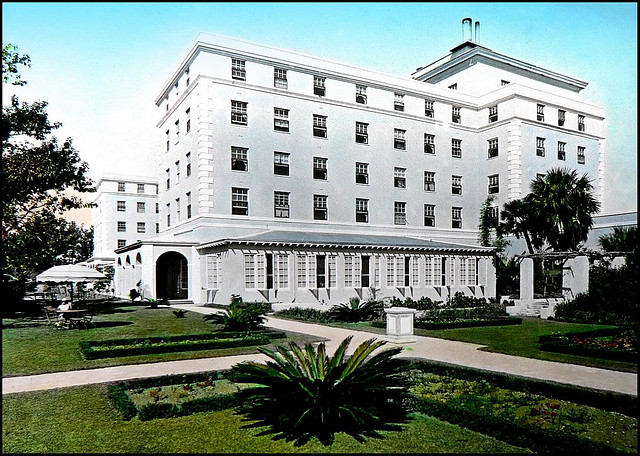
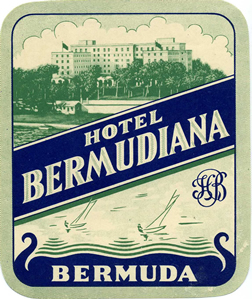
1924. (See aftermath of Bermuda Trolley Company Ltd of 1910). An entirely separate entity, the Bermuda Railway Company, was formed. Had the Canadian owned Bermuda Trolley Company not been interfered with, it would have brought public motorized transportation to Bermuda far earlier than when such train services finally began in Bermuda in the 1930s.
1924. The new British-backed Bermuda Railway Company was incorporated by Act of Parliament. Its intention was to survey for and construct a modern transportation system for what was then a no-automobile island.
1924. A Mr. Cummings arrived in Bermuda from the UK, surveyed the land, and announced that a railway from one end of the island to another, from west to east, was the perfect solution to the island’s transport problems. It was then deemed by many Bermudians and residents as the ideal way to claim to the rest of the world that Bermuda, unlike so many other places on the world's business and tourism map, did not need or want motorcars in the islands and could harness a far more practical alternative. As his reward, Mr. Cummings was granted a handsome retainer as chief engineer of the as-yet still un-built railway, to continue until the whole track was laid - an event with did not commence to be laid until seven years later. At his suggestion, the railway's route was deliberately planned as a mostly coastal route, even if it meant building costly trestle bridges over inlets and bays. There was a strategic underlying reason for this mostly coastal route, to help ensure that the costs of compulsory land acquisition of private property, a process which had begun in the UK far earlier, then in Bermuda in the acquisition of large tracts of land for British military defence purposes in Devonshire Parish in the mid 19th century, then from 1920 to 1923 in Tucker's Town, would be only for the land side of the route in the coastal areas. Nevertheless, this aspect of railway building alone was a massive public undertaking. Numerous real estate transactions were to ensue, in what became by far Bermuda's largest, most contentious and most expensive to the company land acquisition program in Bermuda's history, this time not in parcels of land in one Parish only but wholesale, in every Parish in Bermuda from one end to the other. By the standards prevailing at that time owners of expropriated land and dwellings, who had no choice in the matter, were compensated fairly. It became the single biggest-by-far expense for the company, the main reason why it cost ten times more to build the Bermuda Railway in its 23-mile journey than any other railway before or since.
1924. Dr. E. F. Gordon arrived in Bermuda. Despite his name he was no Scotsman. He was the offspring of an unfortunate African slave who was hunted down and driven into slavery. He had received degrees from Edinburgh University and after graduation had practiced as a medical General Practitioner in Scotland.
1924. The book "The Colonial Background of the American Revolution" by C. M. Andrews was published by Yale University Press, New Haven. It focused on Britain's early policies to all British colonies including Bermuda. Yale University Press, New Haven.
1924-1926. Lady Ramsay, the granddaughter of Queen Victoria, resided in Bermuda, at Soncy in Pembroke Parish. Her husband, Captain Alexander Ramsay, was stationed in Bermuda then.
1924. White & Sons began a supermarket business in Bermuda.
1924. French angelfish, black fish boasting vibrant yellow highlights, not native to Bermuda, were released in local waters by the then-Aquarium curator, Louis L. Mowbray..
1925. February 20. After a safe flight across the Bermuda Triangle from the USA, the famous United States Navy dirigible airship the ZR-3 Los Angeles (ex LZ126) which had earlier made a unique appearance over Washington, DC during the Presidential inauguration of President Herbert Hoover, made history in Bermuda. She carried airmail, specially franked. It was the very first delivery in Bermuda of official Airmail and amounted to 200 lbs or 90 kilos.
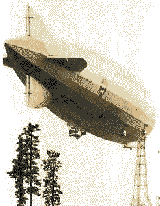
The Los Angeles was then only a year old. She was built in Germany in 1924 by the Zeppelin factory as part of that country's war reparations to the United States. Her two later sister-ships the "Graf Zeppelin" and "Hindenburg" were destined to make history of their own across the Atlantic and over Bermuda before the next decade finished. On board, guests included Rear Admiral William A. Moffat, USN and Secretary of the Navy , Theodore Robinson. As there was no suitable site for an airship docking facility in Bermuda, the airship tender USS Patoka, with a mooring tower on its stern, sailed to Bermuda. Storms prevented the docking of the airship. So it dropped her cargo from the sky, in three mailbags containing 2,341 items, close to the home of Bermuda's Colonial Postmaster.
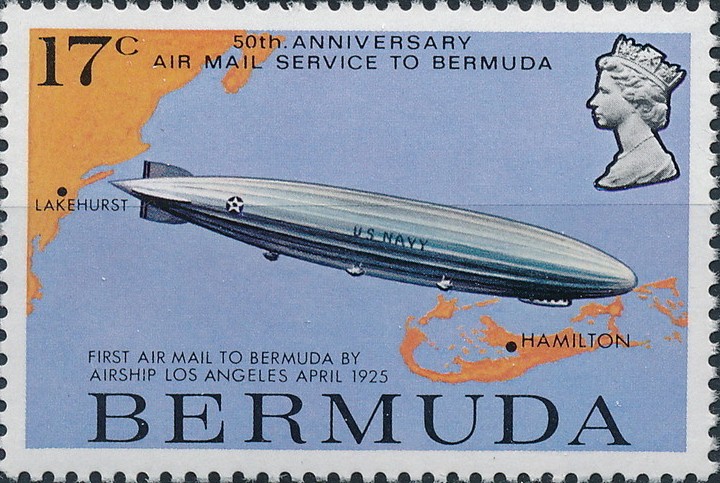
1925. The American movie "Eugene O’Neill and John Held in Bermuda" was filmed in Bermuda, as a black and while short film, a documentary. The cast were Eugene O’Neill [himself], John Held [himself]. A Print exists in the International Museum of Photography and Film at George Eastman House film archive.
1925. March. The Halifax & Bermudas Cable Company and its sister-company The Direct West India Cable Company introduced automatic telegraph reception at their Cable Office at 6 Front Street, but transit messages were still handled by operators.
1925. The Bermuda Woman’s Suffrage Society (BWSS), founded in 1923, lobbied for legislation proposed again by Mr Stanley Spurling, MCP, to give women the full parochial, municipal and parliamentary voting rights enjoyed by their husbands and other men-folk. It was easily defeated.
1925. The Bermuda Recorder began life, initially as a bi-weekly newspaper. A. B. Place was a printer. He and four others, Henry Hughes, David Augustus, Joaquin Martin and James Rubaine, were the founders. (Such was the contribution made by A. B. Place to the community that the Bermuda Government’s media room was later named after him). For the next 50 years it became the voice of the black community.
1925. At HM Dockyard, Somerset, Bermuda, Royal Navy officials welcomed the arrival of new fire engines from the UK and a specially made new prefabricated and similarly imported Dockyard fire station to accommodate them. This was done in accordance with new directives from the UK for all UK home-based and overseas official Admiralty Dockyards throughout the British Empire. The Bermuda Dockyard thus formally had its own fire station, fire engines and fire-fighting equipment.
1926. 21st April. Elizabeth Alexandra Mary - later, Queen Elizabeth II - was born in London.
1925. April 21-34. Second visit of airship "Los Angeles." On this occasion, the docking in Bermuda with the USS Patoka was successful and mail was delivered and collected for New York.
1925-1926. The Canadian Government participated actively in Bermuda's shipping services.
1926. The King Edward VII Gold Cup was donated to the Royal Bermuda Yacht Club by Sherman Hoyt who had arrived in Bermuda in 1924 for that year's Newport- Bermuda Race. The Cup had a unique sailing history. It was originally presented by His Majesty King Edward VII for the 1907 Jamestown Exposition Regatta, in commemoration of the first English settlement in America 1607.
1926. May 13. Oona O'Neill (later, Chaplin) was born in Bermuda at Spithead, Harbour Road, Paget Parish. Her parents, then living at Spithead, were Americans the playwright Eugene O'Neill (born in USA October 16, 1888, died November 27, 1953) and Agnes Boulton. Her only sibling was brother was her brother Shane (born 1919 in USA). They divorced about three years after Oona was born. She later became close to Peter Arno (cartoonist), Orson Welles (actor and film director) and J. D. Salinger (novelist). On June 16, 1943 she married British-born actor Charlie Chaplin, which caused her to be disowned by her father. With Chaplin she had a good marriage despite the age difference and had a number of children, five daughters (Geraldine Chaplin, born July 31, 1944; Josephine Ronet, born March 28, 1949; Victoria Thieree, born May 19, 1951; Jane, born May 23, 1957; Annette, born December 3, 1959) and three sons (Michael, born March 7, 1946; Eugene, born August 23, 1953; and Christopher, born July 6, 1962). She died in 1991.
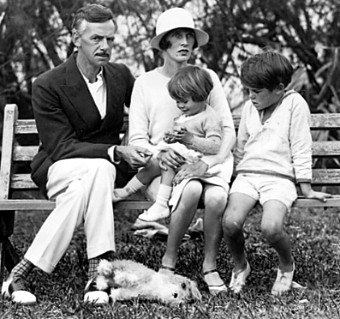
The O'Neill family at Spithead while Oona was still a small child, before the parents divorced
1926. Stanley Burgess, first won the Marathon Derby. accurately a half marathon of 13 miles. Dating back to January 1910. It began as a friendly cross-country race in June 1909 between Bermudian soldiers and those in the British Army then based in Bermuda, by then renamed the Marathon Derby. In January 1910 it became an official annual event. It was then hosted by the Somerset Athletic Club, a newly formed black community organization. Stanley Burgess first took part in 1921, when he was 20, After winning it in 1926, then 1927 and 1928 and eventually 10 times, it became famous locally.
1926. Veendam II, with a guest capacity of approximately 500, left New York on Holland-America's first Caribbean cruise, for calls that specifically included Bermuda.
1926. The Perfume Factory was the creation of "aromatic chemist", Herbert Scott, who first visited the island that year, and apparently noted two things, the attractiveness of Miss Madeline Smith, later Mrs. Scott, and that the flowers blowing so luxuriantly on every side were being wasted." Perhaps due to his interest in both, a leading product of the Perfume Factory became "Passion Flower", "just about the most expensive fragrance a lady can have, and one of the rarest."
1926. A grand scheme was devised to improve the Pembroke Marsh by turning most of it into solid ground, creating the foundations for a racetrack for horses and other sporting facilities. But nine tenths of it never happened. Only the Tennis Stadium was built as a result of the plan, later purposefully near the tracks of the Bermuda Railway Company.
1926. October 21. HMS Calcutta, commissioned in 1919 for service as Flagship of 8th Light Cruiser Squadron on the North America and West Indies Station and based in Bermuda since then, which had already once sustained damage whilst alongside a jetty at HM Dockyard Bermuda in hurricane conditions, then was deployed as Flagship 18th Light Cruiser Squadron, sustained serious structural damage at Bermuda caused by ship rolling against masonry whilst alongside jetty during yet another hurricane weather conditions.
1926. October 22. Havana-Bermuda Hurricane direct-hit, Category 4, winds of 114 mph (190 kph). It killed 88 in Bermuda, damaged or destroyed 40% of all buildings and caused $100 million in damages. It was one of the most powerful hurricanes in Bermuda's history. Among the buildings severely damaged was Elliot School, opened in 1848 and the Opera House in Hamilton. When it passed directly over the Island, there were wind gusts of up to 143 knots. The centre passed over Bermuda just after noon. It was most eerie and the water in the Camber was flat calm. Then the winds came in from the opposite direction and the anemometer registered 138 mph before it broke. The hurricane had an onset of torrential rain and winds from the southeast, but most of the damage occurred after the eye had passed over Bermuda and the winds came from the northwest. Elsewhere, banana trees by the thousands were destroyed, fields of lily bulbs submerged beneath the tremendous downpour, and the famous, ancient cedar at Old Devonshire Church used as a belfry fell down. The hurricane was ultimately responsible for a total of 738 deaths, including 650 people in Cuba. Two Bermuda-based British Royal Navy warships, the Calcutta and the Valerian sank and the 88 who died during this storm were all sailors and officers onboard the Valerian.
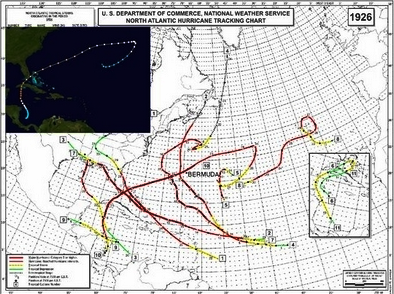
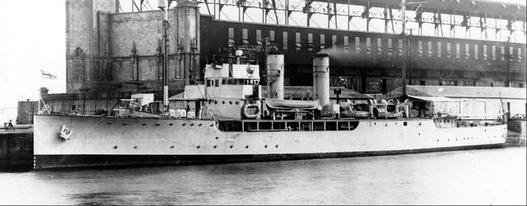
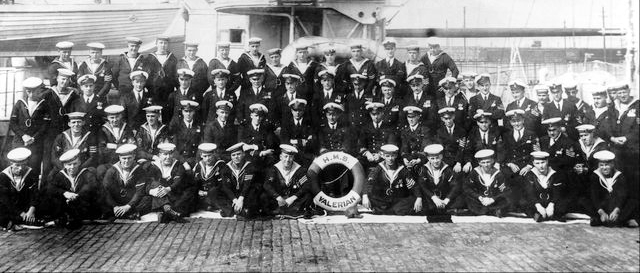
A commemorative plaque for those who lost their lives, first hung in the Dockyard RN chapel, then, with the destruction of that edifice later, was re-housed at Commissioner's House at the Bermuda Maritime Museum. The quotation from The Muse in Arms by E.B Osborne, commemorates them. The Valerian went down less than five miles from the safety of the Royal Naval Base at Dockyard, about 70 miles to the South. The steamer, Eastway foundered in the same storm, taking 22 crew members with her.. A survivor of the Valerian, one of only 19 out of 104, mostly from Portsmouth, England,, would recall the events of that day on the front page of The Royal Gazette and Colonist Daily. But the events surrounding the loss of the Eastway, and the rescue were never published - until much later. The 1926 hurricane season was a devastating one that ultimately claimed over 1,400 lives and cause billions of dollars in damage to the Bahamas and Florida. As the naval headquarters for the Americas,
HM Dockyard at Ireland Island dispatched the HMS Valerian, a minor vessel from its fleet, to render what aid it could to the Bahamas. Having fulfilled her obligation, the Valerian, under the command of William Arthur Usher, left Nassau on October 18, 1926 to return to her base in Bermuda. A day into their voyage, Captain Usher received reports from the US weather service that a tropical storm was forming to the South of Puerto Rico. Since the weather reports intimated the "eye" would pass some 300 miles north of the island, Captain Usher never gave it much thought. Besides, no hurricane had hit Bermuda in October for over 100 years - a dangerous precedent on which to rely. However, the storm grew far more powerful than the weather forecasters had predicted and unaware that the storm was heading straight for them, Captain Usher continued his voyage home. He nearly made it. At about 8 a.m. on October 22, 1926, and about five miles from Bermuda, the crew spotted Gibbs Hill Lighthouse. Even though the wind howled about them and waves broke on her deck, Captain Usher anticipated no difficulty in entering the Narrows, having done so before under similar conditions. As he later testified before a court martial: "Indeed, at that time, I felt assured of reaching harbour in safety as there was no immediate indication of a violent storm, also there was a complete absence of swell that sometimes denotes the approach of a storm." However, this was no ordinary storm and a half-hour later the weather changed so severely that Captain Usher realized he could no longer proceed through the Narrows. He turned the ship around and headed straight into the storm. Gale force winds were lashing the ship at 100 mph with a driving rain and flying spray obliterating everything from view. By noon the centre of the storm was reached and the clearing came, but with it mountainous seas that seemed to approach the ship from all sides, shooting the vessel onto a crest and dragging it down into the trough until it seemed she would snap in two.
Once the centre of the storm had passed over, the wind picked up from the north west and again flung the ship from crest to trough as if it were no more than a bath toy. At 1 p.m. a series of squalls struck the ship on the port side with such force that she was thrown on her beam ends and heeled 70 degrees over to starboard in a stomach-churning movement. It was at this moment that the mainmast and wireless were carried away and with it any chance of an SOS. Above the howling wind, Captain Usher heard the engines stop and word reached him that the Valerian had run aground. Before he could catch his breath, the enormous vessel keeled over about 60 degrees and started going down. Word spread "all hands on deck" and with only enough time to cut away one raft, the crew had less than one minute to abandon ship before the ocean claimed her. Hanging onto the bridge, Captain Usher was swept away by waves, bumped his head and finally came up alongside a raft to which he and 28 of his men clung. In his account before the court later, Captain Usher recalled the events that followed: "Unfortunately the bottom of the raft got kicked out and this entailed much greater effort in holding on. The experience of clinging to this raft for 21 hours, with only a problematical chance of being picked up was indeed trying enough for the hardest. Luckily the water was warm, but the north west wind felt bitterly cold to those parts which were exposed. Sunset came and as it grew dark we looked for Gibbs Hill Light, or some other light, as we had no idea of our position, but nothing was seen, not even the glare. The 12 hours of night, with waves breaking over us, were an experience never to be forgotten and many gave up during that time. They got slowly, exhausted and filled up with water and then slipped away.
The raft was slowly losing its buoyancy and as everyone wanted, as far as possible, to sit on the edge, it capsized about every 20 minutes, which was exhausting; we all swallowed water in the process and the effort of climbing back again. Twelve held out until the end, when HMS Capetown was sighted at about 10 the following day, to the relief of all." By the time the Capetown picked up the survivors, the buoyancy of the raft was such that it would not have supported anyone for another hour. The Capetown, which had ridden the storm out safely at sea, had actually begun a search for the Valerian the previous day, but had been called way by the SOS of the steamer, the SS Eastway, of the St. Mary Steamship Company, which was about 70 miles south of Bermuda and in serious trouble. The Eastway had left Norfolk, Virginia for Brazil on October 18, 1926 with 7,500 tons of cargo and 1,760 tons of bunker coal. She was commanded by Captain J. H Vanstone and carried a crew of 35. On October 21, the ship received a wireless warning that a hurricane was approaching, but on the course she was steaming, it was assumed that she would encounter only its outer fringes. This assumption proved a fatal miscalculation as by the 22nd, she was being swept by tremendous seas which smashed one of her port lifeboats, washed away much of deck gear and ripped off her hatch covers. She also developed a slight list which increased as the day wore on. Captain Vanstone personally supervised the efforts of his crew to place fresh covers over the hatches, and it was while engaged in this work without a lifeline that he was washed overboard and drowned. At 5.38 p.m. the Eastway sent an SOS: "Urgent bunkers awash and hatches broken urgent no life belts." This message was picked up by the steamship Luciline which returned the following message: "According to your position I am only 30 miles away am standing toward you at full speed suggest you send up rockets on chance I may see them."
An hour and a half later, the Eastway turned on her beam ends and sank with 22 crew members, including all the officers, except the third officer, referred to in various documents only as "Mr. Davey." Crew had earlier unhooked the falls of the starboard lifeboat and cut the lashings so the boat floated clear when the vessel sank. Twelve men who were swimming in the vicinity, managed to scramble into her and could only watch in horror and shock as the steamer sank with 22 of their friends and fellow crew still on board. Four officers and 84 men of the Valerian were lost. The survivors, two officers and 19 men, clung to a single life raft overnight and were rescued by HMS Capetown on the morning of October 23. It was thought that those below were unable to come up when the vessel turned onto her beam ends, while those on the bridge were unable to get off because of the heavy seas and the ships' 15 degree list. The Luciline arrived on the spot at about 10 p.m. and searched the area until noon the following day when she came upon the survivors who had drifted all night. They were brought to Bermuda and transferred to the Bermuda-based tug Powerful at daybreak on October 24, 1926. During a formal investigation in the United Kingdom in April the following year, it was revealed that the Eastway was overloaded by 141-tons when she left Virginia. This decision cost the crew their lives, and the registered manager, Watkin James Williams, was found "blame-worthy" and culpable, and ordered to pay 1,000 Pounds towards the costs of the inquiry.
1926. October 29. Death in Chicago, Illinois of Major General George Bell Jr. He was buried in Chicago's Rosehill Cemetery and Mausoleum. It was this distinguished American general, who fought in the Spanish-American War and later World War 1, who gave his name 15 years later to the initial US Army airfield Fort Bell, later the USAAF, then USAF then USNAS station in Bermuda.
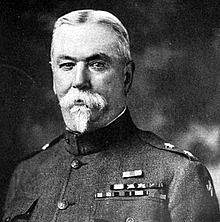
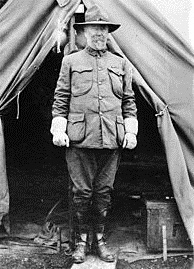
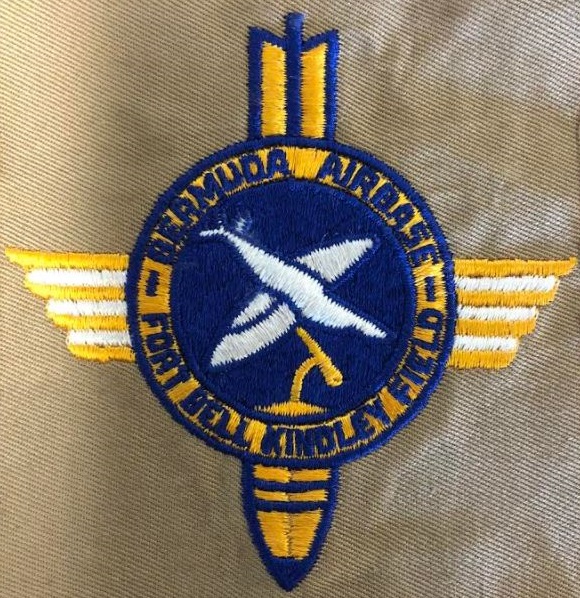
1927. January. The new pilot gig Ocean Queen II, of Bermuda, sank. It had rowed out from St. Catherine's Beach in St. George's to rendezvous with the Royal Mail steam packet ship Avon off Kitchen Shoals but was lost in mountainous seas and stormy, foggy weather off the coast of St. David's. The men who died from drowning were Goulrich Richardson, Irving Pascoe, Ernest Tucker, George Brangman, Edgar Smith and Robert Gibbons. Their bodies were never found. The pilot gig itself, with her sails still up, was found floating upside down off Elbow Beach by the Dockyard tug St. Abbs (named for a place near east Scotland).
1927. April 28. Birth in Bermuda of businessman and legislator John Irving Pearman.
1927. Following the Canadian Government's participation in Bermuda's shipping services from 1925-1926, the Canadian National Steamships Company was established by Act of Parliament in Ottawa, to consolidate shipping services from Halifax and Montreal to Bermuda, the West Indies and elsewhere. The Canadian National Steamship Company was owned by Canadian National Railway Co. and operated services between Montreal / Halifax and the West Indies and to Australia (until 1936). They also ran Vancouver to Alaska routes.
1927. August 4. Under its full title of the Pembroke Marsh Recreation Area Scheme, recently adopted by the House of Assembly, with a preliminary survey having been made in 1926, a British purpose-built Cutter Suction Dredger, General Asser, arrived in Bermuda from Glasgow, Scotland, specifically chew into the prehistoric wetlands of the Pembroke Marsh. Massive infilling began.
1927. June 1. Birth in Bermuda of Dame Lois Browne-Evans, DP, JP, a major player in Bermuda's Progressive Labour Party (PLP). She attended Central School and the Berkeley Institute. She became Bermuda's first female lawyer, first female leader of a political party, first female Attorney General. She was made a Dame (female equivalent of a knighthood in 1999) or services to Bermuda.
1927. August. Incorporation by Act of Parliament of the Bermuda Historical Society, upon a petition of Members William Sears Zuill, Catherine Fitch Tucker, Hereward Trott Watlington and Harry St. George Butterfield, who stated as the Society's objectives "the encouragement of the study of the history of the colony and the collection of books, pictures, furniture, weapons, dresses and other objects relating to such history." It was from its East Broadway site at the time that the Society began doing valuable work, influencing many of its members into undertaking research and writing papers on historical subjects and acquiring and preserving colonial records (including the purchase in 1932 of the famous portraits of Sir George and Lady Somers and related period memorabilia).
1927. While the USA and UK were remiss in this area, the one maritime power that moved forward with development of a powerful submarine cruiser was France. After refusing to execute that part of the Washington Naval Treaty of 1922 that proposed the eventual abolition of submarine raiders, France began an aggressive construction program divided between oceangoing and coastal-type boats. Among the oceangoing submarines was Surcouf, the French Navy’s first and only cruiser submarine designed specifically for open-ocean surface raiding. Surcouf was begun this year and eventually commissioned in May 1935, a lengthy period that was extended by continued revisions and additions to the sub’s design and armament. She was to have a great deal to do with Bermuda.
1927. George Walker, Royal Navy, drowned whilst serving on the rescue tug HMS St Blazey in the harbour of Hamilton, Bermuda. She was in the Royal Navy's "Saint" class, showing pennant W 46. She was built by J. Cran and Somerville Ltd, Leith, Scotland, launched on 16 January 1919 and commissioned in August 1919.
1928. January 1. Bermuda joined the Commonwealth Parliamentary Association (CPA).
1928. In Hamilton, Bermuda, the law firm of Conyers Dill and Pearman, one of the island's oldest, was established. Later, it employed more than 150 lawyers advising on complex multi-jurisdictional legal issues, with offices across 11 countries in multiple time zones and jurisdictions.
1928. Bermudian suffragette Gladys Misick Morrell (by then married) brought a test lawsuit against the chairman of the Sandys Parish Vestry. She argued that the word "person" in the relevant voting act then in force meant both men and women and thus they were both entitled to vote, not just men. But Bermuda's Supreme Court ruled against her. She was advised not to appeal to the UK's Privy Council which, ironically, had ruled that women in the UK could vote.
1928. April. The Royal Navy in Bermuda expanded its wireless telegraphy facilities Bermuda's Royal Naval Dockyard was sent a S/W (Short Wave) - or HF - transmitter, from HM Signal School, RN Barracks, Portsmouth. A 17-page explanatory note dated 29th April 1929 came with it. It was an ICW transmitter for radio frequencies between 21,428 and 6,000 kc/s (14 and 50 metres, also between 1,364 and 272.7 kc/s. A power amplifier was fed by one of two sources - S/W or L/W (Long Wave = MF) frequency determination units, and a choice of one of two aerials which would be selected manually by the site operator. The transmitter was of medium power, possibly in the region of 2kW. The transmitter and its related equipment were positioned inside a wooden frame. (Not until the mid 1930s did metal casings become the norm). From then on the Dockyard became a strategic overseas naval coaling and classified wireless telegraphy transmission station for the Royal Navy. Whole areas of land had tall wireless masts and special fittings. During this period, hundreds of local boys and some lads from the Caribbean became apprentices at the Dockyard when they turned 13 or 14 years old. Ships steamed in and out almost on a daily basis. Apprentices helped to service them. Aptitude papers were kept by the Royal Navy. Young electricians were the most called for. Then there were pattern making, engineering, machine shop or woodworking areas for trainee shipwrights, joiners or carpenters. In those days, there were many specialist buildings at the Dockyard, including a Spar theater, hospital, cinema, cooperative stores for clothing, pharmaceuticals, canteen, officers' club and quarters, books, cafeterias. There was also a ginger beer plant and place where rum was imported in 55 gallon casks and dispensed in a British style public house. There were separate schools for boys and girls of locally based servicemen - and where the latter could go for special adult training. In the social scene, there were pantomimes, an amateur naval orchestra and sports events.
1928. From then on the Dockyard became a strategic overseas naval coaling and classified wireless telegraphy transmission station for the Royal Navy. Whole areas of land had tall wireless masts and special fittings. During this period, hundreds of local boys and some lads from the Caribbean became apprentices at the Dockyard when they turned 13 or 14 years old. Ships steamed in and out almost on a daily basis. Apprentices helped to service them. Aptitude papers were kept by the Royal Navy. Young electricians were the most called for. Then there were pattern making, engineering, machine shop or woodworking areas for trainee shipwrights, joiners or carpenters. In those days, there were many specialist buildings at the Dockyard, including a Spar theater, hospital, cinema, cooperative stores for clothing, pharmaceuticals, canteen, officers' club and quarters, books, cafeterias. There was also a ginger beer plant and place where rum was imported in 55 gallon casks and dispensed in a British style public house. There were separate schools for boys and girls of locally based servicemen - and where the latter could go for special adult training. In the social scene, there were pantomimes, an amateur naval orchestra and sports events.
1928. May. The Halifax and Bermuda Cable Company (later, Cable & Wireless) established Bermuda's first wireless transmitting station at Lily Park, St. George's. Also built at the same time were homes for resident imported staff members. The twin 300-foot radio towers of this early station were familiar landmarks of the East End (and were not dismantled until 1963).. With the advent of radio communications, the Company was able to open a Coast-Station to keep in touch with shipping and to provide direction finding bearings for vessels on their way to Bermuda. The new features were the results in Bermuda of rapid development in the 1920s of radio throughout the world and experiments to establish long distance commercial beams channels.
1928. May. With the opening of the wireless transmitting station at Lily Park, St. George's, the Halifax and Bermudas Cable Company (later, Cable & Wireless) closed the branch office at the Town Hall, St. George's. that had been opened since January 21, 1891.
1928. May. The Halifax and Bermudas Cable Company (later, Cable & Wireless) opened Coast Station VRT to service traffic from ships. It provided direction finding services for ships approaching Bermuda. On one occasion it was called on to help the Graf Zeppelin back on course on a flight from Germany to New York after over-flying Bermuda.
1928. October 15. "Graff Zeppelin" LZ-127 flew over Bermuda. She was flying from Friedrichshafen in Germany to Lakehurst, New Jersey, on her first transatlantic flight, having made her maiden flight less than a month earlier. Her visit was unexpected, due solely to a potentially hazardous squall to the west of Bermuda. She did not stop, but she dropped some mail after a tear in the fabric of her top fin was repaired.
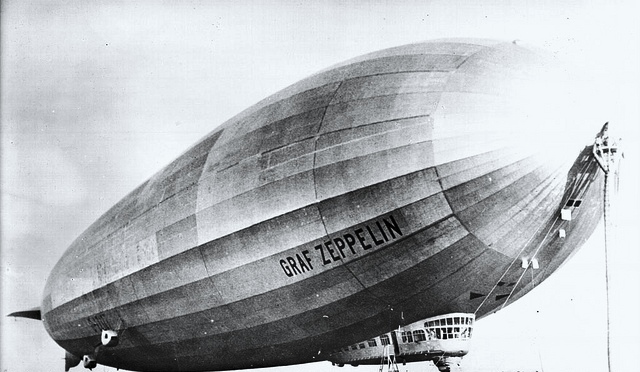
1928. A new era began with the commencement of service from New York to Bermuda and back of the steamship Bermuda, which included for the wealthy passengers a "swimming pool, reminiscent of the baths of the Roman emperors." (She was on the route until unfortunately burned in 1931 at No. 1 Dock in Hamilton, in full sight of the offices of Watlington & Conyers, local agents for Furness).
1928. October-mid December. Prince George, (Duke of Kent in 1934) visited Bermuda as a Royal Navy officer on board HMS Durban. He had not previously visited Bermuda. (His elder brother Albert ('Bertie') was Duke of York and became George VI on the abdication of Edward VIII in December 1936. Prince George was stationed at HM Dockyard Bermuda while serving on her. He had never previously visited Bermuda. He also visited Bermuda early in 1931 with his eldest brother, the then Prince of Wales, en route to South America.
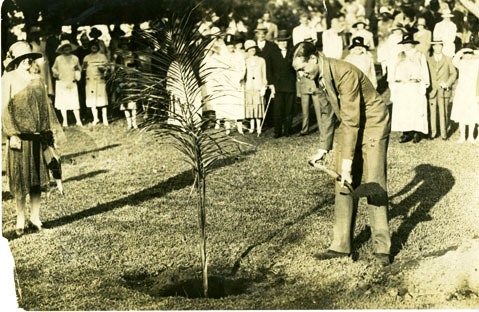
Prince George, Duke of Kent, in Bermuda 1928, planting a tree at Government House.
1928 –1934. Nonsuch Island was leased to the New York Zoological Society for use by Dr. William Beebe (1887-1962) and Dr. John Tee Van as a marine research station, and as a base for a series of dives to observe deep sea animals in their native environment using the Bathysphere Diving Bell. The American Natural History Museum was another interested party as Beebe was also an avid collector of birds. The latter museum still houses the collection of Bermuda birds from Nonsuch collected by Beebe. Before he arrived in Bermuda, Beebe had been hired as the Bronx Zoo’s first curator of birds, and his fieldwork resulted in the creation of the Wildlife Conservation Society’s Department of Tropical Research, which he began directing in 1922. Beebe, in addition to his research station on Nonsuch, then also collected specimens, took ocean depth measurements, and wrote his book, Nonsuch: Land of Water (1933).A total of 35 dives were made setting the world record for the deepest dive for that time to 3,028 feet (923m) on 15 August 1934. During this period of time the “Sea Fern” a former Royal Navy water barge, was raised from St. George’s Harbour and re-sunk at Nonsuch to form a breakwater and holding tank for fish. Its remains can still be seen at the main landing dock. For many more details of this unique occasion see https://en.wikipedia.org/wiki/Bathysphere.
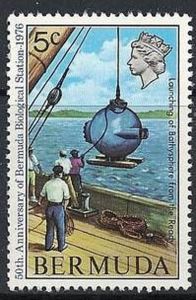
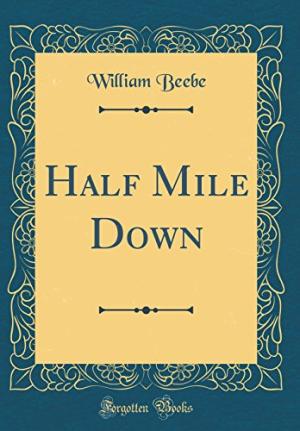
1928. Under the Furness Bermuda flag, a major sea change for Bermuda occurred with the arrival of the second liner specially built for the Bermuda trade, the appropriately named MS Bermuda. The design of the vessel was striking, not just from the outside but the inside too, with its lavish interior swimming pool, the look of which was based up a Roman bath. The comfort of furnishings, magnificence of decoration and perfection of construction made this the flagship of the Furness Bermuda Line supreme, new Queen of the Seven Seas, swift and silent, safe and spacious, staunch and steady-the motor ship Bermuda". The ship gave three years (see 1931) of sterling silver service to Bermuda, and was the precursor of "The Millionaires' Ships" exemplified by the superlative Queen of Bermuda.

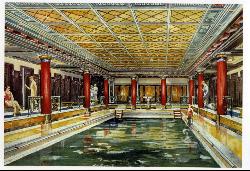
MS Bermuda, 1928
1928. Furness Bermuda Line issued this poster of the Bermuda ships on its service. It showed the MS Bermuda, SS Fort Victoria and SS Fort St. George below a typical Bermuda cottage.
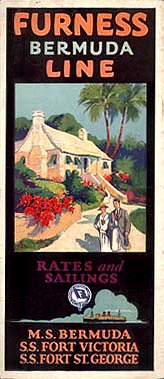
1928. German watch and clock seller Otto Wurz began his store by that name on Bermudiana Road and Front Street, Hamilton..
1928. October. Curtiss "Flying-Fish" aircraft failed attempt. Lost. Captain W. N. Lancaster attempted to fly from Long Island, USA, to Bermuda in the Curtiss Flying Fish Ireland class seaplane, as part of an attempt on the London to Cape Town speed record for the Putnam Expedition. He was accompanied by Lieutenant H. W. Lyon and sponsor G. P. Putnam. He was not successful. The team tried again, this time from Hampton Roads, Virginia, again with no luck. Unconfirmed reports said the plane sank 185 miles from Bermuda.
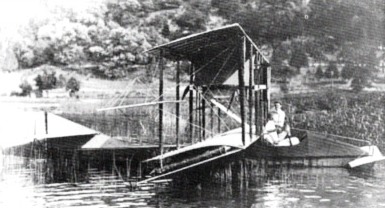
Curtiss Flying Fish aircraft
1928. December. From this month in very late 1928 to 1952, interrupted only by World War II, Canadian National Steamships operated a fleet of five luxury liners, sailing from eastern Canadian ports to Bermuda, the West Indies, British Honduras and British Guyana, carrying thousands of passengers and millions of tons of freight. These immaculate white steamships offered a standard of service rarely experienced today. Named after the wives of British admirals with a connection to the West Indies, the vessels were affectionately known as the Lady Boats and provided an efficient cargo service and romantic cruises for many years. They plied the old Canada-West Indies trade routes from the days of sail, and in addition to carrying passengers, the Lady Boats delivered Canadian goods to the West Indies, returning with bananas and other fresh tropical fruit in their large, refrigerated holds.
1928. December 15. Arrival
of first of the Canadian National Steamships Company "Ladyboats" - the Lady Nelson. In the days before
established air services in the Caribbean, the five White Lady boats
sailed from Halifax and Montreal, down the islands, and up the Demerara
River to Georgetown in Guyana. These ships, oversized steamers, were named
after wives of British Admirals. The Lady Nelson, Lady Drake, and Lady
Hawkins sailed from Halifax year round to Bermuda, the Windward and
Leeward Islands, Trinidad and Guyana, every two weeks. The Lady Rodney and
Lady Somers (named after the wife of Admiral Sir George Somers who
colonized and became the Father of Bermuda) which were much bigger than
the other three, serviced Bermuda, Nassau and Jamaica, from Montreal in
the summer, and Halifax in the winter. Later, Boston was added to the
routes. They
were not big ships as far as tonnage went. Built by the Cammell Laird
& Co., at Birkenhead, England, the Lady Nelson had a gross tonnage of
7970 tons, the same as the Lady Hawkins and the Lady Drake built shortly
afterwards. The Lady Rodney and Lady Somers were slightly larger, being
8194 gross tons but the passenger accommodation was different. In the
first three, it numbered 132 first class, 32 second and 53 third plus 48
deck-only passengers, while the Lady Rodney and Lady Somers carried a
total of 125 first class passengers only. But they earned the title of
sisters for all were outwardly of the same design made by A. T. Wall &
Co., of
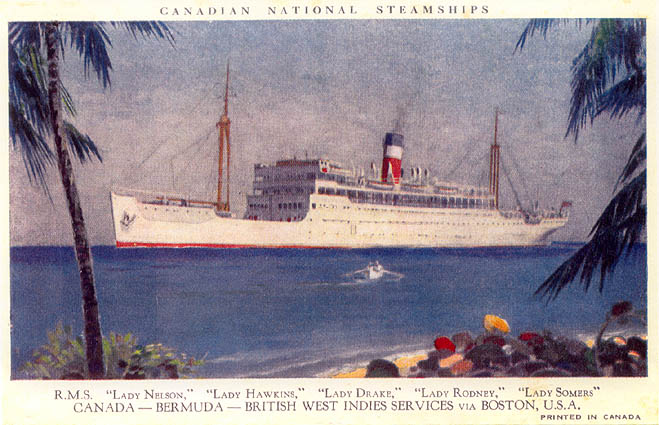
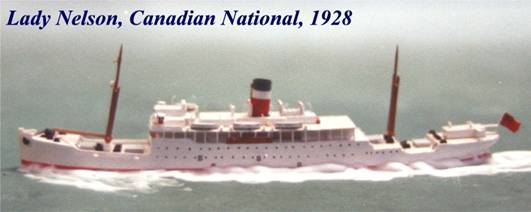
1929. April. The fourth and fifth of the Canadian Ladyboats - the "Lady Somers" and "Lady Rodney" - arrived, serving ports between Canada and the West Indies.
1929. April. In London, about 30 British telecommunications companies throughout the world except Bermuda merged into one company registered in London and named Imperial and International Communications Ltd. However, in Bermuda, operations continued under the name of the Halifax and Bermudas Cable Company Ltd and The Direct West India Cable Company Ltd.
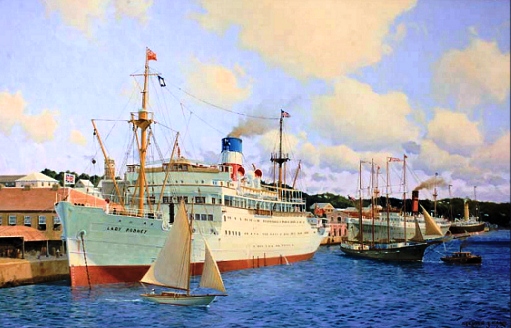
Lady Rodney first arrived in Bermuda
1929. January. MV Bermuda made her maiden trip to Bermuda (but was ravaged by fire two years later in Hamilton. Despite efforts to repair her, the vessel was lost at sea while being towed to Scotland to be scrapped).
1929. July. Parliament enacted the Parish Vestries Act that specifically restricted the parochial vote to men only, not women. Bermuda's Attorney General stated: "No person not a male shall be registered to vote."
1929. October. In Canada, after an appeal by Canadian suffragettes, the Privy Council in the UK declared Canadian women to be "persons" and reversed the decision of Canada's Attorney General not to allow women the vote. But Bermuda women, led by the Bermuda Women's Suffrage Society (BWSS) activist movement, still did not have that right.
1929. November. The Women's Franchise Bill, brought by the Bermuda Women's Suffrage Society (BWSS) was again defeated by Bermuda's Parliament. Bermuda's suffragettes illegally lowered the flag outside Parliament in protest and stood with their heads bowed.
1929. October 28. The US Stock Market crashed. The resulting Great Depression and its repercussions impacted hugely on Bermuda.
 1929. December 18. 269
passengers plus a crew of 165 left New York and were aboard the Furness Withy
vessel Fort Victoria en route to Bermuda. It was sunk. In dense fog, the vessel,
after stopping to await an improvement in conditions and while anchored, collided
with the Clyde-Mallory liner Algonquin, en route from Galveston, Texas, to
New York, with 189 passengers. The Algonquin cut into the port side of Fort
Victoria. Distress calls were made by both ships, which were answered by the
United States Coast Guard and other ships in the area. All on board Fort
Victoria were rescued before the ship sank later that day in the Ambrose Channel
at the New York port. The two Bermudian survivors were
Mrs. Writa Johnson and Warren Brown, then a 3-month-old baby. All on the
Fort Victoria were ordered to abandon their sinking ship. Originally named
Willochra, Fort Victoria was
built by William Beardmore & Co Ltd, Dalmuir, West Dunbartonshire,
Scotland, UK. She was yard number 507 and was launched on 14 August 1912 in
the Clyde, Glasgow. Completion was on 7 February 1913.[2]
Willochra was built for the Adelaide Steamship Company. In 1913, Willochra
was chartered by the Union Steamship Company of New Zealand. In November
1914, Willochra was requisitioned as a troopship. In 1919, Willochra was
sold to Furness Withy. She was refitted in 1920 and renamed Fort Victoria.
Initially, she was operated by the Quebec Steamship Co of Montreal but in
1921 she was transferred to the Bermuda & West Indies Steamship Co,
based in Hamilton, Bermuda. Both companies were owned by Furness Withy. Algonquin
cut into the port side of Fort Victoria. Distress calls were made by both
ships, which were answered by the United States Coast Guard and other ships
in the area. All on board Fort Victoria were rescued before the ship sank
later that day. The ship was a 7,714 GRT cruise ship. She was 411 feet
7 inches (125.45 m) long with a beam of 56 feet 7 inches
(17.25 m).[1]
She was powered by two quadruple expansion steam engines which could propel
her at 16 knots (30 km/h).
1929. December 18. 269
passengers plus a crew of 165 left New York and were aboard the Furness Withy
vessel Fort Victoria en route to Bermuda. It was sunk. In dense fog, the vessel,
after stopping to await an improvement in conditions and while anchored, collided
with the Clyde-Mallory liner Algonquin, en route from Galveston, Texas, to
New York, with 189 passengers. The Algonquin cut into the port side of Fort
Victoria. Distress calls were made by both ships, which were answered by the
United States Coast Guard and other ships in the area. All on board Fort
Victoria were rescued before the ship sank later that day in the Ambrose Channel
at the New York port. The two Bermudian survivors were
Mrs. Writa Johnson and Warren Brown, then a 3-month-old baby. All on the
Fort Victoria were ordered to abandon their sinking ship. Originally named
Willochra, Fort Victoria was
built by William Beardmore & Co Ltd, Dalmuir, West Dunbartonshire,
Scotland, UK. She was yard number 507 and was launched on 14 August 1912 in
the Clyde, Glasgow. Completion was on 7 February 1913.[2]
Willochra was built for the Adelaide Steamship Company. In 1913, Willochra
was chartered by the Union Steamship Company of New Zealand. In November
1914, Willochra was requisitioned as a troopship. In 1919, Willochra was
sold to Furness Withy. She was refitted in 1920 and renamed Fort Victoria.
Initially, she was operated by the Quebec Steamship Co of Montreal but in
1921 she was transferred to the Bermuda & West Indies Steamship Co,
based in Hamilton, Bermuda. Both companies were owned by Furness Withy. Algonquin
cut into the port side of Fort Victoria. Distress calls were made by both
ships, which were answered by the United States Coast Guard and other ships
in the area. All on board Fort Victoria were rescued before the ship sank
later that day. The ship was a 7,714 GRT cruise ship. She was 411 feet
7 inches (125.45 m) long with a beam of 56 feet 7 inches
(17.25 m).[1]
She was powered by two quadruple expansion steam engines which could propel
her at 16 knots (30 km/h).
As Fort Victoria she was fitted up for 400 first class passengers, no lower class accommodation being provided. One of the crew members was James Firth, the vessel's purser. Unfortunately for him and the Warwick Academy school and the Warwick Vestry, he was carrying their historical records. He survived but they were lost at sea. To replace Fort Victoria, a contract was given to the British firm of Vickers-Armstrong to build the SS Monarch of Bermuda, which entered service in 1933.
1930. February 12. The first edition of the Bermudian Magazine was published.
1930. February 12. Somerset Brigade Band was formed.
1930. Saturday, April 26. The first All Bermuda Floral Pageant was held, with Bermuda's flowers decorating floats galore. Starting at the B. A. A. Field, the parade, headed by the red-coated riders of the Paper Chase Club and featuring decorated floats entered by most of the parishes as well as many institutions and organizations, of carriages and bicycles, passed in front of the reviewing stand at the Hamilton Hotel, down Queen Street and thence to the Bermudiana Waterfront, where the “Queen of the Flowers,” Miss Carolyn Cooper, held court and where, after folk-dancing, prizes were distributed by His Excellency, the Governor, Lieutenant-General Sir Louis Jean Bols, KCB, KCMG, DSO. The event began an annual tradition that lasted until the late 1970s, with members of the Junior Chamber of Commerce as escorts to the Easter Parade Queen.
1930. The stair well at Sessions House leading to the Chambers that houses the Members of Parliament was flanked by ancient pieces of Westminster Palace statutory. They were presented to the Bermuda Government by the House of Parliament in London.
1930. In Bermuda at the House of Assembly, the Hotel Innkeepers Protection Act was enacted giving hotels, restaurants and theatres legal sanction to refuse service to Negroes and Jews. It was an extension of the Hotel Keepers Act enacted in 1905. The latter was strengthened to allow hotelkeepers at their discretion to refuse to admit any force that might reasonably be required to eject any guest who would refuse to leave voluntarily. All Bermuda's hotels, most guesthouses and affluent restaurants complied. Only a handful of relatively humble guesthouses chose to cater to coloured visitors.
1930. February. Lord Baden Powell, founder of the international Scout movement after his days in South Africa, visited Bermuda to inspect the Cubs and Scouts here then. (A stamp commemorating this event was issued in August 2007).
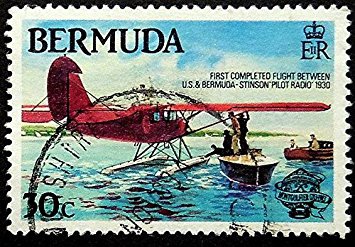 1930.
April 1. First-ever aircraft Pilot Radio arrives in Bermuda. Up
to then, those who had been flying aircraft since 1919 still considered
navigating by air to tiny and isolated Bermuda too risky, because the
nearest landmass, North Carolina was more than 600 miles away and there were no
Bermuda radio aids to air navigation. But three decided to accept the
challenge. They were pilot William H. Alexander, Captain Lewis A.
Yancey, an experienced navigator, and Zeh ‘Jack’ Bouck, a radio operator.
Alexander had learned to fly at a Wright brothers school in 1911. During World
War I, he had flown with the Royal Flying Corps in Canada, later transferring to
the U.S. Navy and becoming a flying instructor at Pensacola, Florida when the
United States entered the war. In the postwar years he went into commercial
flying, concentrating on seaplane operations. Yancey had been a lieutenant in
the U.S. Navy submarine service, during which time he became interested in
navigation.
1930.
April 1. First-ever aircraft Pilot Radio arrives in Bermuda. Up
to then, those who had been flying aircraft since 1919 still considered
navigating by air to tiny and isolated Bermuda too risky, because the
nearest landmass, North Carolina was more than 600 miles away and there were no
Bermuda radio aids to air navigation. But three decided to accept the
challenge. They were pilot William H. Alexander, Captain Lewis A.
Yancey, an experienced navigator, and Zeh ‘Jack’ Bouck, a radio operator.
Alexander had learned to fly at a Wright brothers school in 1911. During World
War I, he had flown with the Royal Flying Corps in Canada, later transferring to
the U.S. Navy and becoming a flying instructor at Pensacola, Florida when the
United States entered the war. In the postwar years he went into commercial
flying, concentrating on seaplane operations. Yancey had been a lieutenant in
the U.S. Navy submarine service, during which time he became interested in
navigation.
He transferred to the merchant marine in 1922, earning a master mariner’s license that enabled him to navigate ships of any size anywhere in the world. Yancey also authored several books on navigation. In 1929 Yancey had received much publicity when he acted as the navigator for pilot Roger Q. Williams on what the two men hoped would be a nonstop flight from Old Orchard, Maine, to Rome. Departing July 8, Yancey and Williams flew their Bellanca Model J, named Pathfinder, 3,400 miles over the Atlantic to Santander, Spain, where they had to refuel because of unexpected head winds. On July 10, they flew on to Rome, receiving a rousing welcome upon landing. Yancey told the press after his return that he was confident he could navigate a plane to Bermuda if he were teamed up with a good pilot and a good plane and had 48 hours’ notice. Bouck, crippled since childhood, had long experimented with radio. In addition to building several radio sets for aircraft, he established his own radio station in New York City. He had visited Bermuda by ship many times, and had friends there. Bouck was anxious to make a flight to the island. He had written to the Bermudian authorities seeking landing permission but had received no reply. Unlike most of the participants in record-seeking flights of that era, the three intrepid airmen tried to plan their trip secretly, because they wanted to be first. They quietly sought sponsors to finance the flight, but many in whom they confided advised them not to attempt the trip. If they missed the main island and kept on flying east, it was thousands of miles to the nearest land. Besides the honor of being first, there was at one point a monetary incentive for anyone who would succeed in a flight from the United States.
Hoping to stimulate tourism, the Bermuda Trade Development Board offered a $25,000 prize to anyone who would fly from the U.S. mainland and land in the harbor, thereby opening up the British dependency to air travel. But shortly after the prize was offered, it was withdrawn. The board was persuaded that such a reward might result in some ill-prepared, foolhardy pilot’s death in the attempt. One Bermuda writer had asked how could aviators be certain of finding a 21-mile island 700 miles from the mainland? If they failed, and with their limited fuel capacity there was no allowance for mistakes, they would surely perish. Nevertheless, three sponsors did come forward. One was the Pilot Radio Corporation, which donated a Stinson SM-1 Detroiter, a closed-cockpit high-wing monoplane powered by a Wright Whirlwind 300-hp engine, for the flight. The crew immediately named the Stinson Pilot Radio. Since there was no airport in Bermuda, a seaplane was absolutely essential, and the Edo Aircraft Company donated pontoons and suitable undercarriage struts to replace the wheels that were standard equipment on the Detroiter. To finance the trip, Bouck, who was also the editor of Air Mechanics magazine, made an arrangement with The New York Times to provide continuous contact with the Times radio station in New York City during the flight on an exclusive basis.
Yancey agreed to prepare narrative reports. The Stinson Detroiter could carry 258 gallons of fuel, enough for 10 hours of flight at a maximum cruising speed of 105 mph. Its maximum load capacity was 4,700 pounds, but the crew decided to take the calculated risk of raising the payload to 5,200 pounds. Flying a seaplane, they would not have to worry about a takeoff from a short runway. In addition to the maximum fuel load and extra radio equipment, emergency supplies such as flares, spare parts and sea anchors were added. The crew also crammed food aboard in case of a forced landing at sea. Their supplies included roast chicken, chocolate, oranges, crackers and a bottle of scotch. Word of the attempt leaked out despite their attempts at secrecy, so Alexander announced that they would depart on April 1, 1930. The day before, the Brooklyn Daily Eagle wrote "Though the flight is comparatively short for an oceanic hop, its navigation problem has been pronounced fully as difficult, if not more so, than the flight from the Pacific Coast to Hawaii. Bermuda occupies scarcely twelve square miles of area – hardly a pinpoint on the ocean’s expanse. Beyond lies more than 6,000 miles of water to Africa. Press pessimism did not discourage Alexander, Yancey and Bouck. Nor did they care that only a small, doubtful-looking crowd appeared along the banks of Flushing Bay near College Point, Long Island, to witness their takeoff. The weather was good but hazy. The wind was so light and the water so calm, however, that Alexander at first could not get the overloaded Detroiter off the surface of the bay. After the fourth unsuccessful try, he offloaded several cans of gas, some rope, a pontoon repair kit and a heavy sea anchor. Then a plane from the Edo Aircraft Company taxied by to make some ripples that allowed Pilot Radio‘s pontoons to break the surface tension and finally get off at 10 a.m., on the fifth takeoff run. Departure was much later than planned because Bouck had been held up in getting a battery charged and was late in arriving at the launch point. That delay would influence what happened later in the day.
The Detroiter climbed laboriously and leveled off at 2,000 feet. Bouck made regular short-wave radio reports to The New York Times and talked with several ships en route, while Yancey took frequent drift readings. The weather remained fair, but they encountered strong head winds as they neared the midpoint of their journey. As the sun was dipping in the west, Bouck reported that they expected to arrive off Bermuda at 6 p.m. At 5:20, however, he radioed a somewhat less optimistic update to the Times: ‘If we don’t see the islands pretty soon, we will set her down for the night. If we have to set her down, don’t let anyone worry about us. The sea is like a lake.’ At 5:34 p.m. Bouck reported: ‘No news yet. We are making a run for the islands, but don’t know what the chances are. We may make it or we may not.’ At 5:50 he announced: ‘Setting her down right now. Position 60 miles north of Bermuda. Tell everyone not to worry. Will continue to Bermuda in the morning.’ Alexander opted to land on the sea because it would have been hazardous to attempt a night landing among the unseen coral reefs that form a barrier around Bermuda’s north shore. It would also have been dangerous for the three airmen to try to land in the unlighted, unfamiliar harbor at Hamilton, Bermuda’s capital. Meanwhile, Bermuda residents had long been scanning the northern sky. But when eight hours passed from the plane’s expected arrival time in mid-afternoon, Bermudans were afraid there had been a disaster. Ships in the harbor at Hamilton were asked to turn on their searchlights.
Requests were sent out to wireless stations and ships to try to establish radio contact with the aircraft. SS Bermuda, one of the ships that plied the route between New York and the islands, was contacted, as was Lady Somers, a Canadian cruise ship that had left Bermuda for Halifax that afternoon. Bermuda was unable to establish any radio communication with Bouck and continued on her way. Lady Somers circled for some time, looking for flares. The fliers, meanwhile, did not feel they were in danger. Bouck’s radio log from the following morning tells what they had done the night before: ‘5:50 A.M. (New York time) Please telephone wife and tell her everything O.K. Here is the dope: Set her down at 6 P.M. for the night. Let out a sea anchor and turned in for the night, keeping three watches. At 3 A.M. a ship was sighted and we shot five flares. They hove to, and we asked them to report that all was O.K. with us. They wanted to take us off but we decided to stick to the ship. Just got off now in a bad ground swell; it was a tough job. Also, the landing last night was tough, due to ground swell. ‘6:00 A.M. Here’s another highlight. We lost our flashlight overboard last night when looking over the pontoons and had to rig up an emergency light to signal the boat with. I tapped a piece of wire on the battery cable for a key. We didn’t get the name of the boat, but I can’t understand why they didn’t report us. They seemed surprised to learn that we refused to be taken off. Bill (Alexander) was a little seasick. Yancey and I got through the night O.K. Somewhat cramped though because we all went forward to keep the rear part of the floats out of the water. Had to re-rig floats this A.M. before taking off. The wires were strained in landing last P.M. Please tell Edo that their floats sure showed what’s in them last night.’
The vessel that had stopped to render assistance after seeing the plane’s flares was Lady Somers. Alexander asked the captain to send a message to New York that all was going well, to radio their position, and to explain that they would depart in the morning. Word eventually made its way to Bermuda from New York that the crew had decided to put down in calm seas rather than risk forging ahead in the darkness. When Alexander took off in heavy swells the next morning, he accomplished an aviation first of which he was then unaware. He had become the first pilot in history to land an aircraft in the open sea, remain overnight and take off successfully during a record-flight attempt. His flying skill, however, could not overcome the simple fact that the aircraft could go only as far as the fuel allowed. The plane’s overloaded condition and head winds had resulted in high fuel consumption. Moreover, the plane’s fuel gauge was faulty, so the men did not have an accurate reading of how much gas remained for the final leg of their flight. Bouck sent a final message at 6:17 a.m. stating that they had sighted Bermuda dead ahead. Shortly after the trio saw Hamilton’s white buildings glistening in the bright sunlight, however, the fuel factor caught up with them as Pilot Radio‘s engine suddenly sputtered and died. Alexander had to make a forced landing only 10 miles from the north shore. The plane was sighted by a watcher at the marine pilot station on St. David’s Island, who immediately dispatched two members of the station in a motorboat to greet the embarrassed Americans.
When they learned that the plane needed gas, they returned with several cans. A second boat arrived with J. P. Hand, chairman of the Bermuda Trade Development Board and a member of the Bermuda Parliament. Pulling alongside, he extended an official welcome to the three fliers. Curiously, he was the same man who had refused to answer written requests from Bouck for permission to land during the previous two months, as well as the individual who had persuaded the development board to withdraw the $25,000 prize for fear of possible damaging results on the local economy if a contestant lost his life. Now that the plane had arrived safely, however, there was nothing to do but congratulate the fliers who had taken the risk and survived. Alexander made a final takeoff after adding the gas and landed a few minutes later in Hamilton Harbor before a small, cheering crowd. Before the crewmen could greet anyone, however, they were towed to a wharf on the other side of the harbor, where they were met by the chief of police and a physician who gave them a quick medical examination. Then the plane was pulled up on a ramp and the men were driven to the Inverurie Hotel to wash up and greet the public. The Bermudians warmly welcomed the fliers and feted them in a series of celebrations over the next several days. The development board members who had withdrawn the $25,000 prize money the year before voted to give $1,000 to each of the three aviators in recognition of their accomplishment. Alexander radioed The New York Times that they would make the return flight to New York when the weather was favorable. Bouck later defined for the Times what Alexander meant: ‘Conditions would have to be perfect–a calm sea, a cloudless sky, and a following forty-knot wind.’ As they were preparing for the return flight, however, they discovered that one of the plane’s wing struts had been wrenched during the two sea landings, making it too risky for the Stinson to make the return flight. Pilot Radio was hoisted aboard a steamer, and the fliers returned with it by sea to New York. After they left the island, Bermudan J.P. Hand announced he would introduce legislation to prohibit any further such flights until a weather station and a radio beacon could be installed on Bermuda. He added a prediction, however, that the flight was the forerunner of great things to come for commercial air service to the island.
The backers of the flight were jubilant, even though it had been accomplished in only one direction. Richfield Oil Corporation praised the pilot for conserving his fuel by making a safe sea landing instead of blundering on in the dark. The Stinson Company complimented Alexander for his ability to get off the water with the Detroiter’s heavy load at the start and from the treacherous Atlantic swells the next day. Isadore Greenberg, president of the Pilot Radio and Tube Corporation, proudly announced that the plane would be sent on a tour of South America and used as a demonstrator for two-way aircraft communications. Charles H. Colvin, president of the Pioneer Instrument Company, maker of the instruments in the plane, commented that ‘the landing on the sea in the dusk made the flight even more valuable because it served to dispel popular beliefs that sea landings are always disastrous unless saved by unusual strokes of luck.’
1930. April 27. Bermuda Floral Pageant was held. First of its type, it began a tradition. A group of enthusiasts celebrated Spring by parading flower-bedecked floats pulled by horses through the streets of Hamilton to the Bermudiana waterfront, where a Lily Queen was crowned.
1930. June 6. Dr. William Beebe and Otis Barton first descended into the waters off Bermuda in the bathysphere and diving helmets (see photos below) Barton designed in 1928 for the New York Aquarium. Their pioneering experiments led directly to their success on August 15, 1934, as recorded below.
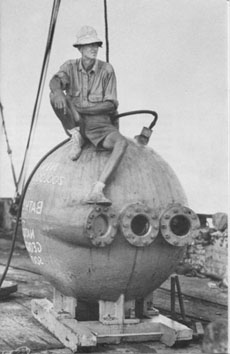
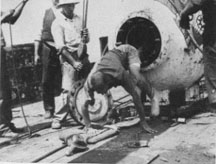
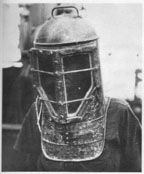
1930. June 29. With Bermuda's earlier first aircraft arrival milestone still capturing media attention from three months earlier, Roger Q. Williams, barnstormer, stunt and test pilot, with Canadian World War I veteran Captain J. Errol Boyd as co-pilot and Lieutenant Harry P. Connor, a U.S. Navy-trained navigator, arranged to fly Miss Columbia, a Wright-Bellanca WB-2 single-engine monoplane with wheels, on a nonstop, round-trip flight to Bermuda from Long Island. Miss Columbia had already achieved fame as the plane flown by Clarence D. Chamberlin and Bert Acosta when they set a world’s endurance record of more than 51 hours in May 1927. Chamberlin and Charles A. Levine then flew it nonstop 3,910 miles the following month to Eisleben, Germany. The announced purpose of a round-trip Bermuda flight without landing, according to Williams, was to ascertain if, with the navigation equipment then available, a regular airline service could be established between New York and Bermuda. He said that if a small, single-engine plane such as Miss Columbia could make the round trip and find the island with ordinary navigational methods, scheduled passenger flights to the island would be easily achievable with radio-equipped amphibian planes powered by two or more engines. The Miss Columbia trio departed from Roosevelt Field on Long Island early in the morning that day, in clear weather. Connor had no problems with the navigation, but since there was no radio on board, he was unable to report their progress as Bouck had done three months earlier on Pilot Radio. The skies gradually darkened as they flew on, and as they approached Bermuda shortly after noon they ran into a driving tropical storm. ‘Within forty miles of the island, we struck one of the fiercest rain squalls I have ever flown through,’ Williams said in a New York Times interview after the flight. ‘We went down to 200 feet and came in over the city [Hamilton] and circled. It looked like a landing [was inevitable] on a field I couldn’t see, for that water got to the magneto and the engine began to kick up. We circled for twenty minutes, hoping for a place to land or a let-up in the rain, but neither showed up. It looked like a crash to me. Finally, we turned seaward again because there was nothing else to do. A few miles out the rain stopped, the sky cleared and the old motor started doing its old stuff again, so we came home. What pleases me is we struck those little chunks of land, scattered over only eighteen miles of the Atlantic Ocean, right on the nose, without any radio bearings." What Williams did not mention was that they had dropped a bag of mail on the Belmont Manor Golf Club grounds, to the rear of the Hotel Bermuda. When a reporter asked him about landing there, Williams said the golf course was the only possible stretch of land where a landing might have been possible, but that a crackup was ‘certainly a possibility.’ The return flight to New York was uneventful. They made a night landing at Curtiss Field instead of Roosevelt Field because of thick haze over their departure airport. The elapsed time for the 1,560-mile flight was 17 hours 8 minutes, and they had enough fuel remaining to fly another 1,000 miles. (The trip served as a practice run in the same Bellanca for a transatlantic flight by Boyd and Connor from Newfoundland to England the following October). The successful round-trip flight to Bermuda had an unpleasant brief aftermath for Williams. The Bermudian government sent a protest to the U.S. State Department because the fliers had not notified the island’s authorities about their plans and had not received permission beforehand. Williams’ pilot license was suspended by the Aeronautics Branch of the Department of Commerce for several weeks as a result.
1930. During the summers of both 1930 and 1931, Veendam II of Holland-America Line sailed on five-day roundtrip cruises between New York and Bermuda.
1930. Ten years after the first radio station, KDKA, began in Pittsburgh, PA Bermuda's first commercial radio station was opened and owned by Thomas J. Wadson. He used the call letters TJW and did the broadcast from his Front Street shop (still open today). It was the forerunner of ZBM radio in Bermuda much later.
1930. In the summer, the magnificent Furness Withy liner "Bermuda" arrived in Hamilton once again began her seasonal weekly run from New York.
1930. In the Pembroke March Reclamation Scheme, some 253,000 cubic yards of material was dumped into the Pembroke Marshes, some of which came from the cutting of Black Watch Pass, being excavated for the new road on level ground from Hamilton to the North Shore. Where water once lapped at the north end of Court Street, massive dumping filled the wetlands with the "reclaimed" land later occupied by the Transport Control Board buildings.
1930. The Bermuda Women's Suffrage Society (BWSS) appealed to the British Secretary of State for the Colonies, Lord Passfield, to set up a Royal Commission. Their petition was in the form of a "Memorial" on the death of the women's franchise in Bermuda. While Lord Passfield declined to interfere in Bermuda's internal politics he did strongly advise Bermuda's House of Assembly to bring legislation into conformity with contemporary British institutions elsewhere. His advice was ignored.
1930. 8 July. Royal Navy
records show the death, at the RN
Hospital,
1931. January 10. Flight to/from Bermuda of Bellanca CH300 seaplane "Tradewind." Lost. With Mrs. Beryl Hart and Lieutenant William S. McLaren of the US Naval Reserve aboard, the white painted Bellanca CH300 Pacemaker high wing seaplane Tradewind had landed safely in Bermuda from Hampton Roads, Virginia on January 7. It was much-celebrated in Bermuda as the first completed flight between the U.S. and Bermuda, and the first leg of a projected trans-Atlantic flight to Europe designed to demonstrate the commercial possibilities of trans-Atlantic flying. But after three days in Bermuda, the plane and by-then-famous couple, after partying galore in Bermuda, took off from Hamilton Harbour to the Azores and then disappeared into a huge black cloud. Neither the occupants or aircraft were never heard from again. The Bellanca CH-300 Pacemaker was a six-seat utility aircraft built primarily in the United States in the 1920s and 1930s. It was a development of the Bellanca CH-200 fitted with a more powerful engine and, like the CH-200, soon became renowned for its long-distance endurance, so much so that a 400 was later successfully introduced.
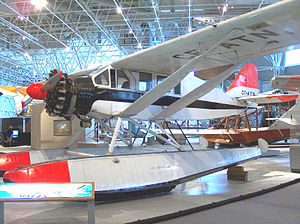
Bellanca CH300 restored and in a Canadian museum
1931. January. Albert Edward, Prince of Wales (later, briefly, King Edward VIII) visited Bermuda again, en route to Buenos Aires to open a British Industries exhibition. He was accompanied by his younger brother Prince George, Duke of Kent (later King George VI). During his stay he played golf on the Mid Ocean course.
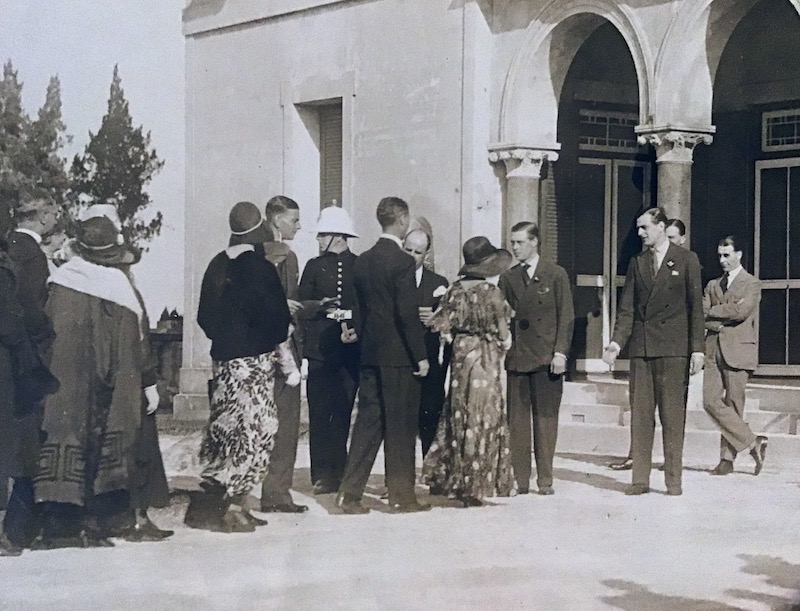
Prince of Wales, fourth from right, in Bermuda 1931
1931. The Bermuda Trade Development Board, forerunner of Bermuda Tourism, produced the Visitors' Map below:.
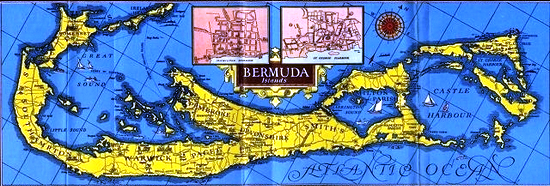
1931. This Week in Bermuda, a magazine, began and eventually became one of the Island's oldest and most famous tourist information publications.
1931. Summer. The Minutes of the Public Works Department referred to the Pembroke Marsh works then ongoing and said in part :"His Excellency the Governor drew attention to the fact that the new road would cut out a portion of the best grazing land unless the cutting was bridged over. The Director recommended that the cutting be bridged over and the necessary fencing or wall at the top be built as part of the new road works. The Director stated that the actual archwork of the tunnel is now complete, but that the facades at each end and the concrete support piers have still to be done when the excavation has been taken down to road level."
1931. Arrival in Bermuda of cruise ship Monarch of Bermuda for Furness Withy Line and it's New York to Bermuda service. She was 579 feet long with a beam of 76 feet. Completed in 1931 she was 22,424 gross tons and powered by steam turboelectric propulsion (engines by Fraser & Chalmers, Erich (turbines), and by General Electric Co Ltd, Birmingham (motors)), driving 4 screws. She was fitted with 3 funnels, had 2 masts and a cruiser stern. Her service speed was 19 knots. Accommodation was provided for 799 passengers in 1st class and 31 in 2nd class. She carried a crew of 456.
1931. July 28. Somers Day was observed for the first time as an official holiday, a one-off event.
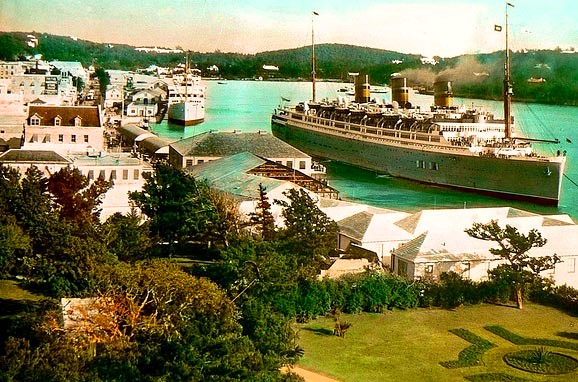

Monarch of Bermuda arrival 1931
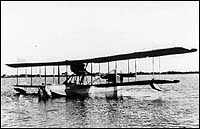 1931.
August 31. Pilot
C. Nelmes of Bermuda was killed when his aircraft a Curtiss HS-2L aircraft,
of World War 1 vintage, of the type once used by the United States Navy and
Canadian authorities but later deemed by the former to be too dangerous to
fly after 1928, crashed at Grassy Bay off HM Dockyard when over-flying a
ship. There were two survivors. This flying boat made its debut as a
warplane by patrolling against enemy submarines. The manufacturer was
Curtiss Aeroplane and Motor Co. Inc. of Hammondsport and Buffalo, NY, and
the patrol flying boat was built under license by Galaudett Flying Boat
Company, College Point, Long Island, NY. Its wingspan was just over 74 feet;
height 14' 7"; length 38' 6"; top speed 91 mph; range 517 miles;
empty weight 4,700 lbs; gross weight 6,432 lbs; fuel capacity was 141
gallons; crew were three people; service ceiling was 5,000 feet; engine was
a Liberty 12 at 350 HP and the sea level climb was 220 feet per minute.
The United States Navy flew them
on anti-submarine duty off the East Coast from bases in Nova Scotia. When
WW1 was over, they donated twelve of the planes to Canada. In 1919, the
first HS-2Ls went into Canadian civil use in Québec forestry work,
remaining the predominant bush aircraft until 1926 or 1927. It was to mark
the dawn of the Canadian bush pilot tradition. The Ontario Provincial Air
Service (OPAS) was formed by the Government of Ontario in 1924 to protect
the province's vast forests. At the time it was one of the largest airborne
forest services in the world. They constructed a hangar at the edge of the
St Mary's River in Sault Ste. Marie to house their fleet of surplus Curtiss
HS-2L's. Using aerial detection of forest fires, aerial transportation of
fire crews and equipment, map making, aerial photography, and forest
inventory, they ushered in a new era of ecological maintenance -- in their
first year of operation alone, 600 forest fires were spotted. The wooden
hull of the flying boat presented a few disadvantages. It could be damaged
by rocks or dead trees, and had a tendency to get waterlogged after the long
weeks and even months it spent in water. This increased the weight of the
craft and caused performance to become sluggish. The aircraft needed to land
in a fairly large lake to be able to take off again. It often required a
mile to take off and climbed so slowly that it needed a lake or sea surface
of 3 to 5 miles in length to achieve sufficient height to clear trees and
hills. Its average speed was about 65 miles per hour (105 km/hr). The
H-boat, as it was known, had an ambiguous safety record - it could land in
rough water, but if it stalled and went into a spin, it was impossible to
pull it out again. The U.S. Navy branded it as too dangerous for violent
maneuvers, and afterward there were few accidents - as one USN officer said:
"All the good HS-2L pilots were killed off by 1923, and therefore there
were no more accidents." It is believed that Nelmes of Bermuda
bought his Curtiss HS-2L in Canada, from OPAS.
1931.
August 31. Pilot
C. Nelmes of Bermuda was killed when his aircraft a Curtiss HS-2L aircraft,
of World War 1 vintage, of the type once used by the United States Navy and
Canadian authorities but later deemed by the former to be too dangerous to
fly after 1928, crashed at Grassy Bay off HM Dockyard when over-flying a
ship. There were two survivors. This flying boat made its debut as a
warplane by patrolling against enemy submarines. The manufacturer was
Curtiss Aeroplane and Motor Co. Inc. of Hammondsport and Buffalo, NY, and
the patrol flying boat was built under license by Galaudett Flying Boat
Company, College Point, Long Island, NY. Its wingspan was just over 74 feet;
height 14' 7"; length 38' 6"; top speed 91 mph; range 517 miles;
empty weight 4,700 lbs; gross weight 6,432 lbs; fuel capacity was 141
gallons; crew were three people; service ceiling was 5,000 feet; engine was
a Liberty 12 at 350 HP and the sea level climb was 220 feet per minute.
The United States Navy flew them
on anti-submarine duty off the East Coast from bases in Nova Scotia. When
WW1 was over, they donated twelve of the planes to Canada. In 1919, the
first HS-2Ls went into Canadian civil use in Québec forestry work,
remaining the predominant bush aircraft until 1926 or 1927. It was to mark
the dawn of the Canadian bush pilot tradition. The Ontario Provincial Air
Service (OPAS) was formed by the Government of Ontario in 1924 to protect
the province's vast forests. At the time it was one of the largest airborne
forest services in the world. They constructed a hangar at the edge of the
St Mary's River in Sault Ste. Marie to house their fleet of surplus Curtiss
HS-2L's. Using aerial detection of forest fires, aerial transportation of
fire crews and equipment, map making, aerial photography, and forest
inventory, they ushered in a new era of ecological maintenance -- in their
first year of operation alone, 600 forest fires were spotted. The wooden
hull of the flying boat presented a few disadvantages. It could be damaged
by rocks or dead trees, and had a tendency to get waterlogged after the long
weeks and even months it spent in water. This increased the weight of the
craft and caused performance to become sluggish. The aircraft needed to land
in a fairly large lake to be able to take off again. It often required a
mile to take off and climbed so slowly that it needed a lake or sea surface
of 3 to 5 miles in length to achieve sufficient height to clear trees and
hills. Its average speed was about 65 miles per hour (105 km/hr). The
H-boat, as it was known, had an ambiguous safety record - it could land in
rough water, but if it stalled and went into a spin, it was impossible to
pull it out again. The U.S. Navy branded it as too dangerous for violent
maneuvers, and afterward there were few accidents - as one USN officer said:
"All the good HS-2L pilots were killed off by 1923, and therefore there
were no more accidents." It is believed that Nelmes of Bermuda
bought his Curtiss HS-2L in Canada, from OPAS.
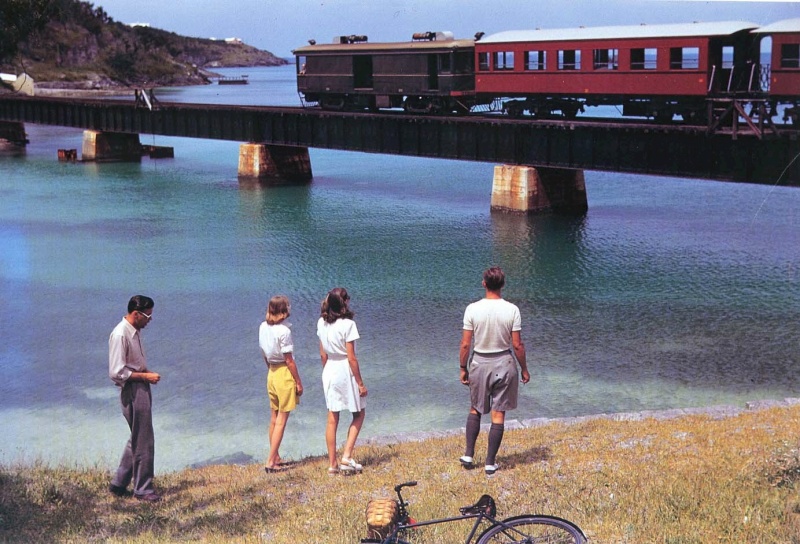
Bermuda Railway over coastal bridge
1931. August. The Bermuda Railway Company, some months before it officially opened in Bermuda, ordered eight 20-ton 120hp petrol-engine-powered bogie coaches, plus six 14-ton bogie first class coaches and two 14-ton bogie freight vans from Drewry Car Co Ltd in the UK.
1931. Bermudian Lieutenant Cecil Montgomery-Moore, a Great War veteran became the officer second-in-command (after Major Harry Butterfield, later knighted) of the new Bermuda Volunteer Engineers (BVE), created as a replacement for the departed regular Royal Engineers Fortress Company of the Bermuda Garrison (that guarded the Royal Naval Dockyard in Bermuda). The original role of the BVE was to operate the search lights at coastal artillery batteries, notably the Examination Battery at St. David's Head, the guns of which were manned by the Bermuda Militia Artillery (BMA). The BVE subsequently also took on responsibility for providing signals crew and equipment to all elements of the garrison.
1931. October 13, afternoon. The first full successful trial run of the Bermuda Railway was made from Hamilton to Somerset (as the line to St. George's had not yet been completed).1931. October 31. The Bermuda Railway was officially opened, a few weeks after commenced operations with the first train, after a year of building. (But see 1910 and 1924). The official party assembled at # 1 Shed in the city where they were welcomed by a reception committee. Governor Cubitt and Lady Cubitt were greeted by Mr. and Mrs. O. A. Jones, for the construction engineers; H. W. Watlington, who had guided most of the railway legislation through Parliament; Mr. Stemp, Managing Director and traffic coordinator of the Bermuda Railway Company; and J. R. Conyers, Vice President. Then came Major R. W. Appleby, Attorney General of Bermuda at the time and one of the Railway Commissioners. (Later, he became a founding partner of one of the two great local legal partnerships).
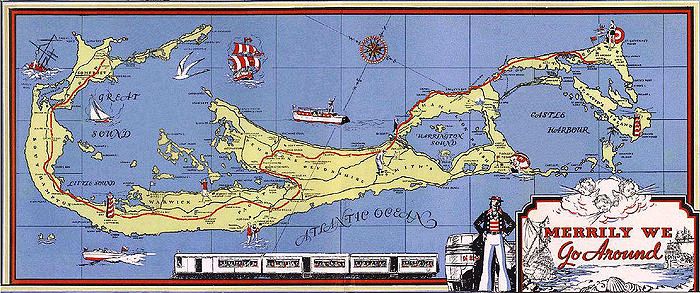
Courtesy the late Joseph J. Outerbridge, Bermuda Trade Development Board (TDB). The latter issued this to celebrate the opening of the Bermuda Railway.
1931. November. Watlington & Conyers announced that the ship "Monarch of Bermuda", its $8 million flagship, the first passenger ship in the world to have private baths and with other super new technology on board, had passed its speed and duration trials off England and would begin its New York to Bermuda run as planned.1931. November. A new Halifax & Bermuda's Wireless Receiving Station opened at "Eagles Nest" on the borders of Devonshire and Smith's Parishes, with new and better direction finding facilities installed. The facilities at the transmitting station at Lily Park, St. George's were unaffected.
1931. 30th November. The exclusive and upmarket Mid Ocean Club was completed and officially opened as a hotel, after two years of construction. It was built by Furness-Withy, via its Bermuda Development Company Ltd. It was officially and ceremoniously opened by Governor General Sir Thomas Astley Cubitt. It was built by 600 Azorean contractors. Prominent visitors at the hotel were often photographed and used to market Bermuda. They included Babe Ruth, Albert Einstein, Harpo Marx, Irving Berlin and Shirley Temple.
1931. 30th November. The 400 room Castle Harbour Hotel was completed. It was built by Furness-Withy, via its Bermuda Development Company Ltd. It was officially and ceremoniously opened by Governor General Sir Thomas Astley Cubitt. It was built by 600 Azorean contractors.
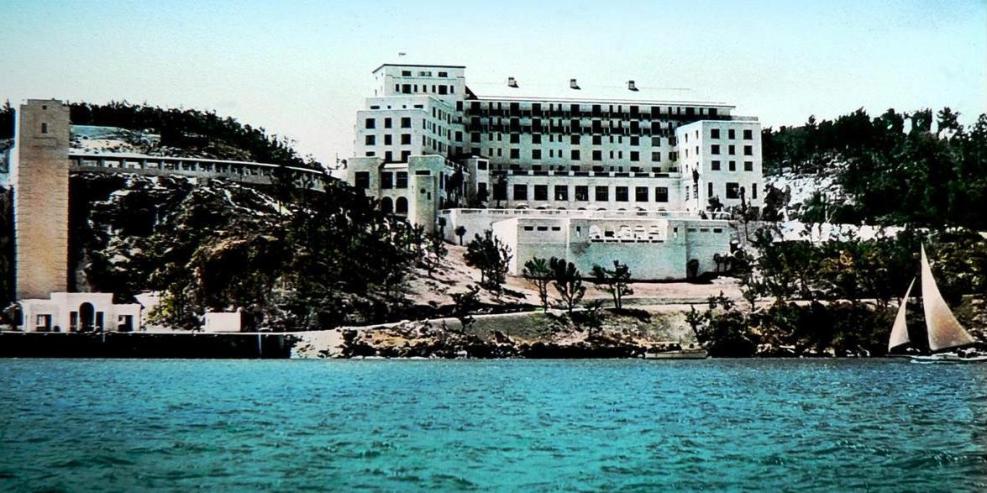
Castle Harbour Hotel, Bermuda, was opened.
1931. December 21. Bermuda/New York radiotelephone service opened in conjunction with the American Telephone and Telegraph Company (AT&T). It was managed and operated by the Halifax & Bermudas Cable Company. It was the first of its kind to be operated by that company and was preceded only by the New York-London service.
1932. March 13-15. The ship Prince David, owned by Canadian National Steamships, a subsidiary of Canadian National Railways, and one of a trio of "Princely" ships serving Bermuda and the West Indies, was on its second cruise to Bermuda as a passenger and cargo liner. It approached Bermuda in heavy rain that caused poor visibility. Officers on the bridge estimated their position from the radio direction finder, as they had done the first time the ship cruised to Bermuda. But the Bermuda radio direction equipment had been moved from its original position near St George's to Devonshire. Instead of following a course to St. George's that would bring them safely to the entrance of the channel through the reef, the ship was several miles off course. At 12.40pm it struck one rock, went over it and then became firmly lodged on a second rock that formed part of the reef near North Rock. An SOS message was immediately sent, being picked up ashore, and also by Lady Somers, which was also approaching the Island from Boston. An hour after the ship went aground, the rain stopped, but a strong wind sprang up from the south west, which soon whipped up a heavy sea, preventing Lady Somers, or the tugs that had rushed to the scene from St Georges approaching the grounded ship. At first there seemed little danger, and passengers were served their lunch in the dining room as usual. During the afternoon Prince David began to sink by the stern, and as the tide began to fall, also began listing to starboard. This increased concern for the safety of the 84 passengers, resulting in them being placed in the lifeboats, along with some members of the crew, and transferred to Lady Somers. Eventually at low tide Prince David was listing at 45 degrees, and the stern had disappeared beneath the water, only the captain and four officers remaining on board. The five officers remained with the ship throughout the next day, but rising seas on the evening of 14 March forced them to decide to abandon the ship too. A group of St Georges men, including some pilots, manned a small boat to rescue the officers. Battling strong squalls and heavy seas, the boat took three and a half hours to reach Prince David, at 2am on 15 March. By then the men on the stricken ship were numb with cold, and it was a major task to rescue them, but at last all five were safely on board the small boat. The voyage back to St Georges was as difficult as the outward trip, the small launch battling huge seas that threatened to swamp it at any moment. It was 5am before the boat finally tied up at Market Wharf. When the weather moderated, divers were sent out to examine the hull of the ship. They found much of the bottom plating at the forward end of the ship had been torn off, and it was awash to B Deck aft. It was thought the ship would be a total loss, but it was held firmly on the reef by the bow, and it was thought she might be saved. A salvage company from New York was contracted, and they brought equipment and tugs to the island. It was not until 2pm on 25 April that Prince David was finally re-floated, and towed into Five Fathom Hole. After extensive repairs in Canada, Prince David returned to the Bermuda run for some months, but was laid up, or put out to pasture, for two years at anchor at Port Royal Bay, from April 1934. After another brief period of service, the ship was laid up again, only to be converted as an Armed Merchant Cruiser, HMCS Prince David, for the Second World War, including convoy escort work out of the British North America and West Indies Station, headquartered at the Dockyard.
1932. Watlington Waterworks opened in Devonshire. It was founded in 1932 by Sir Henry Watlington to support the island’s growing tourism sector.
1932. January. Additional vehicles were ordered for the railway.
1932. Rosamond Tudor, portrait painter, visited Bermuda during the winter. She stayed at a cottage in Somerset.
1932. Death of Bermudian-born, American-naturalized Rev. Dr. Francis L. Patton, after whom a Bermuda school in Hamilton Parish is named. He was born in 1843. Patton attended Warwick Academy, Knox College, Toronto and graduated from Princeton Theological Seminary in 1865. From 1872 to 1881, he was a professor at McCormick Seminary, Chicago. He distinguished himself as a preacher, theologian, academic and ultimately the head of Princeton University until he retired in 1913. He was reported as having been a personal friend and adviser to a number of world leaders, including US Presidents Grover Cleveland and Woodrow Wilson On. his death, the New York Times recalled his “brilliant mind” and said: “Princeton began to grow into a University in his day…”
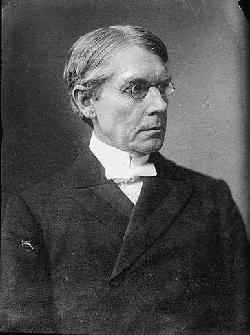
Dr. Francis Patton
1932. First company of black Girl Guides, First Excelsior, was formed in Bermuda. There was also a Brownie Pack and Rangers.
1932. July. USS Akron, ZRS-4, flew from Lakehurst to Bermuda. She was searching for the missing yacht Curlew. It was not a success but considered a valuable operational exercise. She moored in the Great Sound and hundreds of Bermudians were fascinated.

USS Akron arrived in Bermuda
1932. July 22. Death in Bermuda of the American-naturalized Canadian-born pioneer in the field of radio with a previous Bermuda connection and Bermudian relatives, Professor Reginald Fessenden (born October 6, 1866).See http://en.wikipedia.org/wiki/Reginald_Fessenden. At the Whitney Institute there, he had been the Headmaster. Fessenden had married a Trott (an old Bermuda family) and in his memory there are scholarships called the Fessenden-Trott Scholarships. He made it possible for radio voices to be broadcast (Marconi's radio only did Morse code). He was buried in St. Mark's Church cemetery. On his grave (on a stone lintel at the top of the memorial) is inscribed: "His mind illumined the past and the future and wrought greatly for the present." When Fessenden retired to Flatt's Village (because of a heart condition) in 1928, he bought 'Wistowe' and remodeled it. He was buried at St. Mark's Church Graveyard in Smith's Parish.
1932. The book The Story of Bermuda, by Hudson Strode, was published, in New York, by Random House. Fish scale cover, 374 pages, with photographs by Walter Rutherford and a forward by Vice Admiral Sir Vernon Haggard, RN. Strode spent three years in Bermuda then returned to the University of Alabama where he was Professor of English. He succeeded in giving a feeling of the place - a rendering of an atmosphere which grew out of climate, scenic beauty, historical events, the character of the people and their manners, the country's architecture and more. Strode's book also referred to the first-ever written record of Bermuda, written in 1515 by Spanish courtier, writer and historian Gonzalo Ferdinandez ' Oviedo y Valdez. He sailed near Bermuda but was unable to land. However, he recorded an account of the island as it was then.
1932. Biggest lobster ever caught in Bermuda weighed 16 lbs.
1932. American artist and architect Donald Morris Kirkpatrick and his wife Renee Despard moved to Bermuda, where Kirkpatrick worked for the local architectural firm of Onions and Bouchard. He designed and built a house named “Landfall” overlooking Crawl Point, and the couple moved into their new home in 1934. Homes in Bermuda designed by Kirkpatrick included the following: Troon, the home of Mrs. M.A. Dunne, in Tucker’s Town; Commonland Point, the home of Mrs. G.B. Hollister, in Shelly Bay; as well as homes for Terry Mowbray, Lady Williams, and Dr. Harry Curtis. Also, in collaboration with others, he helped design the Pink Beach Cottage Colony and the Bank of Butterfield building.
1932. Furness Withy released this poster of its 1932 shipping services to and from Bermuda. Featured with the SS Monarch of Bermuda and the about to start brand-new SS Queen of Bermuda.
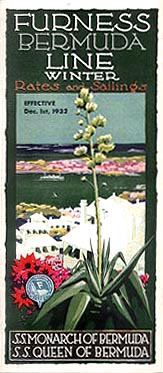
1932. November. The Halifax and Bermudas Cable Company Ltd organized the installation of cable re-generator equipment, with its branch newly fully automated.
1933. February 24. Death in Bermuda of Frederick Eardley-Smith, born August 31, 1884, 1906 Bermuda Rhodes Scholor, a Bermuda lawyer and former Member of the Colonial Parliament in Bermuda.
1933. President Franklin Roosevelt of the USA formally declared an end to Prohibition in the USA, after 14 years, during which a number of Bermudians became very rich from running their booze ships to the USA. Initially the ban on beer and wine ended, followed later that year on all other liquor.
1933. Legendary American composer Irving Berlin accompanied by playwright collaborator Moss Hart visited Bermuda during the Easter season to work on the songs and book of an upcoming Broadway revue eventually titled As Thousands Cheer. Among the local influences the partners absorbed and incorporated into their work during the Bermuda sojourn was the idea for a sketch to be staged around a newly written Berlin number. Both the skit and the song were called Easter Parade. They had as their inspiration the old Easter (or Floral) Parade, which thrived from the 1920s to the 1960s, then a massive must-see event for both residents and visitors. It left an imperishable worldwide legacy. This annual springtime procession of flower-bedecked floats, bands and equestrians was originally conceived as an elaborate and festive showcase for the Island’s lily crop. This enduring show tune has long since entered the Great American Songbook, spring’s counterpart to Berlin’s festive season classic White Christmas.
1933. Henry Wilkinson completed and published a major book on Bermuda, his The Adventurers of Bermuda; a History of the Island from its Discovery until the Dissolution of the Somers Island Company in 1884.
1933. Arrival, for the first time, of the QTEV Queen of Bermuda, a lovely vessel and cruise ship belonging to the UK-owned Furness Withy shipping line. She steamed between New York and Bermuda on a weekly basis until 1966, except for war service.

From 1933. British military seaplanes were based in Bermuda. A hanger was constructed at the Royal Navy Dockyard in Sandys Parish and the small RAF Bermuda station began. Although controlled by the Royal Navy, the base was manned entirely by Royal Air Force personnel. But all British aircraft were all part of the Fleet Air Arm (FAA), which took over from the pre-1920s Royal Naval Air Force. They included a number of Hawker Osprey, Fairey Seafox and Supermarine Walrus seaplanes, catapult-launched from warships.
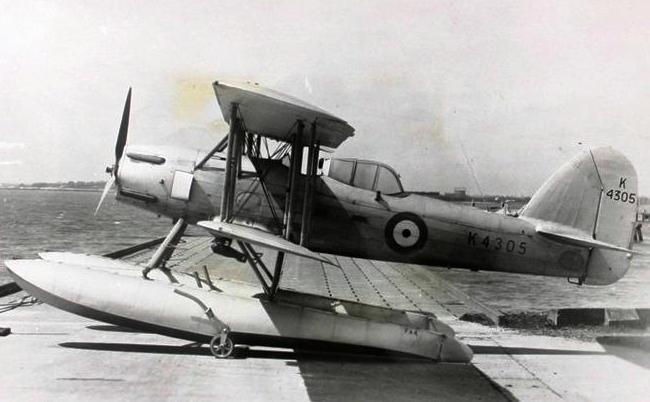
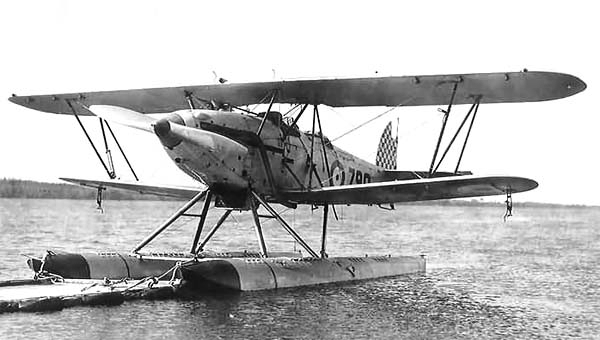
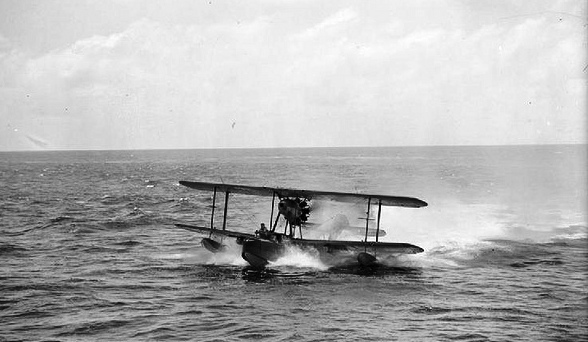
1933. December 16. After almost 60 years occupation of
52 Front Street, the Royal Bermuda Yacht Club (RBYC) acquired a fine water site at Albuoy's
Point, Hamilton, built a
large Club House on their new property and moved into their new (and present) quarters.
1933. Gilbert
Institute in Paget was established as a Bermuda school. It was founded by C.
G. G. Gilbert.
He and his wife Elsie (nee Green) who
became the matron and later their staff were responsible for the re-training and
acceptance back into society of delinquent boys. He and his wife were
earlier the only inhabitants of Nonsuch Island. They had four children, three
boys and a girl. One or two boys on probation was sent to the Tuckers on
Nonsuch, where at that time there was no electricity or telephone on the island.
When Dr. Henry Wilkinson headed the Health Department he and Mr. Tucker
discussed the idea of creating a proper reformatory for boys too young to be
sent to prison, but the idea had to wait until 1934 to become a reality. Later,
the Tucker's recounted how grateful they were to Dr. Wilkinson, whom they
regarded as the Godfather of Nonsuch. Because of his help, the Health Department
provided the site, the salaries of Mr and Mrs Tucker and the telephone in that
first year. It began on January 1, 1934, with five boys but its roots go
back to 1927 when Mr. Tucker was believed to have been employed in the Bermuda
Government's Department of Health. The school was run by the Tuckers as a
modified Naval school. The Tuckers were far from being harsh taskmasters.
Later, they were saluted for their fairness when merited and firmness but
without malice when due. Their intention was to give the boys in their
charge the discipline when necessary but also to instill in them a degree of
self-belief and self-worth. The Tuckers made a point of not favoring their
children over the boys they supervised but treated all as their own. The Tucker
children got their meals after the boys were fed. At that time, rumors
circulated in Bermuda that boys who seriously and continuously misbehaved
were told that if they did not obey in future, they would be "put in
canvas" - sent to Nonsuch and made to wear the canvas uniform worn by boys
there. Boys slept on Navy-style hammocks. The daily routine saw defaulters
fall in at 0530 hours with a full hands fall in at 0600 hours with a full 14.5
hours work day until 8.30 pm six days a week and some respite only on Sundays if
they were learning from their mis-deeds. AT 8:30 am the boys were directed to
cleaning stations. Each boy had a section of the island, in the area of the
buildings, to clean and keep tidy. Three boys, referred to as leading
hands, were quartermasters who struck the time. The boys were divided into three
divisions, Fore-top, Main-top and Quarter-deck. One division at a time was on
duty for 24 hours. This
school re-educated boys with severe disciplinary problems or involved in petty
crimes. It instructed them in masonry, carpentry, farming and other work.
When boys were punished it was not with a beating. Instead, they were instructed
to walk around the island carrying their hammocks on their back. If a crime
occured that involved stealing or deliberate damage, there was a formal enquiry
session held on area of the school known in naval terms as the quarter deck and
if appropriate, the accused concerned was specified in the Captain's report. Photo above right of Arthur
St. George Tucker. 1934. May
10. The opening, after its construction, of
the Severn Bridge (now extinct), which connected the isolated St.
David’s Island with St. George’s Island and via The Causeway with the
Main.
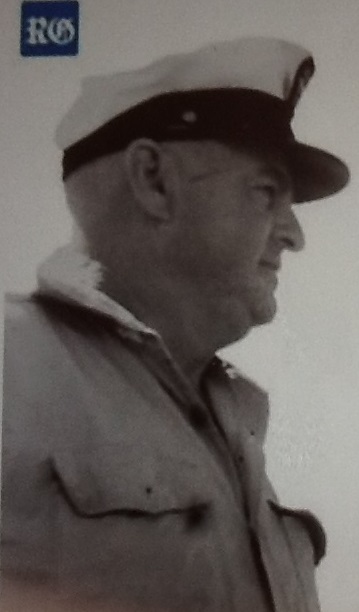 1934
(January 1)-1948. After Dr Beebe and
his party left Nonsuch, the island became a Bermuda Government-funded junior
training school, for delinquent boys, loosely modeled on the Borstal system
then in vogue in the UK. Government employed Bermudian Mr. Arthur Tucker,
who had earlier served in the Royal Navy as a gunner on a warship during the
Great War of 1914-1918. Wounded, he had been invalided out at the end of
that war. Interestingly, he already had connections with Nonsuch, not just as a
St. David's Islander but also with the Beebe diving expedition. Mr Tucker had
been the skipper of the deep-sea tugboat that had transported Dr. Beebe and his
companions and their bathysphere into that part of the ocean where they had set
records. He founded and was in overall command of the school. hat became
known as the Junior Training School. It was something new. Until then, boys
who had run afoul of the law had been imprisoned with hardened criminals. They
emerged unreformed, unrepentant, bitter and hardened criminals themselves.
1934
(January 1)-1948. After Dr Beebe and
his party left Nonsuch, the island became a Bermuda Government-funded junior
training school, for delinquent boys, loosely modeled on the Borstal system
then in vogue in the UK. Government employed Bermudian Mr. Arthur Tucker,
who had earlier served in the Royal Navy as a gunner on a warship during the
Great War of 1914-1918. Wounded, he had been invalided out at the end of
that war. Interestingly, he already had connections with Nonsuch, not just as a
St. David's Islander but also with the Beebe diving expedition. Mr Tucker had
been the skipper of the deep-sea tugboat that had transported Dr. Beebe and his
companions and their bathysphere into that part of the ocean where they had set
records. He founded and was in overall command of the school. hat became
known as the Junior Training School. It was something new. Until then, boys
who had run afoul of the law had been imprisoned with hardened criminals. They
emerged unreformed, unrepentant, bitter and hardened criminals themselves.
1934. June. After Herbert Leslie Lambert was murdered in Bermuda - chopped 119 times with a hatchet - Martha Annette Outerbridge was found guilty and hanged, singing hymns. She was the last women in Bermuda to get the death penalty.
1934. American Sinclair Lewis, infamous for his Babbitt portrait of middle-class America, warned Bermudian readers to avoid catering to non-affluent lower-class tourists. He predicted they would bring “gasoline stations” and “hot-dog stands.” He advocated that Bermuda should avoid being invaded by slummy folks with their slummy habits from places Pittsburgh and Detroit.
1934. November 28. Carroll
Wainwright, nine-year old child stepson of Sir Hector Murray MacNeal, a wealthy
British-Scottish industrialist and ship-owner who was then living in Bermuda
with his new American wife, Lady MacNeal, ran away from his Bermuda home and stowed away
without the knowledge and consent of his mother or step-father on
the liner Queen of Bermuda bound for New York which he regarded as home .Murray
MacNeal was a Scottish shipping millionaire 25 years older than his wife. He
been knighted during the Great War for services to the British war effort. The
child had been enrolled at Saltus Grammar School three weeks after his family
arrived in Bermuda. It
caused press headlines in the USA. The press dubbed Wainwright, heir to a
wealthy family, “the Silk-Stockinged Stowaway” after his caper. Unhappy in
Bermuda, piqued that his school did not allow Thanksgiving as a holiday and with
a desire to go to an American school not a British-Bermudian one like his elder
brother, the boy secreted himself aboard the Queen of Bermuda luxury liner
shortly before it set off for New York. Wainwright inadvertently set off a scare
that captured headlines, coming just two years after the infamous kidnapping and
murder of the infant son of aviator Charles Lindbergh and Anne Morrow Lindbergh.
Born in New York, he bridled at life in Bermuda, according to The New York
Times. Wainwright took his bicycle to the Hamilton waterfront and talked his
way on board, claiming to be seeing off relatives. Three hours after the ship
set sail, the boy came out of hiding, and his presence was radioed back to
Bermuda, where his abduction had been reported to police. Wainwright made the
rest of the journey home, with his grandmother in New York covering his fare,
first-class. Arriving on November 30, he reportedly told her: “Gee, I had a
swell time. The captain was “a grand guy." Curiously enough, as the Times
reported, he was not the only young stowaway below decks on the Queen of
Bermuda. (Also hidden was William Hires, the 16-year-old nephew of Charles E.
Hires, the root beer tycoon). Lady MacNeal was finally able to sail back to New
York to see her son. But when she did arrive in New York, she was in a state of
collapse. An ambulance was needed to take her from the pier to her home. Three
years later, with Sir Hector apparently occupied elsewhere, Lady MacNeal died on
her Long Island estate at the age of 36. The reported cause of death?
Alcohol-precipitated liver disease. Her considerable estate (over 1.5 million
dollars, a fortune at that time) was divided among her three orphaned
children, who were still being overseen by their grandmother—not their father.
Carroll Wainwright went on to serve in the Second World
War, followed by a legal career and a keen traveling life, but he did not
return to Bermuda despite a long family tradition of holidaying there.
1934. Black Watch Pass opened. Excavation of the roadway began in the 1920s to create the Pass, linking Marsh Folly Road with North Shore Road. It was named after the Black Watch regiment of Scotland who dug the Black Watch Well in 1842/
1934. English actor David Niven (1910-1983) enjoyed Bermuda. His pencil moustache, unflappable nature and effortless charm made him an emblem of British savoir-faire for more than four decades. But he took a roundabout route to Hollywood stardom — one which brought him through Bermuda in this year. Resigning his commission in a Scottish regiment in 1933 and at a loose end, he traveled to Canada on a whim and then visited New York where he ended up working as a whiskey salesman. After venturing into an unsuccessful Atlantic City pony racing operation which left him near penniless when it collapsed, he licked his wounds by retreating to Bermuda with his friend Maurice [Lefty] Flynn — a former Yale University All-American athlete and sometime actor — and his wife Nora Langhorne Phillips. As he recounted in his best-selling 1971 autobiography “The Moon’s A Balloon” (see below), Mr. Niven arrived in a Bermuda during a period he described as “that must have been the island’s golden era.” Staying with the Flynn's at a cottage the couple rented on Devonshire Bay, Mr. Niven said Bermuda acted as a balm for both body and soul following his disastrous interlude as an indoor rodeo promoter. “I spent several blissful weeks on that spectacular island,” said the future Academy Award winner. “… No cars, no motorcycles, just bicycles or horse drawn carriages … Smiling, happy faces and music everywhere.” Mr. Niven vividly recalled striking up a friendship with Bermudian Joe Benevides, who served as the Flynn's’ regular carriage driver. “A mixture of Portuguese and Negro blood, he had bright blue eyes and the broadest smile I’d ever seen,” said the actor. “As we clip-clopped along the white coral roads, we passed through orchid farms and dense plantations of palm trees. Bright-hued little birds darted in and out of the oleander and giant hibiscus bushes … The sea gulls flying lazily in the blue above had long, graceful forked tails.”

 1934.
August 15. Charles William Beebe, Sc.D, LL.D, also a doctor of science,
again (see June 6, 1930, above) chose
Bermuda and its "Nonsuch Island" for his now-famous historical
Bathysphere dive, more than five times deeper than any diver had previously
reached.
His boat was Ready, a former gunboat aged 60 (now in St. George's Harbour).
He was again going deep beneath the sea. Dr. Beebe broke all maritime and
scientific records with this submersion at Bermuda. He lived to write the
tale in his best-seller, Half Mile Down. William Beebe was born in Brooklyn
in 1877. By the age of 22, he was the Curator of Ornithology for the famed
New York Zoological Society (Bronx Zoo), for whom he worked for the
extraordinary period of 53 years. His first book in 1905 was called Two
Bird-Lovers in Mexico, written with his new wife, Mary Blair Rice. He was
made Director of the Department of Tropical Research in 1919 and at his
direction, the first overseas research station of the Society was
established at Kalacoon, Guyana. While Beebe spent a few years at Columbia
University, his degrees were all honorary and he was self-taught. His genius
came to the fore on a 22-country world tour for the study of a much-hunted
bird. His four volume A Monograph on Pheasants, published after the First
World War, remains an ornithological classic. In 1927, he married Elswyth
Thane Ricker, the famous author of The Young Mr. Disraeli. It was a marriage
of convenience, for she preferred writing on the farm in Vermont and he was
addicted to travel and expeditions. In 1928, Beebe had met Otis Barton, a
wealthy engineer and both were interested in deep-sea research. Barton had
designed a submersible that Beebe christened "bathysphere", from
the Greek bathos, for depth. By 1930, they were ready to try out the steel
ball, a mere five feet in diameter, in deep water off the south coast of
Bermuda. Nonsuch Island, a former quarantine hospice, was chosen for the
base station. The tug Gladisfen was to tow HMS Ready, which was rented for
the research from W H. Meyer of St. George's. The Ready was a barge at the
end of its long life and had no engine. Beebe had it fitted out with a crane
and winch, by which means on a steel cable almost an inch thick, the
bathysphere was lowered into the abyss. Dives, or submersions, were carried
out in 1930, 1932 and 1934 under the flags of the Explorers Club of New
York, the New York Zoological Society and the National Geographic Society.
The 1932 dives were memorable for Beebe broadcast the descent to the entire
world via the original ZFB-1 radio station. He was an outstanding publicist,
who today would probably have his own TV show, invigorating the public with
the wonders of the natural world. Most of his expeditions were immediately
published as books, two of which were about his Bermuda research. On this
day, Barton and Beebe descended to the staggering depth of 3,028 feet below
sea level. The pressure on their underwater home was in excess of 7,000 tons
at a little over half a mile under the sea. Beebe reported seeing many forms
of sea life, some of which were later ascribed by others as possible
hallucinations brought on by pressures of the deep. At the depth of 3,000
feet, in the chapter "A Descent into Perpetual Night" of Half Mile
Down, Beebe described the darkness "as if all future nights in the
upper world must be considered only relative degrees of twilight."
As he went down, he kept in telephone contact with the surface and described
what he saw outside, describing a number of never before seen species. His
descriptions and sketches were then put to paper by Ms Else Bostelmann, a German
nature artist. While at the time some of the depictions were deemed fantastical,
many of her drawings were found to be astonishingly accurate when the discovered
fish were later photographed. Several of her drawings were donated to the
Bermuda Aquarium Museum and Zoo by Dr Beebe and were put on display for some
time. Beebe
used some of his book royalties to purchase land in Bermuda, (which was
appropriated as part of construction of Fort Bell and Kindley Field in 1941.
This was a great disappointment, but he used the compensation to buy 220
acres of wilderness in Trinidad, which he called "Simla", after
the city in northern India. Aged 85, Dr. Beebe died and was buried there in
1962. While best remembered for his Bermuda dives, his Simla, now part of
the Asa Wright Nature Centre, is his most enduring contribution to the
science and preservation of the natural world.
1934.
August 15. Charles William Beebe, Sc.D, LL.D, also a doctor of science,
again (see June 6, 1930, above) chose
Bermuda and its "Nonsuch Island" for his now-famous historical
Bathysphere dive, more than five times deeper than any diver had previously
reached.
His boat was Ready, a former gunboat aged 60 (now in St. George's Harbour).
He was again going deep beneath the sea. Dr. Beebe broke all maritime and
scientific records with this submersion at Bermuda. He lived to write the
tale in his best-seller, Half Mile Down. William Beebe was born in Brooklyn
in 1877. By the age of 22, he was the Curator of Ornithology for the famed
New York Zoological Society (Bronx Zoo), for whom he worked for the
extraordinary period of 53 years. His first book in 1905 was called Two
Bird-Lovers in Mexico, written with his new wife, Mary Blair Rice. He was
made Director of the Department of Tropical Research in 1919 and at his
direction, the first overseas research station of the Society was
established at Kalacoon, Guyana. While Beebe spent a few years at Columbia
University, his degrees were all honorary and he was self-taught. His genius
came to the fore on a 22-country world tour for the study of a much-hunted
bird. His four volume A Monograph on Pheasants, published after the First
World War, remains an ornithological classic. In 1927, he married Elswyth
Thane Ricker, the famous author of The Young Mr. Disraeli. It was a marriage
of convenience, for she preferred writing on the farm in Vermont and he was
addicted to travel and expeditions. In 1928, Beebe had met Otis Barton, a
wealthy engineer and both were interested in deep-sea research. Barton had
designed a submersible that Beebe christened "bathysphere", from
the Greek bathos, for depth. By 1930, they were ready to try out the steel
ball, a mere five feet in diameter, in deep water off the south coast of
Bermuda. Nonsuch Island, a former quarantine hospice, was chosen for the
base station. The tug Gladisfen was to tow HMS Ready, which was rented for
the research from W H. Meyer of St. George's. The Ready was a barge at the
end of its long life and had no engine. Beebe had it fitted out with a crane
and winch, by which means on a steel cable almost an inch thick, the
bathysphere was lowered into the abyss. Dives, or submersions, were carried
out in 1930, 1932 and 1934 under the flags of the Explorers Club of New
York, the New York Zoological Society and the National Geographic Society.
The 1932 dives were memorable for Beebe broadcast the descent to the entire
world via the original ZFB-1 radio station. He was an outstanding publicist,
who today would probably have his own TV show, invigorating the public with
the wonders of the natural world. Most of his expeditions were immediately
published as books, two of which were about his Bermuda research. On this
day, Barton and Beebe descended to the staggering depth of 3,028 feet below
sea level. The pressure on their underwater home was in excess of 7,000 tons
at a little over half a mile under the sea. Beebe reported seeing many forms
of sea life, some of which were later ascribed by others as possible
hallucinations brought on by pressures of the deep. At the depth of 3,000
feet, in the chapter "A Descent into Perpetual Night" of Half Mile
Down, Beebe described the darkness "as if all future nights in the
upper world must be considered only relative degrees of twilight."
As he went down, he kept in telephone contact with the surface and described
what he saw outside, describing a number of never before seen species. His
descriptions and sketches were then put to paper by Ms Else Bostelmann, a German
nature artist. While at the time some of the depictions were deemed fantastical,
many of her drawings were found to be astonishingly accurate when the discovered
fish were later photographed. Several of her drawings were donated to the
Bermuda Aquarium Museum and Zoo by Dr Beebe and were put on display for some
time. Beebe
used some of his book royalties to purchase land in Bermuda, (which was
appropriated as part of construction of Fort Bell and Kindley Field in 1941.
This was a great disappointment, but he used the compensation to buy 220
acres of wilderness in Trinidad, which he called "Simla", after
the city in northern India. Aged 85, Dr. Beebe died and was buried there in
1962. While best remembered for his Bermuda dives, his Simla, now part of
the Asa Wright Nature Centre, is his most enduring contribution to the
science and preservation of the natural world.


Beebe dives 1934
1935. Bermuda issued this distinctive £ sterling 1 shilling Bermuda postage stamp shown below, that featured King and Emperor George V.
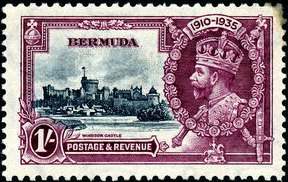
1935. April 3. The Duke of Kent, fourth son of King George V, and his wife, landed at Penno's Wharf, St. George's. They were met by Governor Sir Astley Cubitt. They were on the last stop of a honeymoon tour.
1935. May. In France, construction of the most powerful and largest submarine in the world, the Surcouf, was finally completed, having been started in 1927. She was named after France’s most famous privateer, Robert Surcouf (1773-1827). Deemed a common pirate by the British, Surcouf commanded the four-gun Creole during the 1793 war with Great Britain, capturing four British ships, breaking a blockade, and becoming a French national hero. Obtaining an official letter of marque from the revolutionary government, Surcouf took over the 18-gun Clarisse, from which he captured six ships in the South Atlantic and the Indian Ocean. Switching to the 18-gun Confiance, he captured nine more British merchant ships, including the 38-gun Kent with a crew of nearly 400 men, plus a company of naval riflemen. This action made Surcouf a living legend in France and a public enemy in England, with a posted reward of five million francs for his capture. Named a baron of the empire by Napoleon in 1809, Surcouf lived out his life on the island of Mauritius, where he became a prosperous ship owner and merchant. This French Navy vessel was the first and only cruiser submarine designed specifically for open-ocean surface raiding. Her delay in completion was due to her constant revisions to her design and armament. She was later to have a great deal to do with Bermuda. She was presented as a formidable vessel. She displaced 3,404 tons submerged. She was 350 feet long, with a beam of over 29 feet. Powered by two 3,800-horsepower Sulzer diesel engines on the surface and two 1,700-horsepower electric motors for undersea propulsion, Surcouf had a range of 10,000 nautical miles and carried a crew of 120 men. The most formidable aspect of the vessel was her armament. She mounted two 8-inch guns in a twin turret located forward of the conning tower. Aft of the structure on deck was a watertight hangar containing a Besson/ANF Murceau MB-411 scout seaplane. The seaplane had two functions: to locate potential shipping targets over the horizon, and to spot the fall of shots from the submarine’s guns after she commenced an attack. Surcouf carried 600 rounds of 8-inch ammunition for her two guns, plus a wide optical range finder mounted high enough above the sea to give a seven-mile horizon. The giant submarine also carried a 16-foot-long motorboat and an internal compartment designed to house up to 40 prisoners. Surcouf was equipped with six external torpedo tubes, none of which could be fired when submerged. Sixteen spare torpedoes also were carried.
1935. June 8. Death in Bermuda of Henry Conyers Cox, born November 1,1881.He was a 1904 Bermuda Rhodes Scholar. He was Headmaster of Saltus Grammar School at the time of his death.
1935. The book "The Colonial Period of American History" by C. M. Andrews, in four volumes was published by Yale University Press, New Haven, as a follow-up to his 1924 book. This particular book focused on The Settlements. Bermuda is mentioned many times. The book won the Pulitzer Prize 1935.
1935. After the death of Mr. Samuel Seward Toddings in this year, his son, S. Seward Toddings Jr, took over his father's role at the Mid-Ocean, changing the name of the newspaper to the Mid-Ocean News in 1940.
1935. Wing, 1st Battalion, Sherwood Foresters (Nottinghamshire and Derbyshire Regiment), arrived in Bermuda. They stayed until 1939.
1935. Furness Withy released this poster of its 1935 shipping services to and from Bermuda.
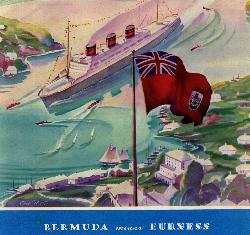
1935. Carveth Wells first visited Bermuda and wrote "Bermuda in Three Colors." 1935. Published in New York by Robert M. McBride. 271pp; 64pp illus from photographs. Had chapters on Bermudian history, train travel, bicycling, carriage trips, a "who's who" of Bermudians, old recipes, &c. 8. 5" x 5. He was an explorer and world traveler as well as an author and radio commentator. One of the most famous lecturers on the "expedition circuit," his fame being eclipsed perhaps by only Richard Halliburton and Lowell Thomas. Wells was also a prolific writer, and wrote a book about the filming of the Cudahay-Massee expedition to the Ruwenzori. He was a Fellow of the Royal Geographical Society and a member of the Circumnavigators, Adventurers and Explorers Clubs.. He was born in 1887. Before he was six he could knit, crochet, sew and make baskets, while his hobby was breeding silk worms and white mice. After receiving his classical education at St. Paul's School, he graduated from London University and for a time practiced engineering. He then went on to travel nearly every corner of the globe as a soldier, explorer, writer, naturalist and railroad builder. He authored Years in the Malay Jungle, In Coldest Africa, Let's Do The Mediterranean, and The Jungle Man and His Animals. He also won a wide following with his radio broadcasts and travel films. In the 1950s, he became a regular visitor to Bermuda with his wife and mina bird.
1936. January. Southlands in Warwick was described as "one of the loveliest places on the colorful island of Bermuda". The woodland estate had "an air of ease and gracious living" and featured in the January edition American society magazine 'Country Life'. Marni Davis Wood wrote of a charming era of days gone by, accompanied by the colorful sketches of Harrie Wood. "The driveway to Southlands, on the south shore of Warwick, is so typically Bermudian that it could hardly be any other place in the world. It is moreover, exactly what the approach to one's house should be — a promise of charming things to come. From the moment that you turn in the great stone gates, you are in a tunnel of shade cast by cedars and the green bay trees on the hillside. At the top of the ridge the drive goes through a huge cut in the limestone, between great walls, green with ferns and mosses, and festooned with swags of the Heavenly-blue morning glories that grow wild and rampant in Bermuda. It goes over the hill and winds down through a perfect carpet of freesias to the house, so amazingly white through the dark of the enormous overhanging cedars." Dr. J. Douglas Morgan's father James, having bought the estate 25 years previously in 1911, apparently once overheard himself being described as "some Canadian with more money than sense", as Southlands was considered a "bedraggled old place". But Ms Wood praises the late Mr. Morgan's imaginative vision and transformation of the estate, saying "every native plant or shrub has been beautifully used". She describes the "beautiful arrangements of the sub-tropical plants" in the quarry gardens, and is delighted at the fresh water interconnecting pools. "In one of the pools there are water hyacinths, umbrella plants, and papyrus from the Nile growing luxuriantly, quite at home in the shade of an overhanging acacia tree laden with yellow flowers. In another, little gold and silver fish dart about among the water lilies, and maidenhair fern grow to giant size along the edge. All the Bermudian traditions have been maintained, the little butteries, the many white roofs, shuttered windows, a long one-story house rambling on and on. From the front terrace, bordered with geraniums, begonias, and red roses, where peacocks strut in vain rivalry with the colors of Bermuda waters, the view is perfectly superb — across rolling meadows where, most surprisingly, cows graze quietly, to a shining white beach and the ocean. In the summer, when the prevailing wind is from the south, the beach is ideal for long swimming parties and the superior picnics that are an integral part of Bermuda life. In what Bermudians are pleased to call winter the hill behind the house protects it from the winds that so often whip the north shore, and the high sides of the quarries shelter the gardens so that the most delicate things grow with amazing fecundity at Southlands. From the whippet and the wire-haired fox terrier who greet you at the terrace of the main house, and the monkey with his white bantam playmates, the peaceful cows, the many, many gardens, and the long rambling house, the little farmer's cottage tucked away behind one of the quarries, to the larger cottage The Periwinkle, with its garden stretching out to the gate like a friendly hand, the entire estate has an air of ease and gracious living which reflects a sensitive guiding hand."
1936. January. Many Bermudians who had invested heavily in fire insurance associations in New York lost their life savings after fires destroyed $30 million worth of property in that city. After the fires many of the associations went bankrupt and the principal ones, the Globe and the Guardian, were unable to repay what they owed. Elderly Bermudians in particular were left destitute.
1936. Bermuda Gas & Utility Co. Ltd was founded and later became the largest distributor of propane gas on the Island, serving about 14,000 residential customers, who mostly use it for their stoves, as well as commercial customers, such as restaurants and hotels, who primarily use it for kitchens and laundry.
1936. Gorham’s Ltd was founded, by A.J. Gorham. It was initially a small lumber business on Hamilton’s Front Street where the Supermart is now (it later became to a supermarket-style operation in Pembroke). A.J. Gorham started in business selling cement and a local lumber yard started selling cement — he decided if they could sell cement, he could sell lumber. The company moved to its current location in 1962, built on a former area of swamp land reclaimed using rubble from the Bermudiana Hotel, which was destroyed by fire in 1958, and began to expand towards the multi-line store it is today. The company was later bought out from various members of the Gorham family by Kitson & Company the same year and began a series of improvements. The firm later developed supply change management based on iPhones and iPads and two years ago won a Bermuda Tech award for best mobile apps on the island.
1936. Two ambitious architects from McGill University, Wilfred Onions and Valmer Bouchard, came to Bermuda to turn their creative visions into living, enduring history. Soon after, they were joined by John McCulloch and spent 20 years realizing that dream. In time, they defined the internationally acclaimed Bermuda design style and instituted a “sense of place” culture across the island.
1936. Lady Astor, MP, the first woman who was both elected and took her seat in the British House of Parliament in London, visited Bermuda and spoke to 700 people, mostly women, at Hamilton's Colonial Opera House, She said: "every enlightened country now realizes that a democratic and free government which does not include women is an absurdity." She was aiming her remarks at the Bermuda Government for again denying Bermuda women the vote, despite the efforts of the Bermuda Women's Suffrage Society (BWSS) which had arranged the gathering.
1936. April 24. A. W. "Bill" Forbes pioneered Radio Direction finding for commercial aircraft in Bermuda. This gentleman (who died when he was nearly 97 on August 31, 1996) arrived in Bermuda by ship from Britain. He led a team of specialists from Cable & Wireless who began to pioneer in Bermuda for the Imperial Government a superior system and station for Air to Ground radio-direction finding for ships. In 1937, he led the team in both Air to Ground and Ship-to-Shore point-to point radio direction finding and telegraph services for aircraft. When, on May 6, 1936 the German Zeppelin Transport Company began its Hindenburg air ship from Berlin, Bermuda's Cable and Wireless station, particularly including Mr. Forbes, had day and night activity. Via radio telephone, its 36 staff guided aircraft, dirigibles and ships across the Atlantic. This was done with bearings, messages, weather conditions and more. They worked shifts around the clock, in a constant atmosphere of clicking machines, hum and distinctive odor of electrical equipment, signal buzzes and voices calling from the air and sea via loudspeakers. They handled often chronic daily emergencies at sea or in the air near or far beyond Bermuda. They had to breakfast, lunch or dine on eggs, bacon and toast cooked up on a hot plate at work for many days at a time, with makeshift meals interrupted by emergencies.
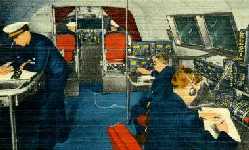
The late A. W. "Bill" Forbes, wireless engineer. Photo cc his son Keith A. Forbes
1936. June. An article, shown below, that precluded the building of Bermuda’s first passenger-based airport worked to get potential tourists excited about the prospect of visiting the island. The article said, “Pan-American and Imperial Airways may soon make it a plane trip of several hours from Florida, as plans are being made for an island airport and regular passenger service from Miami. Bermuda has a quiet and bewitching beauty of its own. Here one finds no mountain peaks or tropical jungles, but a climate that is almost unrivalled, ranging from about 55 to 85 degrees; some of the finest bathing beaches in the world, with pink and white sand that is like face powder to the touch; turquoise skies, fields of stately lilies and a profusion of vivid sub-tropical vegetation.” The island’s relaxed lifestyle and lack of comparative commercial infrastructure at the time were also raised as positive selling points, with the potential for rest and relaxation touted heavily to those who were used to a more hectic existence. “The ban on motor-driven vehicles and the absence of factories on the island have made it an oasis of calm to thousands of fugitives from the strain and clamor of big cities. Unlike many resorts, however, one can find in Bermuda almost all of the pleasures of an urban existence with none of the usual annoyances.” Shopping opportunities are always a big hit with tourists, and that was similarly the case in 1936, with the article expounding upon the goods and services available in Hamilton. “On Front Street, facing the anchorages of the big ships in Hamilton harbor, and on Queen and Reid Streets, are many fine shops catering to tourists. One can buy the best English sweaters, sports clothes, and material by the yard at H .A. and E. Smith’s or Trimingham’s for less than they would cost in London, and about half the price charged in New York.”

July 30. Somers Day became a public holiday by an act of Parliament along with Boxing Day, Victoria Day, the King’s Birthday and Armistice Day.
1936. 1-16 August. The Bermuda Olympic Association, through the keenness of local swimmers and the initiative of men such as John King, Chummy Hayward and Jim Murray, went to Berlin. A move to obtain recognition from the International Olympic Committee had commenced in 1934. It had involved a great deal of work and correspondence. An invitation to take part in the 11th Olympiad in Berlin was received shortly thereafter. "Bermuda’s athletes who will journey to Berlin for the XIth Olympiad should have the wholehearted support of all true lovers of Bermuda" — said the Hon Howard Trott, MCP in this year. It was the first-ever visit by a Bermuda team to the Olympics. The Bermuda Team, which would later include Leonard Spence of British Guiana, sailed to Europe in considerable style, aboard the SS Europa, presumably out of New York bound for Bremen. Built in the late 1920s, Europa made her maiden voyage on 19 March 1930 to New York, winning the Blue Riband for the fastest Atlantic crossing for a passenger liner from her sister ship, SS Bremen, both of the company, Norddeutsche Lloyd. On arrival in “The Fatherland”, the all-male contingent took a train into the hinterland, arriving at the Potsdamer Bahnhof in Berlin and there duly photographed in front of the train station with an immense Bermuda flag. The flag was of special interest as it was not the normal Bermuda standard, but that of the Governor, which has the Bermuda Crest in a circle, surrounded by a garland of oak leaves, in the centre of Britain’s Union flag. While no medals were won, the Bermudians acquitted themselves well in their white uniforms and pith helmets and many lifelong friendships were formed. The team included Percy Belvin, John Young II, Edmund Cooper, organizer James Murray, manager Whitfield F (Chummy) Hayward, Forster Cooper and coach William Brooks. John Hinson Young II, late of Sandys Parish, husband to Nelga Spurling and father to Penne and Jay, became best known in later years for his expertise at croquet and the creation of the Lantana Cottage Colony near Somerset Bridge. These Olympic Games - see http://www.olympic.org/berlin-1936-summer-olympics - were the first to be broadcast on television.

1936 Olympic Games in Berlin, first Olympics attended by a Bermuda team
1936. September 1. German aircraft in Bermuda. Noted and photographed by previously-mentioned Archibald W. "Bill" Forbes
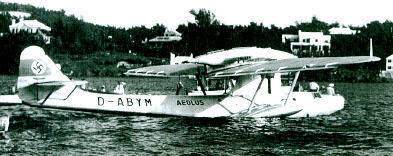
 Germany's
efforts in the North Atlantic attracted huge international interest, with much
attention focused on Bermuda. The German program was administered by Freiherr von Buddenbrock who was Atlantic Air
Transport Director of Deutsche Luft Hansa. He went to the USA on the first
flight and returned on the last. When
Luft Hansa - Lufthansa - founded in 1926 began in services from Germany to
Brazil in 1936, it used five models of the Dornier Do 18 on its service from
Berlin to Lisbon to the Azores to Bermuda to New York, USA, periodically
when weather conditions required, also from New York to Sydney, Nova Scotia,
from there to the Azores and Lisbon. They were improvements on the Dornier Wal
(Whale) flying boats. The only snag was that they could not use Ireland - the
Irish had barred them from using Galway Bay, the only suitable place in Ireland.
The crews of the two flying boats Aeolus (see left photo, in
Bermuda) and Zephyr that visited Bermuda included Flugkapitans
Blankenburg, von Engel, Graf Schack, Mayr, von Captain Baron F. W. Buddenbrock
and Direktor Freiherr von Gablenz; wireless operators Stein and Ehlberg; flying
engineer Gruschwitz and engineer Eger. The flying boats had an astonishingly
good safely record. Except for a leaking radiator on the first departure there
was no trouble of any sort and no replacements in either the flying boats or
their Junkers Jumo heavy-oil motors. Lufthansa stationed the depot (catapult)
ship Schwabenland (a converted cargo ship) west of the Azores. The most
famous of the aircraft of the Ha 139 was the Nordwind -
shown here, with photograph by Mr. Bill Forbes, see above - in Deutsche
Luft Hansa livery of about 1938. On September 11, 1936 the aircraft began
arriving in Bermuda, complete with their Nazi insignia. The first arrival
was Captain Baron F. W. von Buddenbrock. There were four more visits to Bermuda
by various German float planes including several by the Ha 139 made by Boem und
Voss of both aircraft and battleship fame. They flew into Bermuda to get
more fuel. They landed in Hamilton Harbor. Engines were four 600 hp
Junkers Jumo 205C 12-cylinder diesels. Span was 88 feet 7 inches (27m). Length
was 63 feet 11.75 inches (19.5 meters). Wing area was 1,259.38 square feet
(117 square meters). Catapult take off weights were 38,581 pounds (17,500
kilograms). Maximum speed was 196 miles per hour (315 kilometers per hour) at
sea level. Operational ceiling was 11,480 feet (3,500 meters). Maximum
range was 3,395 miles (5,300 kilometers). They continued until the war ( 1939 to
1945). Unlike the flying boats it serviced which were trouble-free, the
crew of the Shabenland had an arduous time. No other catapult ship could be
spared for the German North Atlantic experiments so the Schwabenland had to
steam across the Atlantic after each double-launch in order to start the flying
boats on their next trips. In each case, the aircraft landed alongside and were
then winched up or down for fuel or repair, or caterpult take-off from the ship,
as the larger photos below show:
Germany's
efforts in the North Atlantic attracted huge international interest, with much
attention focused on Bermuda. The German program was administered by Freiherr von Buddenbrock who was Atlantic Air
Transport Director of Deutsche Luft Hansa. He went to the USA on the first
flight and returned on the last. When
Luft Hansa - Lufthansa - founded in 1926 began in services from Germany to
Brazil in 1936, it used five models of the Dornier Do 18 on its service from
Berlin to Lisbon to the Azores to Bermuda to New York, USA, periodically
when weather conditions required, also from New York to Sydney, Nova Scotia,
from there to the Azores and Lisbon. They were improvements on the Dornier Wal
(Whale) flying boats. The only snag was that they could not use Ireland - the
Irish had barred them from using Galway Bay, the only suitable place in Ireland.
The crews of the two flying boats Aeolus (see left photo, in
Bermuda) and Zephyr that visited Bermuda included Flugkapitans
Blankenburg, von Engel, Graf Schack, Mayr, von Captain Baron F. W. Buddenbrock
and Direktor Freiherr von Gablenz; wireless operators Stein and Ehlberg; flying
engineer Gruschwitz and engineer Eger. The flying boats had an astonishingly
good safely record. Except for a leaking radiator on the first departure there
was no trouble of any sort and no replacements in either the flying boats or
their Junkers Jumo heavy-oil motors. Lufthansa stationed the depot (catapult)
ship Schwabenland (a converted cargo ship) west of the Azores. The most
famous of the aircraft of the Ha 139 was the Nordwind -
shown here, with photograph by Mr. Bill Forbes, see above - in Deutsche
Luft Hansa livery of about 1938. On September 11, 1936 the aircraft began
arriving in Bermuda, complete with their Nazi insignia. The first arrival
was Captain Baron F. W. von Buddenbrock. There were four more visits to Bermuda
by various German float planes including several by the Ha 139 made by Boem und
Voss of both aircraft and battleship fame. They flew into Bermuda to get
more fuel. They landed in Hamilton Harbor. Engines were four 600 hp
Junkers Jumo 205C 12-cylinder diesels. Span was 88 feet 7 inches (27m). Length
was 63 feet 11.75 inches (19.5 meters). Wing area was 1,259.38 square feet
(117 square meters). Catapult take off weights were 38,581 pounds (17,500
kilograms). Maximum speed was 196 miles per hour (315 kilometers per hour) at
sea level. Operational ceiling was 11,480 feet (3,500 meters). Maximum
range was 3,395 miles (5,300 kilometers). They continued until the war ( 1939 to
1945). Unlike the flying boats it serviced which were trouble-free, the
crew of the Shabenland had an arduous time. No other catapult ship could be
spared for the German North Atlantic experiments so the Schwabenland had to
steam across the Atlantic after each double-launch in order to start the flying
boats on their next trips. In each case, the aircraft landed alongside and were
then winched up or down for fuel or repair, or caterpult take-off from the ship,
as the larger photos below show:
Lufthansa in Bermuda, 1936. All five above original photos were taken and copyrighted by the late A W. "Bill" Forbes in Bermuda and used exclusively here on Bermuda Online.org with his permission.
1936. French aircraft in Bermuda on survey flights from Paris to New York. Air France - Transatlantique's - later, Air France - Latecoere 521 F-NORD "Lieutenant de Vaisseau Paris" made 2 visits to Bermuda when flying from Paris on surveys. Here, she is seen at the brand-new Bermuda airport on Darrell's Island. Air France omits any mention of this in its own archives.
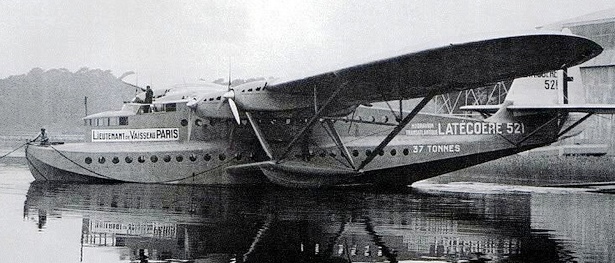
Photo courtesy Latecoere archives 1995
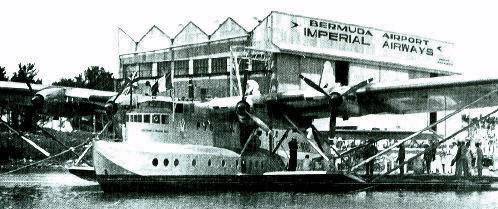
1936. October 1.The name of the Bermuda-based Halifax and Bermudas Cable Company Ltd was changed to West India and Panama Telegraph Company Ltd.
1936. October 25. The Spanish liner Cristobal Colon ploughed into the reefs fringing the island a few miles east of North Rock. The Cristobal Colon was built for Transatlantica Spanish Line by Soc Espanol de Construct Naval at El Ferrol in 1923. She was 499.4 feet long, 61 feet abeam and displaced 10,833 tons. She was one of the most luxurious cruise ships of the time. Substantial looting occured over a long period. A civil war was then raging in Spain and the Cristobal Colon departed for Cardiff in Wales, where she took on fuel for a transatlantic voyage, being cleared for Mexico with no passengers, but a curiously large crew of 160. In the last hour of 25 October, while steaming at her full 15 knots, the ship ploughed into the reef at Bermuda, some of the ‘crew’ later claiming that they were headed to Cuba to pick up arms and munitions for Loyalists forces in Spain. At Bermuda on the North America and West Indies Station of the Royal Navy at the time was the light cruiser of the Danae Class, HMS Dragon. She was called into service in an attempt to salvage the Cristobal Colon. Several attempts were made to pull the vessel off the reefs, but she was stuck solid and that and other attempts at salvage were given up. The crew remained at Bermuda for three months, until passage could be obtained for them to return home to Spain, where the victorious Fascist side in the Spanish civil war summarily executed some of them.
1936. November 1. The newly-renamed West India and Panama Telegraph Company Ltd. moved from 6 Front Street, Hamilton, to a new site in Hamilton.
1936. November 20. Announcement in the Royal Gazette of the pending establishment in Bermuda of the Club (later, the Caledonian Society of Bermuda), by expatriate Scots working here, including James Murray at the Royal Gazette.
1936. November 29, St Andrew's Eve. Formal opening, at the Scottish-founded and named Inverurie Hotel, Paget Parish, of the Caledonian Club of Bermuda (later, the Caledonian Society of Bermuda). Those present were all Scots from Britain by birth or parentage and their spouses. They discussed the club's aims and objectives which included the promotion of friendliness among cots of Bermuda and to others; relief to members in times of adversity; preservation and promotion of Scottish history, culture, music and literature; and community caring by raising funds for local charities including their own.
1936. December 4. The Bermuda Post Office issued a First Day Postage Stamp Commemorative Paquebot Cover. It marked the 5th anniversary in December of the sailing of the Furness Withy Q. T. E V cruise ship "Monarch of Bermuda" so-named in honor of King Edward VIII who reigned briefly and was posted in the high seas when the ship left New York for Bermuda. It also showed an American postage date. The Admiral Beatty Chapter 46 of Hamilton was an organization formed to honor the famous British Admiral who among other things had accepted the surrender of the German fleet in 1918 at the end of World War 1, or Great War. He died earlier in 1936.
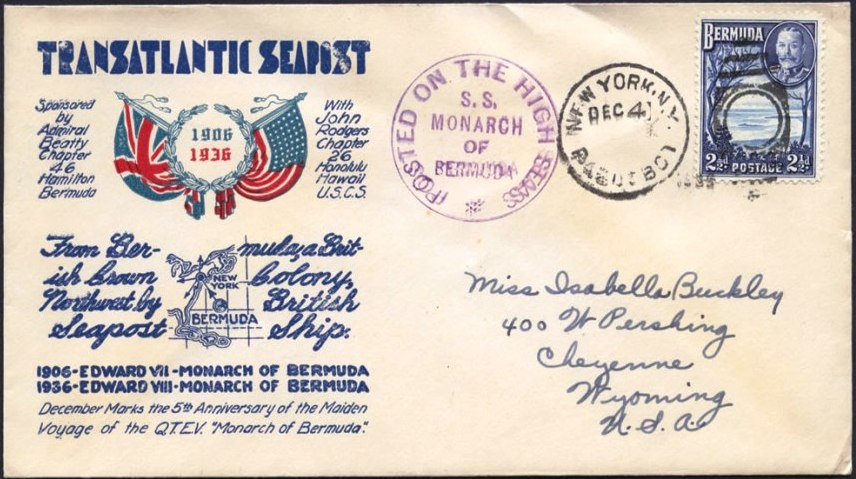
1936. In December, King George VI took over the Crown from his brother Edward VIII, who abdicated when told his American wife-to-be would never be recognized as Queen because she was divorced.
1936. Wilfred Onions and Valmer Bouchard established a company known as Onions Bouchard, Architects. Traditional Bermuda architecture was the mainstay of the company's home designs, as it helped preserve the Island landscape of traditional cottages, with moon gates, Flemish gables, fishtail chimney caps, lime-washed roofs and 'eyebrows' over doorways. John McCulloch later joined the company, adding to its name.
1937. January 5. Bill Forbes Ship to-Shore radio direction finding initiatives supplement Air to Ground. On that day, Bill Forbes boarded the Royal Navy warship HMS Dragon at HM Dockyard in Bermuda. She left port next day to circumnavigate Bermuda completely, for a very special purpose. As a radio direction finding engineer, Forbes's task for the Imperial Government was to calculate and log radio direction finding calibrations by sea for ships and aircraft approaching Bermuda, having already done so by land radio direction finding. This very successful special project removed from Bermuda all remaining navigational obstacles for ships and flying boats at sea to find Bermuda and safely navigate its dangerous and extensive ring of outer coral reefs. From February 20, Forbes and his team followed this up by beginning and finishing their design, at Bermuda's highest point, The Peak in Smith's Parish, of what became the Eagle's Nest - the world's first Adcock short wave radio direction finding station, specifically for pilots and navigators of Imperial Airways and Pan American World Airways flying boats and other aircraft to home in to the signal. It was another 'first' for Bermuda in aviation support technology. These initiatives established the navigational systems that were used in all weather conditions to safely guide ships and flying boats right into Bermuda. They made Bermuda attractive to Imperial Airways and Pan American. They put Bermuda firmly for the first time into mainstream winter and summer tourism for visitors by air from around the globe.
1937. January 5. 19 year old Bermudian Evelyn Stovell made newspaper headlines when she forced an apology from the Bishop of Bermuda. It came about after the 1936 shock of the abdication of King Edward VIII who had been told to abdicate if he went ahead and married American divorcee Wallis Simpson. He did so and became the Duke of Windsor. Ms Stovell was an employee at the newspaper’s office in Hamilton, where she had pictures on the wall of the new Duke and Duchess of Windsor. On that date, she found them torn down. The culprit turned out to be Bermuda’s bishop, the Right Rev Arthur Heber Browne, who had found the pictures “disgraceful” and destroyed them. The Bishop had to apologize for “yielding to a sudden impulse, which I ought to have known how to control.”
1937. March 16. Sinking off Bermuda of the Norwegian steamer Iristo, due to her captain's poor judgment. The Iristo ran into the same trap as the Spanish liner, Cristobal Colon. Unfamiliar with Bermuda reefs, her captain was surprised by the sight of the wreck of the Cristobal Colon. At the time, the Cristobal Colon still sat high in the water, four and a half months after she ran aground. Unaware that the Spanish liner was supported by a barely submerged reef, the captain ordered his ship to turn away. The course change caused the Iristo to crash into a submerged reef. While under tow, the Iristo sank one mile east of the reef's northeast breakers. Captain Stephensen was brought before the Marine Board of Inquiry and cited for the wreck of the Iristo. Originally the Lake Jessup, the 250 foot freighter was built by an American company in 1918, in Lorain, Ohio. She was bound for Bermuda then Demerara, British Guiana, carrying a mostly Bermuda cargo of cattle feed, hay, flour, 200 barrels of gasoline, a fire engine and steamroller. Her bow and stern sections, heavily overgrown with coral, sit opposite one another. The bow is within 18 feet of the surface. Divers can see the remains of both the fire engine and steam roller originally bound for the island, as well as one of the ship's spare propellers (with its blades protruding up from the wreckage). Rising from the middle of the skeletal remains are the Iristo's once massive steam engine, with two huge boilers, the top portions of which rests just 23 feet from the surface. They are heavily encrusted with large helmet sized colonies of Brain and Star Corals. Also, the ship's two-foot diameter propeller shaft now sits exposed to view.
1937. May 6. Hindenburg airship disaster over Lakehurst, New Jersey. The German dirigible was promoted as the future of trans-Atlantic flight, but instead it became the notorious poster child of air disasters. As the hydrogen-filled blimp was landing in Lakehurst, it suddenly burst into flames and crashed in front of shocked bystanders, killing 35 of the 100 passengers and crew on board—and putting an end to the short-lived air travel program. One result of this was the decision of Imperial Airways and Pan American World Airways to put forward their plans to fly a shorter distance over the Atlantic, specifically to Bermuda.
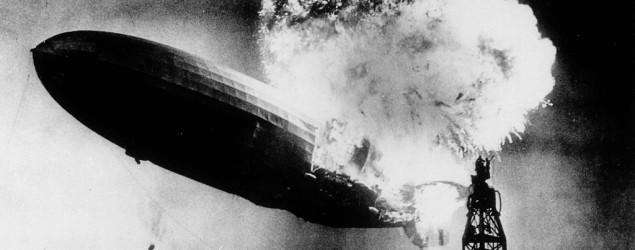
Hindenburg air disaster
1937. May 12. Bermudians and others watched in awe at the parade ground of Prospect Garrison, Devonshire as the British Army's Sherwood Foresters paraded to salute the Coronation of King George VI and Queen Elizabeth as King and Queen of the United Kingdom, Dominions and Colonies of the British Empire and Emperor and Empress of India. King George ascended the throne on the abdication of his brother, Edward VIII. Edward's coronation had been planned for 12 May 1937 and it was decided to continue with his brother and sister-in-law's coronation on the same date. That evening, Bermuda's Inverurie Hotel offered a special Coronation celebratory dinner to its guests. (See third photo in the grouping of three below). The menu even had a gold tassel not shown).
Photos below courtesy British Army MOD London
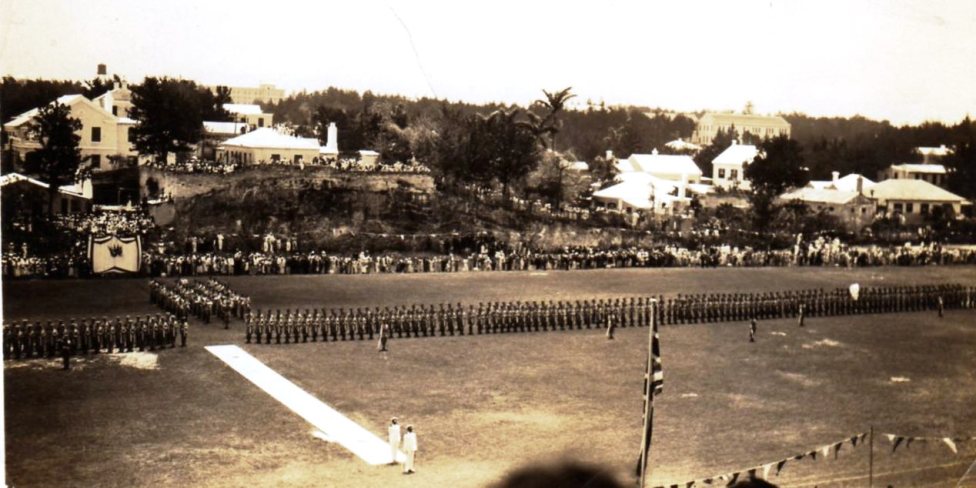
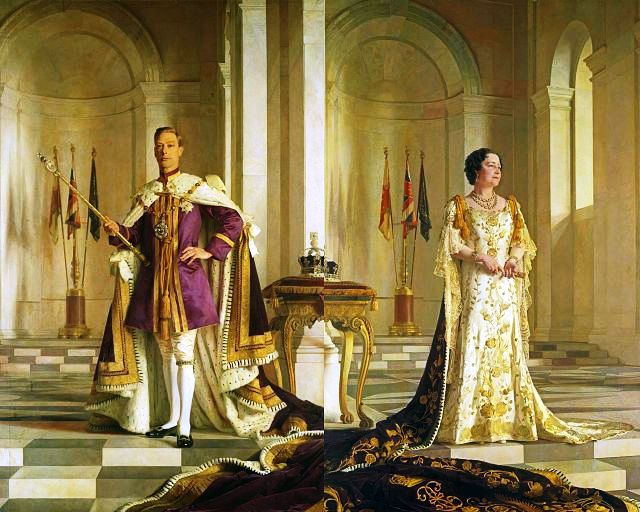
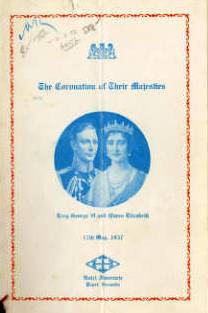
1937. St. David's Island was connected to the rest of Bermuda by the Severn Bridge.
1937. Oliver Caisey, Sr. (with his race horse Fanny) became the first black jockey at the Shelly Bay race track. His groom was Claude (Poker) Furbert.
Shelley Bay
race track, as it was then (now long gone)
1937. The most expensive building ever built in Bermuda up to this time, the (in US$) million-dollar terminal building for flying boats, was completed at Darrell’s Island in the Great Sound. It was opened just in time for the first commercial passenger flight arriving on 18th June.
1937. May 17. First passenger flights to/ from New York by Imperial Airways (now British Airways) and Pan American World Airways.
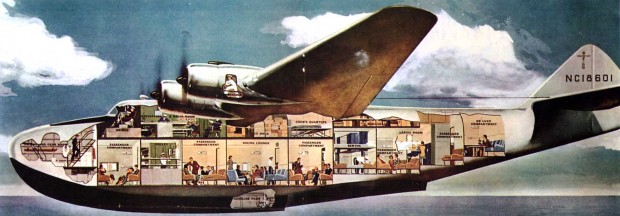
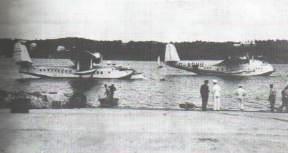
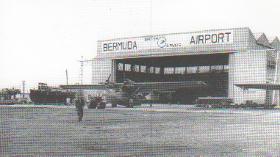
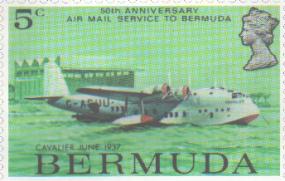
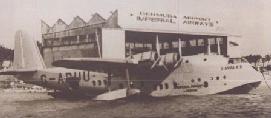
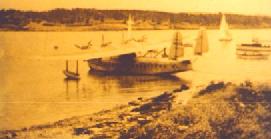
Thus was the scene set for Imperial Airways (see http://www.britishairways.com/travel/explore-our-past/) and Pan American World Airways to establish their flying boat services between New York and Bermuda. Bill Forbes and his team readied their radio direction finding equipment, working through the night. On Darrell's Island, a team worked to re-assemble and then check the Imperial Airways' Short Empire C-class RMA Cavalier flying-boat G-ADUU, shipped in parts from England, under the supervision of Imperial's Chief Engineer Len Turnhill, working with Imperial Airways and Bermudian staff. The next day, the flying boat started engines, cruised on pontoons through Hamilton Harbor and soared into mid Atlantic airspace for its first Western Hemisphere flight, to test and calibrate its on board radio equipment and match its signals with those transmitted by Forbes and his team on the Adcock short wave radio direction finding equipment. Then came May 25, 1937. It was a proud day for Bermuda. The Imperial Airways' Short Empire C class flying boat RMA Cavalier took off from the unofficially opened and not quite finished Darrell's Island Marine Air Terminal, for New York. She was commanded by Capt. Neville Cumming, with co-pilot First Officer Neil Richardson, radio engineer Patrick Chapman, and steward Robert Spence. At the same time, the Pan American Airways' Sikorsky S-42, NC 16735, by then renamed by Mrs. Trippe as Bermuda Clipper, also flew from Port Washington, NY to Bermuda. She did a successful reciprocal survey of the route. (Especially noteworthy and quote worthy is the fact that this was two years before Pan Am started its New York to London service.) Bermuda Clipper was commanded by Capt. R. O. D. Sullivan. Passengers included Mr. John Barritt of John Barritt & Son Mineral Water Company; Major Neville, a staff officer at Admiralty House; Mr. E. P. T. Tucker, General Manager of John S. Darrell & Co. Also aboard were Mr. E. R. Williams of J. E. Lightbourn & Co. ( later, Mayor of Hamilton); Mr. H. B. L. Wilkinson, of Bailey's Bay; Miss Minna Smith, a nurse at King Edward VII Memorial Hospital; Mr. Terry Mowbray, Sports Director of the Bermuda Trade Development Board. Mr. & Mrs. Richard Scott of Boston were returning from their honeymoon in Bermuda; and Mr. Eugene Kelly, Mrs. Alice James and Mrs. John Fullarton, all of New York. Later, in support of the two airlines and expecting more communications traffic, the West India and Panama Telegraph Company Ltd - in conjunction with Britain's Imperial & International Communications - installed an internal teleprinter system between the airlines' offices and the Air to Ground station.
1937. June 16. Imperial Airways (later British Airways) and Pan American World Airways together unofficially began the first scheduled air service to Bermuda from Port Washington, New York, in 5 hours.
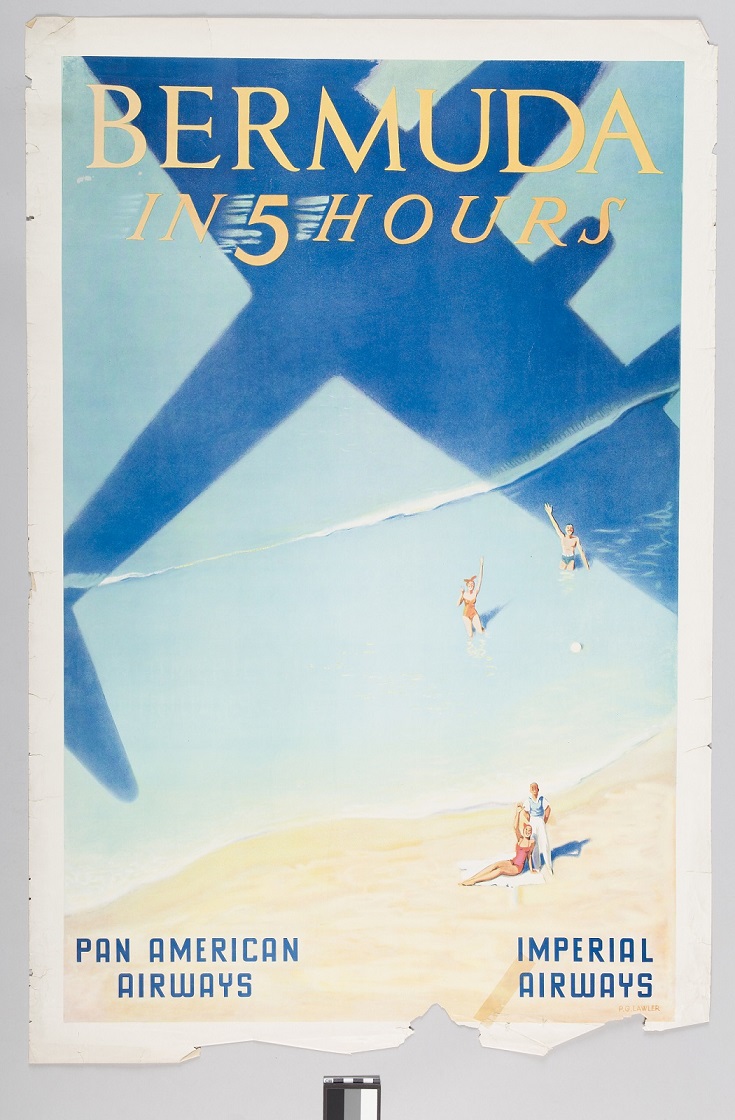
Imperial Airways and Pan American World Airways fly to Bermuda from New York in 5 hours poster
1937. By Act of Incorporation, the Bermuda Historical Monuments Trust (BHMT) was officially created, formed in 1936 and the forerunner of the Bermuda National Trust. It was a conservation organization to acquire and restore a number of important historical houses, nature reserves and records.Its mission was to safeguard Bermuda's heritage through ownership of historically important houses and open space. It was led initially by Dr Henry Wilkinson and had a committee of seven. It received a small government grant.
1937. The Bermuda Historical Society (BHS) purchased the wooden sea chest belonging to Admiral Sir George Somers, the Father of Bermuda, of early 17th century Italian origin. The chest is thought to be Venetian and has a scene from Greek mythology showing Artemis, Goddess of the Hunt, surprised by Acteon, a hunter, while bathing. To punish him she turns him into a stag, whereupon his own dogs attack and kill him, no longer recognizing him as their master. The chest was sold to the BHS by the Bellamy family of Plymouth, England, in 1937. The Bellamy family, direct descendants of the Admiral, also sold Sir George's lode stone. This was used to magnetize his compass needles during his earlier seafaring voyages. The lode stone is thought to date back to 1600. Egg-shaped and banded by strips of iron, it is mounted on an oak plinth with a plaque which states 'Lodestone, Sir George Summer, obit 1610'.
1937. King Edward VII Gold Cup, began in Bermuda when New Yorker Sherman Hoyt returned to its British tradition the prestigious King Edward VII Royal Trophy he won in 1911. He presented it to the Royal Bermuda Yacht Club. Now the Wimbledon of Match Racing, the oldest match race event in International One Design sloops.
1937. The Castle Island Case, by F. Van Wyck Mason, was published in New York, Reynal and Hitchcock, 185 pages. Illustrated. Author was then a Bermuda resident.
1937. August. Air/Ground and point-to-point telegraph services were opened by The West India and Panama Telegraph Company Ltd for aircraft flying between Port Washington, Wis, New York and Bermuda.
1937. August 29. The West India and Panama Telegraph Company Ltd opened a new high frequency direction-finding station on Town Hill, Smith's Parish, to supply long-range bearings to aircraft and ships.
1937. September 10. The Sandys Boat Club was formed, by a group of men who from 1934 regularly raced their boats among themselves in Mangrove Bay. They formed the club as an organization to encourage and promote sailing, boating and social events. Founding families included those by the name of Jack, Pitman, Parker, Herkes and Sheen.
1937. October. Jamaican Marcus Garvey, leader of the Universal Negro Improvement Association, arrived and was denied permission to come ashore. Garvey—deemed a dangerous political tourist—had no option but to deliver his message of Negro self-determination from the railing of his ship.
1937. November. Death at sea of former British Prime Minister Ramsay MacDonald, born in Scotland (12 October 1866 – 9 November 1937). He was then a distinguished passenger on board the popular liner Reina del Pacifico which called at Bermuda often. She was a 17,702 GRT passenger ship operated by the Pacific Steam Navigation Company. Built by Harland & Wolff at Belfast, she was launched on 23 September 1930, and was the largest and fastest motor liner of her time, sailing from Liverpool to the Caribbean, Bermuda, Panama Canal and South America. Macdonald, two weeks after leaving office as Prime Minister, had been hoping to enjoy a cruise to South America, but never got there. He died aboard the vessel. As Bermuda was a route stop, the ship brought his body to Bermuda. Given his stature in life, Bermuda gave him a singular salute in death, an official funeral procession befitting a former British Prime Minister. His remains were received with full military and civilian honours and a ceremonial guard of honor from the Sherwood Foresters of the British Army then stationed in Bermuda, plus hundreds of other British and local military forces. His body lay in state at the Anglican Cathedral overnight in Hamilton. The next day, during a solemn procession first on Front Street then on Church Street which attracted more than 20,000 spectators - the largest crowd ever to converge in the city, British Army, Royal Navy and Royal Marine bearers, some brought to Bermuda especially for the occasion, carried MacDonald's flag-draped coffin to the Royal Naval Dockyard Bermuda paddle steamer tug Sandboy which loaded it onto HMS Apollo, waiting in the Great Sound to receive it for transport to England. The naval vessel then steamed off to England. In 1933 and 1934 MacDonald's health declined, and he became an increasingly ineffective leader as the international situation grew more threatening. His pacifism, which had been widely admired in the 1920s, led Winston Churchill and others to accuse him of failure to stand up to the threat of Adolf Hitler. In May 1935 he was forced to resign as Prime Minister, taking the largely honorary post of Lord President vacated by Baldwin, who returned to power. At the election later in the year MacDonald was defeated at Seaham by Emanuel Shinwell. Shortly after he was elected at a by-election in January 1936 for the Combined Scottish Universities seat, but his physical and mental health collapsed in 1936. A sea voyage was recommended to restore his health, but it was in vain. (During the Second World War the Reina del Pacifico was requisitioned for service as a troopship, and also took part in the landings in North Africa, Sicily and Normandy)

Ramsay MacDonald's coffin coming ashore from the Royal Navy's paddle steamer tug
Royal Marines outside the Cathedral for the funeral
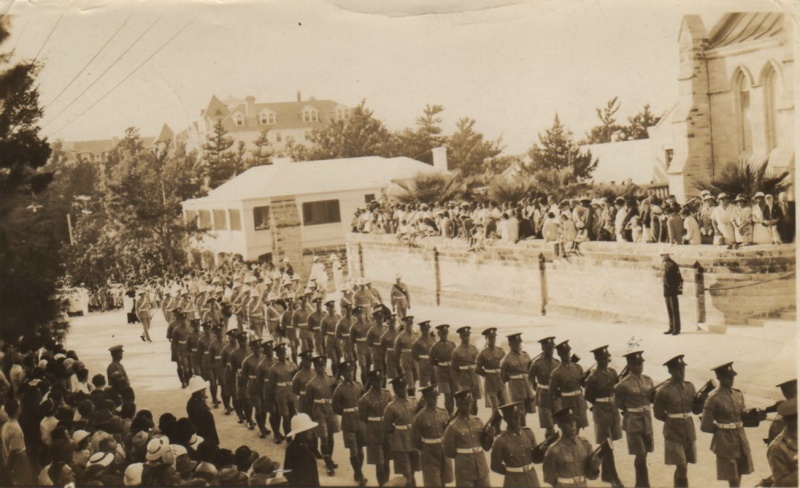
Sherwood Foresters and others at the funeral procession, in their Army Bermuda Shorts and long socks
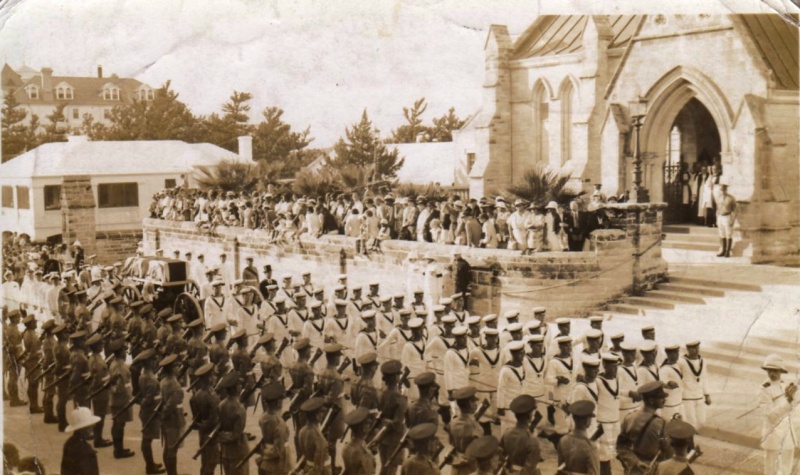
Royal Navy march-past with coffin at Ramsay MacDonald's Bermuda funeral
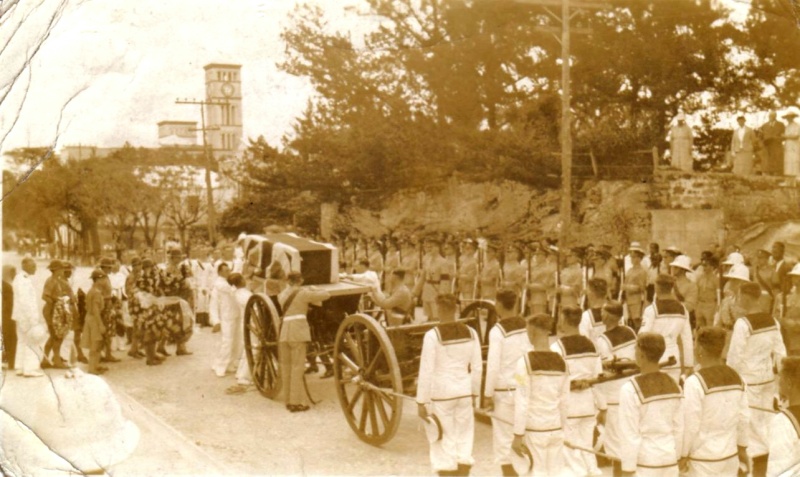
Soldiers and sailors salute the coffin at Ramsay MacDonald's Bermuda funeral
Pictures 1-5 above kindly supplied by Trevor Smallman, son of one of the British Army's Sherwood Foresters based in Bermuda. His father was present at the funeral.
1938. Imperial Airways (later British Airways) and Pan American World Airways together officially began the first flying boat and aircraft service between Long Island and Bermuda.1938. April 1. In Bermuda, the West Indies & Panama Telegraph Company Ltd changed its name to Cable & Wireless (WI) Ltd.
1938. The elegant and important Front Street building in Hamilton, completed in 1841, was remodeled as the Colonial Secretariat, (and after 1968 became the office of the Premier of Bermuda, heading the Bermuda Government. It also houses the Senate of Bermuda - which meets here every Wednesday in the 8 months or so the House of Assembly is in session at Sessions House)
1938. The Ireland Island Cooperative Society was formally established, as an affiliate of the Manchester, England group with which it had enjoyed dealings for many years.
1938. The law firm operated by Major Reginald Appleby in Hamilton since 1898 became Appleby & Spurling when Major Appleby was joined by partner Dudley Spurling.
1938. Women of Bermuda gained the right to vote, if they were eligible.
1938. Richard (later, Sir Richard) Gorham of Bermuda, then 18 years old, joined the Bermuda Volunteers (BVE) with a group of friends.
1938. July. Shirley Temple, idol of millions of movie fans, arrived in Bermuda in July to spend a vacation at the Castle Harbour Hotel. Occupying a suit on the “Queen of Bermuda”, the nine year old actress sat at the table of Staff-Captain Stanley Burns, who during the voyage south gave an ice-cream party for Shirley and several other youngsters on board. A fellow passenger on board was Mr. Vincent Astor, who paid a call on the diminutive movie star and promised to take her out fishing in Bermuda. One of Shirley’s Bermudian admirers, nine-year-old David Wadson, telephoned her at his earliest opportunity. Not being able to reach her, he left a message asking her to call him. When Shirley called David he asked her to a party at his house, but Shirley’s mother regretfully declined. However, young David was asked to one of Shirley’s parties. Soon after her arrival, she procured an English bicycle and also tried her hand at driving a horse and buggy. The photograph below shows Shirley letting Dobbin the horse smell a gerbera but the horse ate it instead. Accompanying the brilliant young star were her mother and father, a representative of 20th Century Fox Films, two armed bodyguards, a nurse and a valet.
1938. August 29. Time Magazine USA reported: "Last year the coral-pink prettiness of the Bermuda Islands attracted 79,856 visitors. Of these, well over 90% were Americans, but only 1,088 tourists sailed there on U. S. ships. Early this year, in an attempt to divert U. S. tourist dollars into U. S. pockets, Eastern Steamship Lines decided to run the steamer Acadia (cruise capacity 400) on a weekly schedule to Bermuda, competing chiefly with the British-owned Furness Bermuda Line. At busy Hamilton, island capital and chief tourist port, Competitor Furness and Canadian National Railways occupy all four berths, which meant that Eastern would have had to anchor in the harbor and ferry its passengers ashore. Best alternative was to use the harbor at sleepy St. George, where the piers are owned by the St. George Corporation. Hitch there was that there was only one hotel, the St. George, which is so regularly patronized that it never needs to advertise. Obvious solution lay in the ship-hotel idea, used successfully for years by cruise ships in Bermuda, but not by regularly scheduled steamers. Last March, to the alluring slogan "Your Ship Is Your Hotel," the Acadia began sailing into St. George, tying up, and keeping house for its passengers. For small-budget vacationists this was just the ticket, and Eastern's idea clicked profitably. Island innkeepers, as well as Furness Bermuda, which controls three hotels, were alarmed. They could easily imagine Bermuda harbors dotted with ship-hotels, the inns covered with cobwebs. Last June they had a bill introduced in Bermuda's Legislature barring ship-hotels from St. George and Hamilton harbors. But when the Governor Lieut.-General Sir Reginald J. T. Hildyard, opening Parliament to consider the legislation, mentioned Eastern as the chief offender, the U. S. State Department protested such direct aim at U. S. shipping, and the bill died. In July, Furness Line boats adopted the ship-hotel plan themselves, right in Hamilton harbor. This time hotels ashore really felt the pinch. At a session of the Legislature, a new bill was offered. It mentioned no U. S. shipping line, carefully exempted "transit passenger ships" (cruise ships), and, as a loophole in case of protests* placed a power of exemption in the hands of the Bermuda Trade Development Board. Last week in Bermuda's Legislature, over protests from St. George merchants, this bill became a law, subject to approval of the British Colonial Office. Same day the law was passed, Furness Bermuda suavely announced abandonment of its expedient ship-hotel policy. The US Sate Department did not protest.
1938. Pan American World Airways advertised its services to Bermuda in this way:
1939. January 14. Construction began in Bermuda of the magnificent, 14-acre Grape Bay, Paget, property known as Chelston, for California oil baron with the unusual name of Carbon Petroleum Dubbs (born June 24,1881, died August 21, 1962 in Santa Barbara, CA, USA). It took two years to be completed.
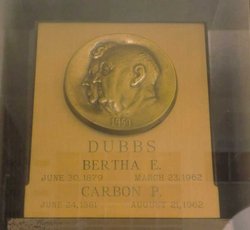
1939. March. A special census was held in Bermuda, two years ahead of schedule. It followed proposals in January of that year to expand Bermuda's local defence forces.
1939. April 4. The Brewster Bermuda Model-340 or Buccaneer aircraft as it was known in the USA, made its first appearance as a prototype, ordered by the US Navy. It has the dubious distinction of being one of the least successful US combat aircraft put into production during the Second World War. The mid-wing, inward retracting undercarriage and internal weapon bay features were all very similar to the previous Brewster product for the US Navy. (The aircraft made its first flight on 17 June 1941. Desperate for modern aircraft designs, the British Purchasing Commission then ordered 750 aircraft of the type, to be known as Bermudas. But mediocre performance quickly relegated the aircraft type to only training duties).
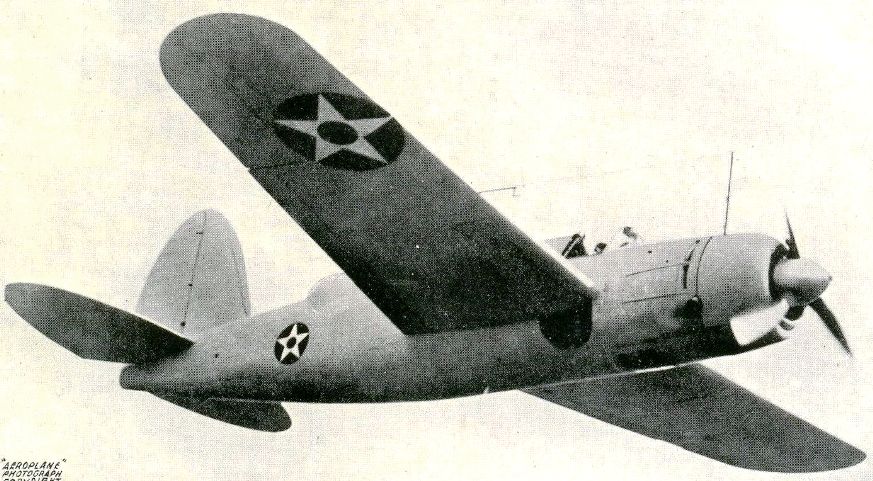
Brewster Bermuda aircraft. See above story
1939. Bruce Lancaster and Lowell Brentano published their epic novel of nineteenth-century Bermuda life, Bride of a Thousand Cedars. Here was a society where good had prevailed over bad, where the plantation house didn’t have to go up in flames. “I tell you, Sally,” the family patriarch tells his daughter, “we live in the best colony in the Empire….We may not have the plantations that young Hyatt [an American from the South] was bragging about, but we’ve no slaves either.”
1939. Piggly Wiggly began operating in Bermuda, copying the name from an American operation. It was started by the Crisson family and remained theirs until 1946.
1939. Bermuda's Governor, Lieutenant General Sir Reginald John Thoroton Hildyard, KCB, CMG, DSO (born 11 December 1876 – died 29 September 1965) after retiring from the British Army, who had been on active service in the second Boer War and World War 1, who had arrived in 1936, resigned his post in frustration. It was because the Bermudian Parliament had refused for all three years since his arrival to allow him a motor car (motor vehicles had been banned in Bermuda ever since, in the very early 1900s, a successful petition had been signed by numerous Bermudians and visitors including Mark Twain and Woodrow Wilson). At that time, Bermuda was the only British territory in the world where even the head of state, the Governor, as the King's representative in Bermuda, was denied a motor car.
1939. Boaz Island, once also
known as Gate's and Yates Island. 30 acres, became a hive of British military
activity. One of the six principal islands, much earlier connected to
mainland via Little Watford Bridge and Grey's Bridge, it was the site of a
brand-new Royal Naval Air Station, specifically for the Fleet Air Arm,
constructed here as part of British military preparations for World War 2. The
increased workload at HMS Malabar caused problems due to the limited space
available. With so many of the locally-based or in-transit Royal Navy warships
carrying catapult-launched seaplanes such as the Hawker Osprey, Fairey Seafox
and Supermarine Walrus seaplanes, the need for prompt, efficient and spacious
aircraft maintenance was a high priority. Thus, the new station was built. It
had two good-size hangers and launching ramps on either side of the island and
they allowed continuous operation in any wind direction. With the Battle of the
Atlantic over, the station was reduced to care and maintenance status in 1944.
Some remnants still survive. The ferry service to and from here finally
ceased in May 2005. The nearest surviving one is Watford Bridge. Bus routes # 7
(Dockyard) and # 8 stop in the immediate area.
![]()
History & daily newspaper
reports
Authored,
compiled, website designed, researched and webmastered by Keith A. Forbes. Last updated
05/08/2024.
Multi-national © 2024. All Rights Reserved